Bill and Melinda Gates Foundation
description: a private charitable foundation established by Bill and Melinda Gates
122 results
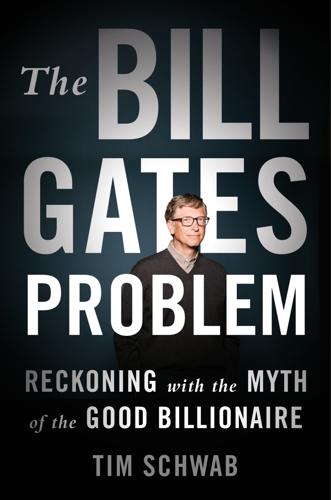
The Bill Gates Problem: Reckoning With the Myth of the Good Billionaire
by
Tim Schwab
Published 13 Nov 2023
“As Zyomyx’s largest equity holder”: Price, “Eyes Wide Open,” 34. “Probability of success is low”: Price, “Eyes Wide Open,” 34. acquired dozens of patents (and patent applications): U.S. Patent Reel, Frame 040775/0094, December 30, 2015, Assignment of Patents from Zyomyx to Bill and Melinda Gates Foundation. Stemcell Technologies: U.S. Patents 7998696, 8304203, and 8765391, Assignment of Patents from Bill and Melinda Gates Foundation to Stemcell Technologies Canada, Reel/Frame 040405/0749, May 31, 2016. a 2019 charitable grant: The Gates Foundation’s grant records show a $2.9 million donation to Stemcell Technologies “to develop optimized methods for the generation of antibody producing B-cells from stem cells to be used to protect against infectious diseases in the developing world.”
…
No R&D treaty has been enacted: Soumya Swaminathan et al., “Reboot Biomedical R&D in the Global Public Interest,” Nature 602, no. 7896 (February 2022): 207–10, https://doi.org/10.1038/d41586-022-00324-y. CHAPTER 5: TRANSPARENCY glass-heavy design: “Bill and Melinda Gates Foundation,” NBBJ, https://www.nbbj.com/work/bill-and-melinda-gates-foundation. headquarters’ opening in 2011: Kristi Helm, “The New Gates Foundation Headquarters Reflects Charity’s Roots—and Reach,” Seattle Times, May 21, 2011. the architecture’s openness: Note: Curiously, the New York Times review of the building noted that the foundation had also banned whispering inside the headquarters.
…
“IAVI Acquires Aeras TB Vaccine Clinical Programs and Assets”; “Research Priorities,” Bill & Melinda Gates Medical Research Institute. “performative layoffs”: “Bill & Melinda Gates Foundation Reviews,” Glassdoor, July 1, 2022, https://www.glassdoor.com/Reviews/Bill-and-Melinda-Gates-Foundation-Reviews-E9097.htm. “blind to the costs of this churn”: “Bill & Melinda Gates Foundation Reviews,” Glassdoor, May 29, 2022, https://www.glassdoor.com/Reviews/Bill-and-Melinda-Gates-Foundation-Reviews-E9097.htm. Vanity Fair: Eichenwald, “Microsoft’s Lost Decade.” “Micro(soft) Managing”: Rachel Schurman, “Micro(soft) Managing a ‘Green Revolution’ for Africa: The New Donor Culture and International Agricultural Development,” World Development 112 (December 1, 2018): 180–92, https://doi.org/10.1016/j.worlddev.2018.08.003.

No Such Thing as a Free Gift: The Gates Foundation and the Price of Philanthropy
by
Linsey McGoey
Published 14 Apr 2015
Ghana has been polio-free for ten years, and there have been no recorded child deaths from measles since 2002.6 A journalist at the scene points out that not many of the nurses or patients at the Ahentia health clinic seem to know who Gates is. ‘These are the countries where I’m the least known. I mean, nobody knows me here’, Gates says to a reporter. ‘Maybe in the capital’, he adds, ‘but that has nothing to do with why we do the work’.7 Why does he do the work? It’s a question that’s emerged time and again as the Bill and Melinda Gates Foundation, the most powerful philanthropic organization in the world, outspends the donations that Rockefeller, adjusted for today’s dollars, made over his entire lifetime. Today, unlike Rockefeller facing sceptical members of Congress 100 years ago, the Gates Foundation commands considerable public support, fuelled by celebrity accolades from, at times, unlikely sources.
…
As he stated to me: ‘It’s incontestable that under Gates’s leadership Microsoft exercised its monopoly power to unfairly stifle competition. This was the main finding of fact in the US Department of Justice anti-trust case against Microsoft. The resulting Gates fortune, the majority of which is now being distributed by the Bill and Melinda Gates Foundation, was accumulated in some measure through ill-gotten means’.13 What might nineteenth-century observers have made of today’s philanthropists? Chances are, many would have cast a cynical eye over the largesse of individuals such as Gates. One of the most influential early philanthropists was Andrew Carnegie.
…
What evidence do we have that new trends such as social entrepreneurship, microfinance, and social investing are helping to alleviate poverty, foster more educational opportunities, or access to better health services? The answer is: less than you might think. In the second half of the book I focus on the Bill and Melinda Gates Foundation. I offer snapshots of the foundation’s influence in nations such as Ghana and the US, where health activists and parent groups both praise and lament the foundation’s presence. I examine the remarkable way that the Gates Foundation has transformed US public education in little more than a decade.

The New Prophets of Capital
by
Nicole Aschoff
Published 10 Mar 2015
They place the burden of success on the individual, in the process disguising societal shortcomings as personal failures and blinding us to collective visions of change that challenge alienation and inequality. Chapter 4 moves to issues of global poverty and educational reform in the United States through an analysis of the philosophy and practices of the Bill and Melinda Gates Foundation. The confidence and sophistication of the Gates message is seductive. They have powerful connections and deep pockets. They seem not only to know how to fix problems, but also appear to be already doing the fixing. However, instead of alleviating the ills of capitalist markets, the Gates Foundation’s policies deepen the reach of capitalist markets to provision of basic human needs such as healthcare and education, and hence reinforce the divide between the rich and the poor.
…
See Kathi Weeks in The Problem with Work on the power of the demand. 4 The Gates Foundation and the Rise of Philanthrocapitalism “Never doubt that a small group of thoughtful, committed citizens can change the world. Indeed, it is the only thing that ever has.” Cultural anthropologist Margaret Mead may or may not have said this, but it is Melinda Gates’s favorite quote, and it aptly sums up the philosophy of the Bill and Melinda Gates Foundation. The Gateses are changing the world. Since its founding in 1997, the Gates Foundation has transformed the medical and research fields for diseases like malaria and pneumonia and is at the center of an education reform movement in the United States. The Gates’s recent efforts to publicize philanthropy, and their ability to leverage their wealth for social change, are encouraging other billionaires to commit to the Giving Pledge to donate the majority of their wealth to charitable causes.
…
Williams, “Gone Too Soon: What’s Behind the High Infant Mortality Rate,” Stanford Medicine, Fall 2013; David Cecere, “New Study Finds 45,000 Deaths Annually Linked to Lack of Health Insurance,” Harvard Gazette, September 17, 2009. 31Tom Paulson, “Gates Foundation Won’t Take a Stand on Universal Health Coverage,” Humanosphere, April 15, 2014;Carol Welch and Clint Pecenka, “Health in the Post-2015 Development Agenda,” Seattle: Bill and Melinda Gates Foundation, 2013. 32Riley, “Was the $5 Billion Worth It?” 33Bill Gates, “How Teacher Development Could Revolutionize Our Schools,” Washington Post, February 28, 2011. 34A longer version of this vignette is available at www.jamievollmer.com/blueberries. 35Bill Gates, TED Talk, 2009. 36Kathleen Megan, “Charter School Group Gears Up to Lower Suspension Rate,” Hartford Courant, July 8, 2013. 37Erik.

The Cult of Smart: How Our Broken Education System Perpetuates Social Injustice
by
Fredrik Deboer
Published 3 Aug 2020
Enforcing Consensus: The Example of the Gates Foundation There are many reasons that the simple fact of inherent talent differences so often goes unspoken in education policy circles. As I’ve suggested, both major ideological tendencies in American life have reason to avoid the topic. But there are basic dynamics of the policy funding mechanism that contribute to this problem, and there’s no better example than the Bill and Melinda Gates Foundation. In grad school, I worked as a research assistant for the late Dr. Linda Bergmann, a brilliant academic and good friend whom we lost far too early. The project involved an effort to create an online social network where students could practice their academic writing. I confess I didn’t think much of the project itself, as it seemed to combine the worst kinds of ed-tech hype and a deep dorkiness that would prevent real teenagers from wanting to use it.
…
I was inspired, at the time, by the growing perception that the Common Core was being forced from above, without proper vetting or public debate, and in a way that cut the most important stakeholders—parents and teachers—out of the loop. More, I was interested because of the influence of the Bill and Melinda Gates Foundation on this sweeping, rapid adoption. Since I study educational and pedagogical research, and talk with ed researchers in person and online, the Gates Foundation is unavoidable. Their influence is everywhere, and many people worry about what that means for the future of American education.
…
Casey Foundation anti-capitalist thinking anti-communist legislation anti-democratic rule anti–Iraq War movement anti-poverty programs anti–Vietnam War movement Asian Americans athletic ability automation Baby Boom bachelor’s degree backfill Battle Hymn of the Tiger Mother (Chua) behavioral genetics and combating pseudoscience and denial of race science and equal opportunity and heritability of intelligence and individual versus group differences and phrenology Three Laws of Behavioral Genetics unshared environment being a person under socialism benchmarks and criterion referencing and No Child Left Behind and “no excuses” model of education Bergmann, Linda bias selection bias survivorship bias Big Ten schools Bill and Melinda Gates Foundation and Common Core influence of Bill of Rights Black Death “blame public schools” school of thought “blame the teachers first” school of thought and education reform movement and meritocracy and standardization Blank Slate, The (Pinker) blank-slate philosophy of education and absolute learning and behaviorism cruelty of and Dewey, John and equality of opportunity and matching schools to students and relative learning and tracking Booker, Cory Breitbart Brookings Institution Brown v.
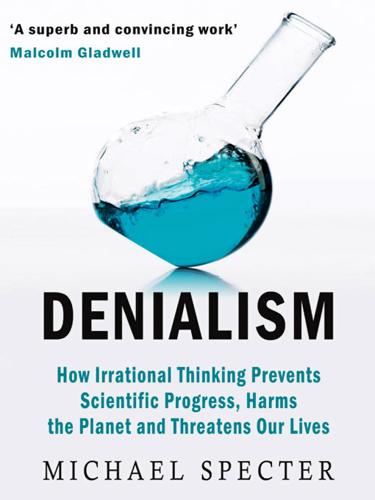
Denialism: How Irrational Thinking Hinders Scientific Progress, Harms the Planet, and Threatens Our Lives
by
Michael Specter
Published 14 Apr 2009
Until then, severe Hib infections would typically sicken twenty thousand children under the age of five every year in the United States, resulting in about a thousand deaths. Of the five Minnesota cases, three—including the child who died—were infants whose parents had refused to vaccinate them. There has been a concerted international effort, led by the Bill and Melinda Gates Foundation and the World Health Organization, to eradicate polio. But success has been elusive, largely because of opposition to vaccines in northern Nigeria. In the summer of 2003, Muslim clerics banned polio vaccinations, claiming that the drugs were a Western plot to spread HIV and sterilize Muslim girls.
…
In 1986, pharmaceutical companies abdicated much of the American vaccine market, because lawsuits made it impossible for them to profit. They don’t spend much money trying to cure visceral leishmaniasis either. It’s a parasite we don’t get in Manhattan, and the millions in the Third World who do suffer from it can’t pay for the treatment. The market doesn’t solve every problem. That is one reason why the Bill and Melinda Gates Foundation has spent billions of dollars to vaccinate children who could never otherwise see a doctor. As it happens, the foundation (and others) has now embarked on a similar program that focuses solely on cassava, which is the primary source of calories for nearly a billion people—250 million of whom live in sub-Saharan Africa.
…
By 2003, the team reported its first success, publishing a paper in Nature Biotechnology that described how they constructed that pathway—a chemical circuit the cell needs to do its job—by inserting genes from three organisms into E. coli, one of the world’s most common bacteria. The paper was well received, but it was only the first step in a difficult process; still, the research helped Keasling secure a $42.6 million grant from the Bill and Melinda Gates Foundation. It takes years, millions of dollars, much effort, and usually a healthy dose of luck to transform even the most ingenious idea into a product you can place on the shelf of your medicine cabinet. Keasling wasn’t interested in simply proving the science worked; he wanted to do it on a scale that would help the world fight malaria.
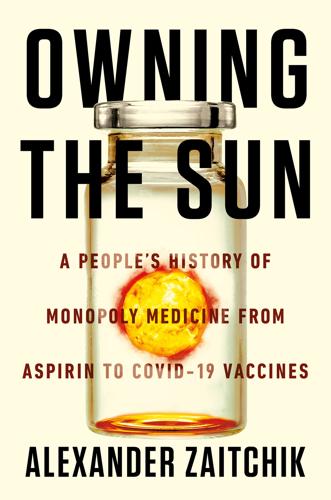
Owning the Sun
by
Alexander Zaitchik
Published 7 Jan 2022
Echoing previous statements by his colleagues, he pointed to specific evidence of his industry’s commitment to ensuring “access and equity.” The evidence provided by the executives was something called the ACT Accelerator. This initiative, they said, featured the partnership sought by the Pool, bringing together industry, governments, and major foundations, notably the Bill and Melinda Gates Foundation and its subsidiaries, Gavi, the Vaccine Alliance, and the Coalition for Epidemic Preparedness Innovations. Each executive in turn invoked support for the Accelerator as proof of their humanity and dedication to ending the pandemic as quickly as possible. The Accelerator’s existence, stated Cueni, obviated the need for additional efforts and initiatives.
…
“He has immense power,” says James Love of Knowledge Ecology International. “He can get you fired from a UN job. He knows that if you want to work in global public health, you’d better not make an enemy of the Gates Foundation by questioning its positions on intellectual property and monopolies.” On March 10, 2020, the Bill and Melinda Gates Foundation announced a partnership with the Wellcome Trust and Mastercard. The three were combining forces to seed a new mechanism called the Therapeutics Accelerator, to identify potential treatments for the novel coronavirus that would be pronounced a pandemic the following day. An initiative that performed double duty as a social branding exercise for a financial services company chimed with Gates’s signature management-consulting approach to corporate philanthropy, an early signal he would approach the looming global crisis with the same old toolkit.
…
Though focused on defending Microsoft from antitrust suits on two continents, he was in his final months as the company’s CEO. As his business reputation suffered high-profile beatings from U.S. and European regulators, he began the process of moving on to his second act. In 2000, he would merge two smaller foundations into the Bill and Melinda Gates Foundation and commence an unlikely rise to the commanding heights of global development and public health. Gates debuted in this world during the May 1999 World Health Assembly. Big Pharma was richer than ever, but its lawsuit against the Mandela government had left it more hated than ever, and more exposed.
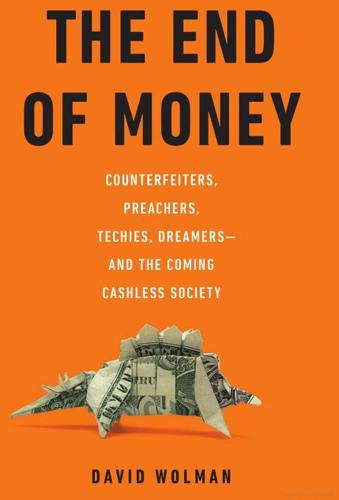
The End of Money: Counterfeiters, Preachers, Techies, Dreamers--And the Coming Cashless Society
by
David Wolman
Published 14 Feb 2012
Yet the technology powering this brief transaction is being heralded as one of the twenty-first century’s most promising weapons in the battle against poverty. For cash, it could prove to be the angel of death. UPHILL FROM SEATTLE’S Space Needle, Ignacio Mas has just finished a call in his glassy office at the headquarters of the Bill and Melinda Gates Foundation. In recent years, the Gates Foundation has committed tens of millions of dollars to support a kind of financial innovation that has nothing to do with Wall Street’s latest Byzantine products, and everything to do with the humble cellphone program Kumar used to deposit his 1,000 rupees.
…
See also Cash: cash transactions on planes Airtel and Aircel Amazon.com American Council of the Blind American Red Cross Anonymity Apps Argentina Ariely, Dan ATMs cash deposits into Australia Azerbaijan Bahrain Bancor currency Bangladesh Bank of England Bank Museum Bankruptcy Banks bailouts bank robberies central banks (see also individual central banks) confidence in cost of bank transactions failures Free Banking Era international banks investment bankers issuances of notes by mobile banking origin of modern banking participation in banking (see also Cellphones: used for money transactions) on strike in Ireland and toxic assets Barclays Barcodes Bartering. See Swapping BBC Bear Stearns Behavioral economics Belgium BEP. See United States: Bureau of Engraving and Printing BerkShare currency Bernanke, Ben Bhat currency BHP Billiton Biases Bible Bill and Melinda Gates Foundation Bill of Rights Bills of credit Biometric devices Birch, Dave Bitcoin Black market Blind/visually impaired Americans Bling. See also Jewelry Bloomberg News Boca Raton, Florida Boggs, J.S.G. Borges, Jorge Luis Brazil Bribery Brinks Britain De La Rue printing firm in Digital Money Forum in London transit system Royal Mint Serious Fraud Office See also Bank of England Brixton Pound currency Budapest Buffett, Warren Bulgaria Bush, George W.
…
See also Euro currency Exchange rates Exchange systems Expense accounts Facebook Farmers FBI Federal deposit insurance Federal Reserve Federal Reserve Bank of Chicago Ferguson, Niall Financial crisis of 2007-2008 See also Debt: debt crises Finland Fisher, Irving Flu virus Foreign Affairs Fort Knox 401K plans France Oberthur Fiduciaire printing firm in Franklin, Benjamin Franklin Mint Freud, Sigmund Friedman, Milton Friedman, Thomas Fungibility Fureai kippu currency Ganz, David Gates, Bill. See also Bill and Melinda Gates Foundation Gawker Geithner, Timothy Georgia Guidestones Germany Giesecke & Devrient printing firm in Gift cards Globalization. See also Currencies: global Gmail Gold amount mined amount owned by central banks gold/silver bugs goldsmiths gold standard price of problems with virtual GoldMoney Google Google Wallet Graft Granite deposits Grant, Ulysses Great Depression Greece Gregory, Bud Greider, William Gross national product Guest, Glenn Guilder currency Hackers Hahl, Robert Haiti Hawaii Hawaiian Dala.

100 Plus: How the Coming Age of Longevity Will Change Everything, From Careers and Relationships to Family And
by
Sonia Arrison
Published 22 Aug 2011
The resulting, incredibly important microbe could turn sugar into artemisinin, a powerful antimalaria drug. Making artemisinin used to be a slow and expensive process, but now the drug can be made more quickly and for pennies per dose. Malaria kills more than 1 million people every year, so Dr. Keasling’s invention, funded by the Bill and Melinda Gates Foundation, will make a huge difference, particularly in poorer regions of the world where malaria is more common. This feat earned Dr. Keasling the honors of being selected as Discover magazine’s “scientist of the year” in 2006 and being awarded the first annual Biotech Humanitarian Award by the Biotechnology Industry Organization in 2009. 50 Yet how does an engineer go from making an antimalaria drug to helping produce fuel for cars and jets?
…
In viewing the world as it is now, in which greater life expectancies have already allowed individuals to live long enough to reinvent themselves after being a CEO or even president of the United States, his question is easily answered. What is Bill Gates doing now that he has finished being CEO of Microsoft? He has dedicated his life to improving the world for others through the Bill and Melinda Gates Foundation. He is a brilliant individual, and the world is fortunate to have him still playing an active part. Not only has he been instrumental in directing researchers to find a way to beat malaria, but he is also thinking hard about how to solve the world’s energy problems. Similarly, Jimmy Carter, Bill Clinton, and George W.
…
Stephen Bailey, Ronald Bangladesh Banks Barzilai, Dr. Nir Bathory, Elizabeth Becker, Ernest Becker, Gary Belief systems and College Graduates (table)(table) Belkin, Lisa Bequests Berger, Peter Bergholdt, Stinne Holm Bezos, Jeff Bhatia, Dr. Mick Bible Bicentennial Man, The (Asimov) Bill and Melinda Gates Foundation. See also Gates, Bill Biofuels Biogerontology Bioidentical hormone replacement therapy Biology bioinformatics do-it-yourself biology (DIY) as engineering project(see also Human Genome Project; Tissue engineering) as information technology new/smart biology synthetic biology Biotech Humanitarian Award Biotechnology, access to “Birthmark, The” (Hawthorne) Birth rate.
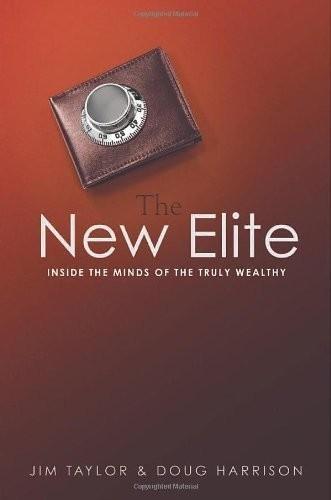
The New Elite: Inside the Minds of the Truly Wealthy
by
Dr. Jim Taylor
Published 9 Sep 2008
In 2006, he decided to give 192 The New Elite away 85 percent of his wealth during his lifetime to five charities, after long suggesting that his billions would be used for philanthropy after his passing. Of course, the remaining 15 percent of his fortune is still over $7 billion, so his kids won’t exactly be living in poverty (plus the fact that three of the foundations receiving his money are run by his children; the bulk goes to the Bill and Melinda Gates Foundation). Still, you get the idea. Buffett believes that when kids grow up with all the advantages of wealth, substantial inheritances aren’t good for them, or for society at large. ‘‘[I]t’s neither right nor rational to be flooding them with money. In effect, they’ve had a gigantic head start in a society that aspires to be a meritocracy.
…
Google’s philanthropic efforts are hardly alone in being the subject of increasing scrutiny, particularly because many charitable endeavors spend just 5 percent of their assets each year—the minimum to avoid paying taxes—while investing the remaining 95 percent. In 2007, the Los Angeles Times explored this conflict as it relates to the Bill and Melinda Gates Foundation.11 Rightly known for innovation and good deeds throughout the world, the foundation has helped curb the spread of preventable diseases such as polio, measles, and malaria, often tackling public health issues ignored by large pharmaceutical companies because of their lack of profit potential.
…
Index Abercrombie & Fitch, 179 Abramovich, Roman, 58, 161 accountants, role in money issues, 74 achievement, psychology of, 170–171 Adelson, Sheldon, 159 advertising, 218, 219 affluence, mainstreaming of, 93–96 affluent, 229 Affluent Teen Survey, 170 after-tax income, 1979 to 2004, 203–204 AgencySacks, 18 agrarian wealth, 22–24 air transportation, 216 Albrecht, Karl, 160 Allen, Paul, 158 Amazon.com, 140 Ambani, Anil, 160 Ambani, Mukesh, 160 amenities, in luxury properties, 2 America Online, 117 American dream, 41, 208 American Express Publishing, 14, 228 American Express Publishing/Harrison Group Study on Affluence and Wealth in America, 230 American Outfitters, 179 Anderson, Lyle, 1–2 Annual Survey of Affluence and Wealth in America, 2007, 228–230 anxiety, 134, 137 apprenticeship, 118–120 arc of maturation, 115 Architectural Digest, 142, 152 Aristotle, Nicomachean Ethics, 205 Arnault, Bernard, 160–161 Arnold, Matthew, 199 Astor, Caroline Webster Schermerhorn, 24 Astor, John Jacob, 24 Atlantic Monthly, 152 Atlas Shrugged (Rand), 21 automobiles, purchase decisions, 80, 83 automotive companies, 36 baby boomers, aging of, 185–186 Baer, Julius, 215 Bain Capital, 213 bankruptcy, 117 bargain shopping habits, 90 Beckham, Victoria, 99 Beethoven, Ludwig van, 169 Belter, John Henry, 106 Beneteau, 215 Beretta, 101, 102 233 234 Index Berkshire Hathaway, 7 Best Buy, 78, 179 Beverly Hillbillies, 120 Bezos, Jeff, 140 ‘‘big business,’’ 32 Big Business: A New Era (Lilienthal), 32 Bill and Melinda Gates Foundation, 192, 196 billionaires, 6–7 global growth in, 157 Bipartisan Campaign Reform Act of 2002, 211 Bloomberg, Michael, 211 Bloomingdale’s, 78 boards international memberships, 163–164 nonprofit, 194 Boeing, 32 Bogart, John B., 58 Bon Appétit, 142 brands, 33 acquisition, 94–95 enthusiasm drivers, 110 international, 164 longevity, 101–102 origin point, 102 and quality, 109 teen views of, 176–177 see also luxury brands Breitling watches, 108 Brin, Sergey, 196 Bronson, Po, The First 20 Million Is Always the Hardest, 7 Bryan, William Jennings, 29 Buffett, Warren, 6–7, 28, 38, 153, 158– 159, 191–192 bull market, 7–8 Bündchen, Gisele, 165 Bush, George W., 207 business, multinational, 162–164 business travelers, 77, 146 Business Week, 66 capital markets, tax code and, 37 capitalist mind-set, of mavericks, 144 Carnegie, Andrew, 15, 26, 185 Carnegie, Dale, How to Win Friends and Influence People, 34 Cartier, 101, 103, 179 Casey-Kirschling, Kathleen, 185 Chanel, Coco, 98, 102 charitable social network, 151 charities contributions by category, 191 directors and, 147 mavericks and, 144 membership on boards, 194 patrons and, 149 transformational giving, 190–194 wrestlers’ contribution to, 137 child labor laws, 26 childhood of wealthy, 43–44, 46 children, 169–172 financial education, 181–182 impact of wealth, 138–139 middle-class mind-set transmission to, 172–176 Christies, 101 Chrysler, 101 Cigar Aficionado, 64, 146 Circuit City, 179 class conflict, 205–209 CLEWI (Cost of Living Extremely Well Index), 215 Clorox, 33 Coca-Cola, 101–102 collectors, wealthy as, 121 companies, financing new, 113–114 complexity, 70 ‘‘concierge doctors,’’ 215–216 Condé Nast Traveler, 66, 142 confidence, 49–50 conspicuous consumption, 2, 58–59, 61, 121, 136 consumer markets, creating, 32 corporate boards, international memberships, 163–164 corporate wealth, 30–35 Corzine, Jon, 211 Cost of Living Extremely Well Index (CLEWI), 215 Costco, 78, 88, 94, 179 coupons, 79 Index 235 Cribs, 57–58 Cummings, Nathan, 196–197 currencies, 165 Curtco Media, 14 customer service, 91 estate planning, 74 Euro, vs. dollar (U.S.), 165 excess, images of, 15–16 exit plan for business, 131 ExxonMobil, 27 Deluxe (Thomas), 94 demand, creating, 32–33 demand-auction economy, 87 democratization of luxury, 95 Democrats, 151, 209–210 Departures, 146 Deripaska, Oleg, 161 determination, 47 Dickens, Charles, Great Expectations, 15 directors lifestyle, 128, 145–148, 146 discretionary income, 10 Disney, Walt, 102 dollar (U.S.), vs.
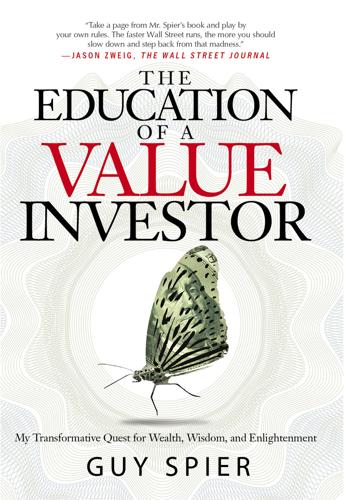
The Education of a Value Investor: My Transformative Quest for Wealth, Wisdom, and Enlightenment
by
Guy Spier
Published 8 Sep 2014
He talked to us about his thinking in setting up charitable foundations for each of his three children, and he added that “it’s usually not a good idea to wait” to give money back to society: it’s best to go ahead and do it now, he said, instead of compounding the money and giving a larger sum later. I joked that he was technically the least wealthy person at the table, since he’d already pledged most of his Berkshire Hathaway shares to the Bill and Melinda Gates Foundation; as a result, he was now working virtually for free, much like GLIDE’s founder, Cecil Williams. He grinned happily and said that was “absolutely right.” He seemed glad that I understood how little he cares about personal enrichment and how much he cares about using his wealth to help others.
…
So, paradoxically, my attempts at selflessness may actually be pretty selfish. Warren and Mohnish, who are two of the smartest guys on earth, clearly understand this. As an investor and a businessman, Warren’s achievements are almost inconceivable. Yet his greatest legacy may well be his philanthropic work in supporting the Bill and Melinda Gates Foundation, which could affect millions of people. Likewise, Mohnish hasn’t devoted his considerable gifts to the single-minded pursuit of wealth. His Dakshana Foundation is already transforming the lives of countless young Indians, giving them opportunities that might otherwise be unthinkable.
…
See also letters to shareholders Aquamarine Chemicals, 42–3 Aquamarine Fund assets reach $50 million, 49–50 and Bear Stearns, 86–7 creation and naming of, 43 cumulative return, 2 and fee structures, 46–7 and financial crisis of 2008–2009, 86–99 investment of net worth in, 46 and Lehman Brothers, 87–8 Ariely, Dan, 102 attention deficit disorder (ADD), 48, 107–8, 155 authenticity, 33, 42, 63, 66–7, 76, 81, 84, 132 Bak, Per, 105 Bank of America, 126–7 Bear Stearns, 86–7 behavioral finance, 60, 102–9, 115, 117–18, 125, 135–8, 140–1, 143, 147–50, 154, 191 behaviorism, 28 Benello, Allen, 112, 144 Berkshire Hathaway, 46, 59, 82, 142, 192 annual meetings, 41, 61, 71–2, 178 annual reports, 38–9, 63, 142 and Buffett’s salary, 73, 116 as a company rather than a fund, 94–5 decentralized structure of, 81 holdings, 40–1, 78, 125, 137, 153 and the tech bubble, 71 textile operations, 17–18 See also Buffett, Warren Bernanke, Ben, 87 Bettger, Frank, 6 Bill and Melinda Gates Foundation, 78, 185 Black Swan: The Impact of the Highly Improbable, The (Taleb), 109 Blodget, Henry, 17 Bloomberg terminal/monitor, 2, 52, 87, 116–19, 135–6, 146 Blumkin, Rose, 41–2, 177 Bogdanor, Vernon, 25 Bond Markets, Analysis and Strategies (Fabozzi), 18–19 Bosanek, Debbie, 82, 176, 181 Boulder Brands, 167–70 Brandt, Jonathan, 144, 178 Braxton Associates, 28–9 bridge, 122, 124–8, 130 Brookfield Office Properties, 97–8 Buffett, Howard, 116 Buffett, Susan, 75, 79, 174–5 Buffett, Warren, 37, 53, 55, 90 annual Berkshire salary, 73, 116 and bridge, 124 on debt, 93 father of, 116 on fear, 85 and fee structures, 46–7, 67, 74 and financial crisis of 2008–2009, 90 on first rule of investing, 52 generosity of, 115, 175–6, 178–9, 185 guest talk at HBS, 28–30, 42 and the “inner/outer scorecard,” 26, 65, 80–1 integrity of, 36 and investment decisions, 17–18, 24, 53, 90, 127, 136–7, 148, 165 on learning from mistakes, 2 Letters to Shareholders, 39, 63, 93 as life-long learner, 29–30 on love, 175 Lowenstein’s biography of, 19, 30, 63, 116, 142 lunch with, 1–2, 22, 69–84, 98 and management, 110–11, 163 mistakes of, 17–18, 153 office of, 35, 95, 111–17, 143 playfulness of, 116, 121–2, 131 preface to The Intelligent Investor, 19, 30 on reputation, 18 as role model, 39–40, 46, 63, 71, 83, 96, 113, 115–16, 122, 176 Schroeder’s biography of, 83, 142 “The Superinvestors of Graham-and-Doddsville,” 37, 82 “Too Hard” box of, 116, 170, 180 and wealth, 78, 82, 188 See also Berkshire Hathaway Buffett: The Making of an American Capitalist (Lowenstein), 19, 30, 63, 116, 142 Buffett-Pabrai Way of doing business, 171–85 Burlington Coat Factory, 36 Burlington Northern Santa Fe, 137 Burns, C.
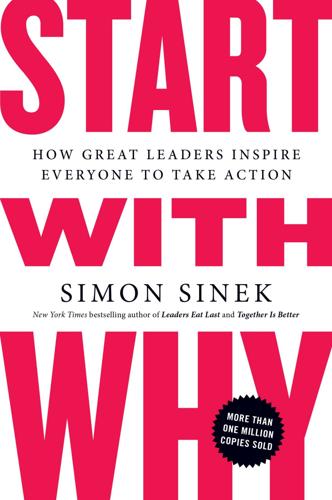
Start With Why: How Great Leaders Inspire Everyone to Take Action
by
Simon Sinek
Published 29 Oct 2009
Living through the computer revolution, he saw the computer as a perfect technology to help us all become more productive and achieve our greatest potential. That belief inspired his vision of a PC on every desk to come to life. Ironic considering Microsoft never even made PCs. It wasn’t just WHAT computers did that Gates saw the impact for the new technology, it was WHY we needed them. Today, the work he does with the Bill and Melinda Gates Foundation has nothing to do with software, but it is another way he has found to bring his WHY to life. He is looking for ways to solve problems. He still has an undying belief. And he still believes that if we can help people, this time those with less privilege, remove some seemingly simple obstacles, then they too will have an opportunity to be more productive and lift themselves up to achieve their great potential.
…
Good Successions Keep the WHY Alive There were three words missing from Bill Gates’s goodbye speech when he officially left Microsoft in June 2008. They are three words he probably doesn’t even realize need to be there. “I’ll be back.” Though Gates abdicated his role as CEO of Microsoft to Steve Ballmer in 2000 to lend more time and energy to the Bill and Melinda Gates Foundation, he still maintained a role and a presence at the Microsoft headquarters in Redmond, Washington. His plan was always to completely leave the company in the care of others, but like a lot of founders, Gates forgot to do one thing that would allow his plan to work. This one oversight could have a devastating impact on Microsoft and may even require him to come back someday to right the ship he built.
…
Homes Have Outhouses than TiVos”: Bradley Johnson, “Analysts Mull Future Potential of PVR Ad-Zapping Technology,” Advertising Age, November 4, 2002, http://people.ischool.berkeley.edu/~hal/Courses/StratTech09/Lectures/Networks/Articles/tivo-losing-money.html. 128 “There are two types of laws”: Martin Luther King Jr., “Letter from a Birmingham Jail,” http://www.thekingcenter.org/prog/non/Letter.pdf. Chapter 8: Start with Why, but Know How 133 Steve Ballmer, the man who replaced Bill Gates as CEO of Microsoft: “Steve Ballmer Going Crazy,” March 31, 2006, http://www.youtube.com/watch?v=wvsboPUjrGc. 134 the Bill and Melinda Gates Foundation: http://www.gatesfoundation.org/Pages/home.aspx. 135 Raised in Ohio, sixty miles from Dayton, Neil Armstrong grew up: Nick Greene, “Neil Armstrong Biography: First Man of the Moon,” About.com, http://space.about.com/od/astronautbiographies/a/neilarmstrong.htm. 138 What Ralph Abernathy lent the movement was something else: “Abernathy, Ralph David (1926–1990),” Martin Luther King, Jr., Research and Education Institute, http://mlk-kpp01.stanford.edu/index.php/kingpapers/article/abernathy_ralph_david_1926_1990/. 140 The pessimists are usually right: Thomas Friedman, The World Is Flat: A Brief History of the 21st Century.
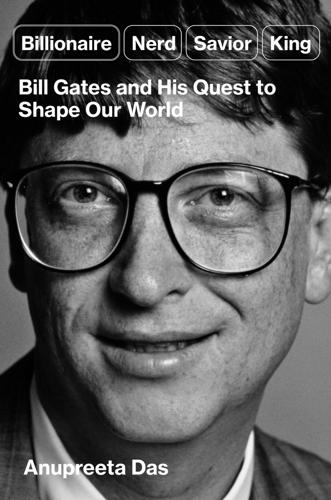
Billionaire, Nerd, Savior, King: Bill Gates and His Quest to Shape Our World
by
Anupreeta Das
Published 12 Aug 2024
Over the next 20 years, Gates conducted a global philanthropic orchestra of such scale and ambition that it shook up multilateral organizations, astounded academics and activists, and transformed him in the public eye into a tireless savior of the poor. The primary vehicle for his philanthropy is the Gates Foundation, formerly known as the Bill and Melinda Gates Foundation, which was founded in 2000 with initial bequests of $22 billion in Microsoft stock. Six years earlier, on New Year’s Day, Gates had married French Gates, whom he had met at Microsoft and who was eight years younger. The auburn-haired engineer, a native of Dallas and valedictorian of her all-girls Catholic school, was as even-tempered as Gates was combustible, and as restrained in her manner as he was explosive.
…
The former couple donated $20 million to Duke University, French Gates’s alma mater. They gave money to the Seattle Public Library and the city’s theater endowment fund. Gates made other gifts sporadically, including $2 million to aid refugee health and $50 million to PATH, a Seattle-based global health organization, to help with cancer research. The Bill and Melinda Gates Foundation came to life at the turn of the century after Gates merged his two separate philanthropic efforts and added his then wife’s name. Its initial bequest was about $22 billion through transfers of Microsoft stock, which meant that the foundation had to give away hundreds of millions of dollars annually in keeping with U.S. law governing nonprofits.
…
The farm, which sat on land owned by Gates, was put on probation after the alleged fraud came to light, and although it didn’t pay a fine, it lost $100,000 in spoilage during a probe by the state, according to Bloomberg.4 When Larson joined in 1994, he created Cascade to manage the former couple’s personal fortune. In 2000, after Gates stepped down as the chief executive of Microsoft, the two foundations that he had created in the 1990s merged to form the Bill and Melinda Gates Foundation, and he began directing billions of dollars’ worth of his shares into it. The entity that oversaw Cascade and the foundation’s assets came to be called Bill Gates Investments, updated in 2015 to Bill and Melinda Gates Investments to reflect her growing role. In June 2021, after Gates and French Gates got divorced, the BMGI name was retired, and the umbrella entity is now called Cascade Asset Management—the overseer of both Gates’s money and the endowment funds.

The Billionaire's Apprentice: The Rise of the Indian-American Elite and the Fall of the Galleon Hedge Fund
by
Anita Raghavan
Published 4 Jun 2013
Gupta, Government Exhibit 1853, Galleon April 2008 investment presentation attached to email from Ayad Alhadi to Fernando Lamas at UBS, April 18, 2008. In February, Rajaratnam hired Alhadi: US v. Gupta, Testimony of Ayad Alhadi, May 31, 2012. The Sberbank board position paid $525,000 in 2008: Duff McDonald, “Rajat Gupta: Touched by Scandal,” Fortune, October 1, 2010. In 2004, the Bill and Melinda Gates Foundation gave $47 million for AIDS in India: “Bill and Melinda Gates Foundation’s Avahan Initiative Announces $47 Million in Grants to Combat HIV/AIDS in India,” press release, March 16, 2004, http://www.gatesfoundation.org/press-releases/Pages/grants-to-combat-hiv-aids-in-india-040316.aspx. In March, Gupta joined Alhadi for meetings in the Middle East with investors like the Abu Dhabi Investment Council: US v.
…
Besides sitting on the boards of American companies, Gupta also served on the boards of foreign companies. His best-paying directorship was as a board member for the Russian bank Sberbank, which paid him $525,000 in 2008. And he also participated in gilded charities, the kind that burnished his philanthropic résumé. He had been an adviser to the Bill and Melinda Gates Foundation since 2004, and as head of the board of its Indian AIDS initiative Avahan, which in Sanskrit means “call to action,” Gupta was credited with persuading the foundation to give $47 million for AIDS programs in India. If Rajaratnam was looking for someone to give Galleon global cachet, there was no one better than Gupta.
…
A few days before it was unveiled, Gupta took a leave of absence from his own private equity fund, New Silk Route. Soon after it was played in court, McKinsey moved to cut all its ties with its former managing partner. By the end of March, Gupta also stepped down as an adviser to the Bill and Melinda Gates Foundation, one of the last high-profile positions he still held. Unfortunately for Gupta, it was not the last time the jury would hear the tape. When it came time to cross-examine Kumar, John Dowd could not hide his disdain. Like an aging heavyweight fighter, the lumbering Dowd threw punch after punch with remarkable effect.

Hacking the Code of Life: How Gene Editing Will Rewrite Our Futures
by
Nessa Carey
Published 7 Mar 2019
If you’re a resident of a temperate region, a potential collapse in bat numbers is likely to matter more to you than if you live in the tropics and have lost family members to malaria. The attraction of the gene drive technologies that have been enabled by gene editing is the way they spread rapidly through a population after just a single introduction. This is why certain funders are investing large sums of money in this field. The Bill and Melinda Gates Foundation has invested $75 million in these technologies, and DARPA, the US Defense Advanced Research Projects Agency, has poured in $100 million. But it’s the very rapid spread and persistence of the gene drive approach that perhaps should worry us most. Once they’re out there in the wild, it will be very difficult to put the gene-edited mosquitoes back into the test tube.
…
INDEX A A&F University (Shaanxi) 1 adult haemoglobin 1 agave plant 1 Alicante, University of 1 Allergan 1 Alzheimer’s disease 1 amphibians, gene editing in 1 anaemia 1 animals gene editing in 1 healing power 1 antibiotics 1, 2, 3 antibodies, creation 1 antihistamines 1, 2, 3 Asimov, Isaac 1 aspartame 1 aspirin 1, 2, 3 Australia 1 autism 1 Avery, Oswald 1 axolotls 1 azathioprine 1 B bacteria drug production in 1 genetic engineering in 1 bases 1 bats 1 beers 1 bees 1 Belgian Blue cattle 1 Berg, Paul 1 beta-carotene 1 beta-interferon 1 Bill and Melinda Gates Foundation 1 biohackers 1 biological drugs 1 biological warfare 1 birth rates 1 blindness 1, 2 blood, feeding on 1, 2 blood transfusion 1 bloodstream 1 bone marrow 1, 2, 3 bovine tuberculosis 1 Boyer, Herbert 1, 2 brain 1 Breakthrough Prize in Life Sciences 1 breast cancer 1 Broad Institute (Cambridge, Massachusetts) 1, 2, 3 Brown, Louise 1 brown adipose tissue 1 buckeye butterfly 1 butterflies 1 C California, University of see University of California Cambridge, University of 1 cancer 1, 2, 3, 4 cane beetles 1 cane toads 1 carbon dioxide 1 carbon footprint 1 cardiovascular disease 1 Caribou Biosciences 1 cassava 1 cats 1 cattle 1, 2 Belgian Blue 1 Piedmont 1 Cayman Islands 1, 2 CCR5 1 Cell journal 1 Charpentier, Emmanuelle 1, 2, 3, 4 chickens, eggs 1 China 1, 2 Chinese Academy of Sciences 1 cholesterol 1 Church, George 1, 2 climate change 1, 2 clinical trials 1, 2 clonal raider ant 1 cloning 1, 2 coeliac disease 1 Cohen, Stanley 1, 2 Columbia University 1 congenital hypothyroidism 1 corneal transplants 1 Cornell University 1 Cosmo Bio 1 Creutzfeld-Jakob disease 1 Crick, Francis 1 CRISPR 1 CRISPR-Cas 1 2 CRISPR Therapeutics 1, 2 Curie, Pierre 1 cystic fibrosis 1 D DARPA 1 Darwin, Charles 1 DDT 1 deafness 1 death rates 1 dengue fever 1, 2 desertification 1 designer babies 1 detoxification 1 diabetes type 1 1 type 2 1 disability, who defines?
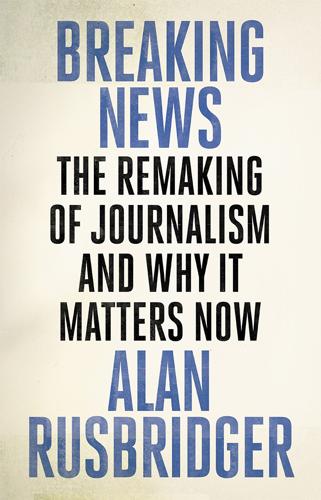
Breaking News: The Remaking of Journalism and Why It Matters Now
by
Alan Rusbridger
Published 14 Oct 2018
We partnered with NGOs and funded the project through reader donations and with help from Barclays Bank. One of the aims was to make the project a two-way one: i.e. we wanted to hear the voices of Katine residents rather than have them mediated through western journalists flying in from London. The experiment resulted in long-term funding for coverage of development issues from the Bill and Melinda Gates Foundation. Again, we were keen not to ‘cover’ development solely through the eyes of western reporters. We built up and trained a global network of locally based correspondents to tell us about labour, food, health, sex, drought, domestic violence, business, slavery and much more. Some reporters had begun to use ‘open’ approaches to their work.4 When a 47-year-old news vendor, Ian Tomlinson, died in the middle of the G-20 protests in London in 2009 Paul Lewis, a Guardian reporter who had joined as a trainee four years previously, had doubts about the official version of events – that Tomlinson had suffered a heart attack and that the police had come under a hail of missiles while rescuing him.
…
We settled on something around divestment from fossil fuels. We thought a direct appeal to financial institutions would produce limited results. But what if we asked enlightened investors or funds to consider divesting? There were two funds in particular we decided to focus on: the Wellcome Trust and the Bill and Melinda Gates Foundation. Both were forces for good in medicine and health. Both conceded that climate change was the greatest possible threat to health. And both had, to date, declined to divest. We would call it #keepitintheground. Wellcome and Gates were a bit puzzled when we told them what we were up to.
…
Universities, pension funds and sovereign wealth funds began to get their money out of the most polluting fossil fuels, with pledges to ditch $2.6 trillion from coal. Cambridge University blacklisted coal and tar sands companies. Within a year the FT was reporting a poll that showed two thirds of adults agreeing that fossil fuel investments were risky. In March 2016, the Bill and Melinda Gates Foundation sold its entire holding in BP. One year after Paris nearly 700 institutions had committed to some form of divestment, to the tune of $5 trillion. In December 2017, New York state announced it was starting to divest the state retirement fund from fossil fuels. We were, of course, not the only campaigners in this space.
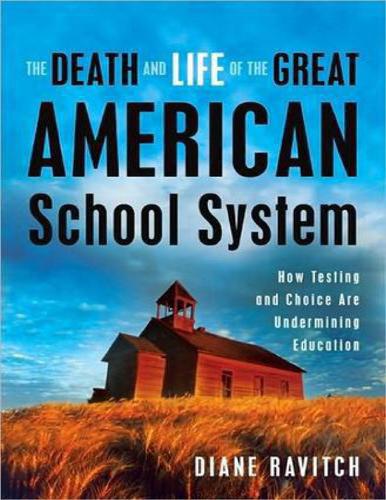
The death and life of the great American school system: how testing and choice are undermining education
by
Diane Ravitch
Published 2 Mar 2010
Fordham Institute For-profit management of schools Foundations. See also specific foundations Free to Choose (Milton and Rose Friedman) Friedman, Milton Friedman, Rose Friedman, Thomas Fuller, Howard Gaebler, Ted Galston, William Gates, Bill. See also Bill and Melinda Gates Foundation Gates Foundation. See Bill and Melinda Gates Foundation Gladwell, Malcolm Glaser, Robert Glazer, Nathan Goals 2000 program (Clinton administration) Goldhaber, Dan Gordon, Robert Gore, Al Graduation rates Gates Foundation and in New York City small high schools and in Texas Green Dot Public Schools (charter management organization) Greeley, Andrew Greene, Jay P.
…
Annenberg Challenge grants Arts education Aspire Public Schools (charter management organization) Atlanta public schools AYP (adequate yearly progress). See No Child Left Behind Bagley, William Chandler Balanced Literacy (reading program) Ballou, Dale Barber, Michael Barrow, Lisa Bassok, Daphna Bauerlein, Mark Bell, Terrel H. Beller, Ron Bennett, William J. Bersin, Alan Betts, Julian Bill and Melinda Gates Foundation charter schools and grants to education organizations San Diego schools and small high school initiative support for Rhee’s program Bloomberg, Michael Blueprint for Student Success in a Standards-Based System. See San Diego public schools Boehner, John Bonuses (schoolwide) vs. merit pay, in New York City Bradley Foundation.

Essentialism: The Disciplined Pursuit of Less
by
Greg McKeown
Published 14 Apr 2014
It is a philosophy. Space to Read We can take further inspiration from the example of CEO Bill Gates, who regularly (and famously) takes a regular week off from his daily duties at Microsoft simply to think and read. I once attended a question-and-answer session with Bill at the headquarters of the Bill and Melinda Gates Foundation in Seattle, Washington. By chance he had just completed his latest “Think Week.” Though I had heard about this practice, what I didn’t know was that it goes all the way back to the 1980s and that he stuck to it through the height of Microsoft’s expansion.5 In other words, twice a year, during the busiest and most frenetic time in the company’s history, he still created time and space to seclude himself for a week and do nothing but read articles (his record is 112) and books, study technology, and think about the bigger picture.
…
Warren Buffett, quoted in Koch, The 80/20 Individual, 20. 6. Mary Buffett and David Clark, The Tao of Warren Buffett: Warren Buffett’s Words of Wisdom (New York: Scribner, 2006), no. 68. 7. Ibid., “The Unimportance of Practically Everything.” 8. At a meeting we both attended at the Bill and Melinda Gates Foundation in Seattle, Washington. He was speaking, and afterwards we chatted for a few minutes. He confirmed that he had said it or words to the same effect and that he certainly believed it was true. 9. John Maxwell, Developing the Leader Within You (Nashville, TN: T. Nelson, 1993), 22–23. 4.
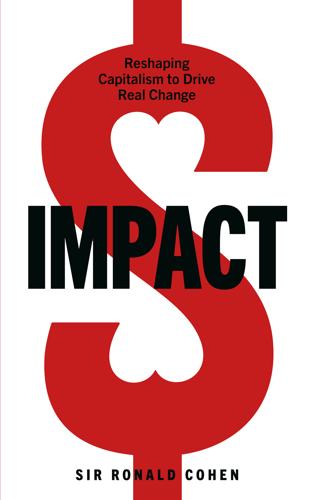
Impact: Reshaping Capitalism to Drive Real Change
by
Ronald Cohen
Published 1 Jul 2020
But the foundation wasn’t satisfied with this conventional answer, and they pushed us to think more about the positive and negative impacts of our investments.’76 Since then, Capricorn has invested in Tesla and other carbon-reducing enterprises including QuantumScape, a technology company that’s developing lithium batteries, Joby Aviation, which is creating electric-powered air taxis, and Saildrone, which designs wind-powered oceangoing drones for autonomous data collection.77 The Bill and Melinda Gates Foundation, the largest foundation in the world, with an endowment of about $45 billion, has brought business methods to philanthropy and takes an outcome-oriented approach to grant-making. Instead of asking grantees to report on their activities, they look for ways to measure results.78 Gates doesn’t just make grants.
…
Aboyeji, Iyinoluwa ‘E’ 48 ABP (Dutch civil service pension fund) 74 accelerators, start-up 175–7, 197 Accenture 90 Access Foundation 175 accounts, impact-weighted financial v, 29–30, 67, 84, 107–17, 159, 183, 186, 190–1, 201 Acumen 84 Adidas 93, 101–4, 107 Adidas x Parley 102–3 Adie 162–3 Africa 1, 27, 39, 48, 49, 83, 84, 136, 148, 167–8 agriculture 36, 45–6, 78, 83, 84, 94–5 Ahrens, Andreas 105 Ailman, Christopher 77–8 Align17 80 Aliko Dangote Foundation 136 Alpert, Sharon 145 Amazon (online retailer) 14 Andela 46, 47–9 AOL 15, 48 Apax Partners 1, 2–3, 15, 18, 35, 174–5 AP funds (pension fund) 74 APG (pension fund) 73 Apple 14, 15, 77 Apposite Capital 142 Argentina 125, 164, 173, 176, 177 artificial intelligence (AI) 39, 40 Ashoka 58, 59 Asian Women’s Impact Fund 144 asset classes 7, 13, 27, 67, 187, 191 asset management 33, 63, 64, 65, 69, 70, 71, 72, 73, 74, 79–85, 172 Ather Energy 56 Australia 6, 22, 40, 124, 158, 176, 204 Avanath 143 Aviram, Ziv 40 Avishkaar 84 Bain Capital 81 Baldinger, Michael 79 Ballmer, Steve 127 Bangladesh 94 Bank of America 81, 115 Bank of Palestine 163 Bannick, Matt 148 Barby, Clara 29 Barclays 169 Bassa, Naim 39–40 Bayer 150 B Corp (Benefit Corporation) 57, 92, 96, 149, 177, 189, 197 Bedouin community, Israel 52–3, 163 Beijing, US embassy 28 Ben & Jerry’s 57 Bertelsmann Stiftung 153 Bhatia, Amit 7 Big Lottery Fund 175 Big Society Capital (BSC) v, 19, 72, 76, 160, 169–70, 171–2, 175 Big Win, The 136 Bill and Melinda Gates Foundation 149–50 Strategic Investment Fund (SIF) 149–50 biodiversity loss 16 biotechnology 45 BlackRock 32, 62, 82 Blair, Tony 160, 179 B Lab 56–7, 107 blended finance 197 Blood, David 19, 26, 49, 82 Blue Orchard Finance 80, 145 BNP Paribas 163 Bolton, Emily 20 Bombas 54 bond markets 71, 191 Bono 79 BP 111 Branson, Richard 88 Brazil 7, 41, 42, 94, 160–1, 177 Bridges Fund Management v, 18–19, 29, 53, 83, 125, 126, 127, 165 Bridges Ways to Wellness SIB 126 British Asian Trust 27, 137, 191 Brodin, Jesper 104, 106 Brown, Gordon 25, 27, 136, 179 B Team 88 Buffet, Warren 117 Burberry 54 Business for Inclusive Growth 88 Business Roundtable 87–8 Buycott 89–90 Cabinet Office 160, 161, 169 California Public Employees’ Retirement System (CalPERS) 76, 77 California State Teachers’ Retirement System (CalSTRS) 77–8 Calouste Gulbenkian Foundation 144, 153 Cameron, David 6, 19, 160, 169, 179 Camfed 137 Canada 6, 124, 144, 158, 160, 171 Capital Impact Partners 143 capitalism 3, 4, 5, 82, 117, 146, 148, 154, 181, 182, 186, 191, 193, 194, 200 impact capitalism 4, 180, 181–94, 200 see also impact investment Capricorn Investment Group 149 carbon emissions 18, 36, 55–6, 62, 66, 74, 76, 83, 90, 91, 97, 105, 106, 107, 111, 112–13, 139, 149 Carlyle Group 81 Carney, Mark 106–7 Cartigny, Gerald 73 Casa de Depositi e Prestiti (CDP) 171 Case, Steve 48, 52 Catalyst Strategies initiative 167 catalytic capital 151 Catalytic Capital Consortium 151–2 CDC (UK’s development finance institution (DFI)) 167 Central Outcome Funds 165–6 Chang, Alan 149 Chan, Priscilla 48–9, 151 Chan Zuckerberg Initiative (CZI) 48–9, 151 Charities Act (2016) 141 Charles, Prince 21–2, 191 Chiang, John 77 Children’s Investment Fund Foundation 132 Chobani 93, 98–101, 107 Clevedon Pier 173 Climate Action 100+ 76 climate change 16–17, 28, 45, 66, 73, 74–5, 76, 77, 81, 95, 104, 105, 106, 107, 139, 177, 191 Coca-Cola 90, 91, 110–11 Commission on Unclaimed Assets (2005–7) 19, 169 Community Interest Companies (CIC) 57 Cone Communications Millennial Employee Engagement Study (2016) 92 Conservative Party 160, 179 Consumer Goods Forum, Berlin (2017) 86–7, 97 contraceptive implants 150 coronary heart disease 113 corporate social responsibility (CSR) 92–3, 96 corporation, redefining purpose of 57, 87–8, 93 see also benefit corporation CRE Venture Capital 49 credit 43–4, 80, 83, 95, 144, 163 Crédit Agricole 95 crop production 45–6 CureVac 150 Daimler AG 112 Danone 57, 86, 87, 91, 93, 94–8, 107 David and Lucile Packard Foundation 144 DBL Partners 83–4 Delaney, John 179 Department for International Development (DFID) 137, 167, 168 Department for Work and Pensions (DWP) 164 Designated Utilization Foundation 170 development aid 134, 136, 166–8, 198 Development Finance Institutions (DFI) 166, 167, 198 DIBs (Development Impact Bonds) 8, 27, 68, 80, 124, 130–5, 137, 138, 153, 157, 163, 165, 167–8, 184, 198, 203, 204 Dimon, Jamie 87 dormant accounts 170, 171, 198, 205 Dormant Account Utilization Bill (2016), US 170 Dormant Assets Commission, UK 170 ‘double bottom line’ investment strategy 83–4 Dove 90, 91 Drayton, Bill 58 driverless cars 39, 40 drones 37–9, 149 Dutch SDG Investing Agenda 73 Dyson, Tasha 126 Eccles, Toby 20 Echoing Green 58–9 Edmond de Rothschild Foundation 153 Educate Girls Development Impact Bond 80, 132–4, 137 Education Commission 27, 134, 136 Education Outcomes Funds 26–7, 136, 148 Education Outcomes Fund for Africa and the Middle East (EOF) 136, 148 electric vehicles 55–6 ELMA 136 Elvis & Kresse 54–5 emerging markets 7, 13, 131, 167 Employee Retirement Income Security Act (ERISA) 157 Endeavor 59 endowment 9, 138–46, 149, 152, 153, 173, 187, 188, 202, 204 entrepreneurship 3, 4, 5, 9, 14, 15, 17, 31, 33, 83, 131, 146, 153, 154, 156, 158, 174, 175, 176, 177, 178, 183, 186, 191, 193, 194, 197 age of impact entrepreneurship 34–61, 188–9 government support for 60, 70, 174–5, 176, 177, 178 micro-entrepreneurs 83 social entrepreneurship 8, 19, 21, 82, 137, 144, 148., 176–7 tech entrepreneurship 5, 17, 55, 61, 138 environmental challenges 3, 4, 5, 8, 9, 12–13, 16, 17, 18, 27, 32, 181–2, 183, 191, 192, 193, 194, 197, 198, 199, 200, 201, 202, 203, 205 asset management and 83, 84 B Lab and 56–7 business and 88, 89, 90, 93, 97, 101, 102, 107, 108, 109–13, 114, 116 climate change 16–17, 28, 45, 66, 73, 74–5, 76, 77, 82, 95, 104, 105, 106, 107, 139, 177, 191 government and 154, 156, 159, 162, 163, 164, 166, 171, 172, 174, 176, 177–8, 179 green bonds 63, 173, 191, 199 impact philanthropy and 121, 131, 138, 139, 140, 141, 142, 143, 153 measuring impact on 28 pension funds and 72, 78 SDGs and see United Nations: Sustainable Development Goals SIBs and 68 Environmental Sustainable Governance (ESG) 63, 64, 70, 71, 72, 75, 76, 77, 78–9, 80, 81, 82, 83, 115, 145, 159, 187, 190, 198–9, 200, 203, 205 Esmée Fairbairn Foundation 23 European Bank for Reconstruction and Development 163 European Union 1, 6, 159–60, 171, 173, 176 Everplans 47 externalities 28 Exxon Mobil 111 Faber, Emmanuel 86–7, 94, 95, 96, 97 Facebook 14, 48, 83 family offices 71, 81, 146 Fawcett, Mark 74–5 FC United of Manchester 172–3 Ferrari, Sara 81 fiduciary duty 75, 145, 199 financial crisis (2008) 158–9, 185–6 financial markets, size of 71 Fink, Larry 33, 62, 82 Fink, Lord (Stanley) 19 Finland 124, 163 Fintech 42–5, 199 Flint, Michigan water crisis 54 FMO (Dutch development finance institution) 163 Fondece 176 Ford 111–13, 136, 140, 142–4, 153 Foundation 140, 142–4, 153 France 1, 6, 22, 58, 63, 75–6, 86, 88, 95, 124, 158, 159, 160, 161, 162–3, 173–4, 175–6, 177, 184, 187, 204–5 Francis, Pope 6 Freedom Bakery, Glasgow 172 Friedman, Milton 185 FTSE Blossom Japan Index 78 Fusion Housing SIB, The 126–7 Gates, Bill 55, 149–50 Gaudio, Paul 103 G8 Social Impact Investment Taskforce (G8T) v, 6, 7, 148, 160, 235 gender bond 191 generally accepted accounting principles (GAAP) 110, 115, 117 generally accepted impact principles (GAIP) 110, 114 General Mills 113 General Motors 112 Generation Investment Management 49–50, 82–3 Georgieva, Kristalina 68 Ghislane 37 Giddens, Michele 18 Gilbert, Jay Coen 108 Glencore 76 Global Family Office Report (2017) 81 Global Impact Investing Network (GIIN) 108 Global Impact Investing Rating System (GIIRS) 108 globalization 13, 16 Global Reporting Initiative (GRI): Sustainability Reporting Standards 108 Global Steering Group for Impact Investment (GSG) v, 7, 27, 29, 109, 136, 148, 158, 171, 206 Global Value Exchange 31, 162 Goldberg, Randy 54 Goldman Sachs 80, 127 Goldstein, John 80 Google 14, 49 Gore, Al 28, 49, 83 government 3–4, 30–1, 70, 154–80, 189–90 how impact investment can help governments do their job 155–8 local government 26, 125–6 measuring and valuing impact of 30–1 nine things for governments to do 158–77 Government Pension Investment Fund (GPIF), Japan 78 Grameen Danone Foods Social Business Enterprise 94–5 Great Depression vii, 185 green bond 63, 173, 191, 199 G7 166 gut microbiome, human 45 Guy’s and St Thomas’ Charity 142 GV (formerly Google Ventures) 49 Haas School of Business, University of California, Berkeley 51 Harrison, Peter 64 Harvard Business School 2, 25, 26, 29, 92–3, 109 Hawkes, Richard 191 Hayes, Lisa 40 Heath, David 54 hedge funds 13 Heron Foundation 139, 145 Hewlett Foundation 137, 153 high-net-worth individuals (HNWIs) 70, 71, 81, 145, 200 high-sustainability investments 74 Hines, Luke 39–40 Hohn, Sir Christopher 66 homelessness 30, 31, 54, 124, 125, 126, 127, 166, 170 Horn, Bernard 20 Houlahan, Bart 108 HSBC 75, 169 Hulme, Philip 19 Husain, Safeena 132 Hutchison, David 20 IBM 47, 189 IKEA 93, 103, 104–6, 107 impact capitalism 4, 180, 181–94, 200 impact economies 68, 85, 155, 157, 159, 161, 178, 180, 184, 186, 192, 200 impact investment birth/origins of 17–28 business, embedding in 86–117 defined 11–13 entrepreneurs, rising generation of 34–61 future of 9–10, 32–3, 186–94 government, role of see government impact capitalism, move from selfish capitalism to 181–94 ‘impact investing’ term coined 11 market growth 64 measuring/valuing 10, 13, 14, 28–31, 64, 67–8, 69, 107–17, 119, 120–1, 159, 183, 186, 190–1, 201 philanthropy and 9, 70, 118–53, 187–8 risk and see risk specialist impact investing firms 82–3 wholesalers 168–72, 184, 201 ‘Impact Investment: The Invisible Heart of Markets’ report (2014) 6 Impact Management Project (IMP) v, 29, 109 impact philanthropy 9, 70, 118–53, 187–8 Impact Revolution v, 1, 5, 8, 9, 10, 14, 28, 32, 33, 85, 152, 180, 182, 186, 188, 189, 235 impact unicorn 35, 188–9 impact ventures/impact enterprises 34–61, 63, 66 impact washing 30, 64 Impact-Weighted Accounts Initiative (IWAI) v, 29–30, 109–17, 201 impact-weighted financial accounts v, 29–30, 67, 107–17, 159, 183, 186, 190–1, 201 Impresa Sociale 177 Imprint Capital 80 incubator (collaborative program designed to help new start-ups grow their business) 175, 176, 202 India 7, 27, 43, 47, 53, 56, 80, 84, 94, 124, 131–4, 153 Indigo Agriculture 45–6 inequality vii, 1, 3, 14, 15–16, 58, 88, 116, 140, 154, 155, 177, 179, 181, 182, 186, 192–3, 194, 200 Ingka Group 104 inheritance, generational 65, 81 Instiglio 132 institutional investors 63, 76, 81, 85, 95, 125, 174, 202 insurance companies 69, 71, 73, 157, 170, 202 Intarcia Therapeutics 150–1 Intel 40 intermediary 22, 202 International Committee of the Red Cross Program for Humanitarian Impact Investment (PHII) 133 International Finance Corporation (IFC) 64, 68–9 ‘Operating Principles for Impact Management’ 68–9 ‘The Promise of Impact’ report 69 Investing with Impact Platform 81–2 Invest Palestine 163 ‘invisible hand’ of markets 10, 97, 184, 185 invisible heart of markets 6, 10, 185 iPhone 77 Ireland 171 Israel 7, 39, 40, 50, 52, 53, 83, 124, 152, 158, 163, 177 Italy 6, 11, 58, 133, 158, 159, 171, 173, 177 Jana Partners 77 Japan 6, 63, 78–9, 124, 144, 158, 159, 170, 171 Japan National Advisory Board 171 Jewish Vocational Services (JVS) 128–9 Jobs, Steve 55 Joby Aviation 149 Johnson, Jeremy 48 Jonathan Rose 143 JP Morgan 87, 169 J.W.

Whole Earth Discipline: An Ecopragmatist Manifesto
by
Stewart Brand
Published 15 Mar 2009
This “exclusive licensing” by universities of key aspects of GE technology to private corporations greatly restricts the ability of the public research sector to develop new crops using GE. Alternatives are emerging, fortunately. Developing countries are building their own noncorporate GE programs suited to their unique agricultural needs, often with funding and scientific assistance from the Rockefeller Foundation, the McKnight Foundation, or the Bill and Melinda Gates Foundation, and often in open-source mode, in which the new techniques are freely shared. Richard Jefferson in Australia runs a nonprofit called Cambria that develops unrestricted GE tools. With backing from Rockefeller, his group has devised two techniques that engineer around the patent-controlled GE methodologies and free them up, particularly for use in Southeast Asia.
…
It has plenty of starch but is grossly deficient in protein, vitamins, and micronutrients. The daily diet of cassava in the developing world has a third of the protein a person needs and a tenth of the vitamins, and it carries a dose of cyanide that is particularly harmful to the undernourished. In 2005 a project called BioCassava Plus, funded by the Bill and Melinda Gates Foundation, undertook to engineer a radically improved cassava. It had eight goals for the new cultivar. In terms of nutrition, a daily diet should provide all a person needs of bioavailable protein, vitamin A, vitamin E, iron, and zinc. In addition, the new cassava should be free of cyanide, should be storable for two weeks instead of one day, and should be resistant to the viruses that afflict the crop.
…
Bali Bangladesh Banyacya, Thomas Barcode of Life Baskin, Yvonne bats Bay Conservation and Development Commission bears beavers Bechman, Roland Beebe, Spencer Belarus Benedict XIV, Pope Benford, Gregory Benyus, Janine Berlin, Isaiah beta-carotene Betts, Richard Beyer, Peter Bezdek, Roger H. Bhopal, India Bill and Melinda Gates Foundation BioBricks Foundation BioCassava Plus biochar biocontrol biodiversity Biodiversity Heritage Library biofuels biological warfare biomass biomimicry Biomimicry (Benyus) Biosphere Preserves biotechnology bioterrorism bison (buffalo) Blake, William Blessed Unrest (Hawken) Board of California Certified Organic Farmers Bobiec, Andrzej Bonnicksen, Thomas Borlaug, Norman Bormann, Herbert Bradley, Eileen Bradley, Joan Brave New War (Robb) Brazil genetic engineering and Brecht, Bertolt breeder reactors Brent, Roger Bringing Back the Bush (Bradley and Bradley) British Antarctic Survey Brockman, John Brower, David Brown, Gordon Brown, James Brown, Jerry Brown, Nancy Bt crops see also genetic engineering buildings Bureau of Indian Affairs, U.S.
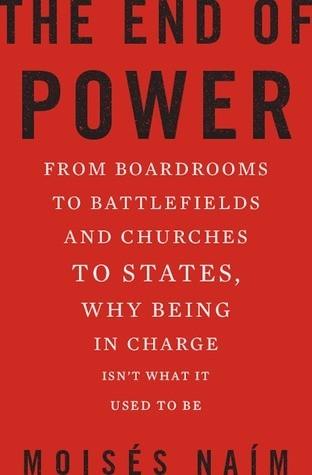
The End of Power: From Boardrooms to Battlefields and Churches to States, Why Being in Charge Isn’t What It Used to Be
by
Moises Naim
Published 5 Mar 2013
Big foundations (Rockefeller, Carnegie, MacArthur, Ford), big relief agencies (the Red Cross, Oxfam, Doctors Without Borders), and big government agencies (USAID, Britain’s DFID, multilaterals like the World Bank) still play a major role in channeling funds and technical support to the world’s afflicted and poor. In fact, by many measures including total outlays, they still dominate the field. But the momentum is with new players: mega-foundations that have vaulted to preeminence such as the Bill and Melinda Gates Foundation, which became the world’s largest in barely a decade; individual and small-scale foundations, which have mushroomed in the last fifteen years; and a constellation of private-aid platforms, marketplaces, aggregators, and advisers that are building new models from micro-loans for one Indian mother’s sewing machine to public-private financing initiatives for new city buses.
…
All were worthy, but only a few gave small donors the chance to make a lasting commitment to a specific project or recipient, let alone communicate with recipients or send insights and share experiences along with their money. For that, you had to be rich. Today’s new breed of philanthropists offers a different vision, one informed by their backgrounds, their needs, and their own experiences in the marketplace. Start with their origins. The Bill and Melinda Gates Foundation, with its creation in Seattle in 1994, may be the 800-pound gorilla of modern philanthropy, but it is far from the only foundation born out of the wealth generated by the new economy. In California, for example, the number of foundations jumped by 71 percent from 1999 to 2009, and giving more than doubled from $2.8 billion to $6 billion.30 Such growth helps to explain the shift in philanthropic gravity in the United States over the last decade: in 2003 the West surpassed the Midwest in overall giving for the first time, and in 2006 it overtook the Northeast, the bastion of American philanthropy.31 While many of these new individual givers—the number of family foundations shot up by 40 percent from 2000 to 2005—are tech moguls of one stripe or another, some are also celebrities practicing what one wag at The Economist dubbed “celanthropy” (celebrity plus philanthropy): Bono with his One Foundation, Matt Damon promoting access to clean water, and Brad Pitt developing greenhouses to rebuild New Orleans.
…
The Wealth & Giving Forum, Social Ventures Partners International, Philanthropy Workshop West, The Big Give, and many more groups do everything from helping small foundations become more efficient and teaching newly wealthy individuals how to be hands-on philanthropists to advising on the design and monitoring of projects and creating forums for donors to compare experiences and practices. This new, small-scale private giving is not poised to replace large foundations. Big-ticket funding by the Bill and Melinda Gates Foundation has given major impetus to worldwide research and treatment of diseases like malaria. A gift of $100 million from the Doris Duke Foundation in 2007 added 20 percent to the funding available for research on climate change for a five-year period. A gift in the same amount by Joan Kroc, heiress to the McDonald’s fortune, turbo-charged America’s National Public Radio.

How We Got to Now: Six Innovations That Made the Modern World
by
Steven Johnson
Published 28 Sep 2014
And perhaps that paradigm might be a leading indicator of a future that we’re all destined to share. The developing world has famously bypassed some of the laborious infrastructure of wired telephone lines, jumping ahead of more “advanced” economies by basing their communications around wireless connections instead. Could the same pattern play out with sewers? In 2011, the Bill and Melinda Gates Foundation announced a competition to help spur a paradigm shift in the way we think about basic sanitation services. Memorably called the “Reinvent the Toilet Challenge,” the competition solicited designs for toilets that do not require a sewer connection or electricity and cost less than five cents per user per day.
…
About a decade ago, two Harvard professors: Cutler and Miller, pp. 1–22. “In total, a woman’s thighs”: Wiltse, p. 112. Annie Murray had created America’s first commercial bleach: The Clorox Company: 100 Years, 1,000 Reasons (The Clorox Company, 2013), pp. 18–22. In 2011, the Bill and Melinda Gates Foundation: http://www.gatesfoundation.org/What-We-Do/Global-Development/Reinvent-the-Toilet-Challenge. Chapter 5. Time In October 1967, a group of scientists from around the world . . . But the General Conference on Weights and Measures: Blair, p. 246. To confirm his observations: Kreitzman, p. 33.
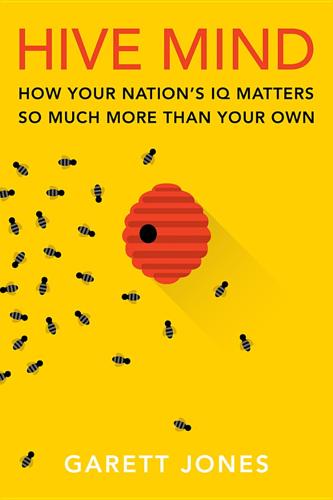
Hive Mind: How Your Nation’s IQ Matters So Much More Than Your Own
by
Garett Jones
Published 15 Feb 2015
Over the decades, Lynn has made inflammatory statements about average group differences in IQ, but his research is widely cited and given weight in mainstream psychology journals, even by his severest critics. Indeed, one widely discussed study used Lynn’s data to argue that infectious disease holds down average IQs in some countries.5 That study, with its call to raise IQ by fighting disease, was discussed in both The Economist and in the Bill and Melinda Gates Foundation’s 2011 annual report; both The Economist and the Gates report showed graphs with Lynn’s “National Average IQ” on the vertical axis and rates of disease on the horizontal axis.6 Bill Gates himself noted, “Although an IQ test is not a perfect measure, the dramatic effect you see [between national IQ and national disease burdens] is a huge injustice.”
…
Intelligence 41, no. 6 (2013): 851–857. . “Massive IQ Gains in 14 Nations: What IQ Tests Really Measure.” Psychological Bulletin 101, no. 2 (1987): 171. .What Is Intelligence? Beyond the Flynn Effect. New York: Cambridge University Press, 2007. Gates, Bill. “Annual Letter from Bill Gates: 2011,” Bill and Melinda Gates Foundation, January 2011. Georgas, James, Fons van de Vijver, and Donald Saklofske. Culture and Children’s Intelligence: Cross-Cultural Analysis of the WISC-III. Amsterdam: Elsevier, 2003. Gillette, Clayton P. “Can Public Debt Enhance Democracy?” William & Mary Law Review 50, no. 3 (November, 2008).
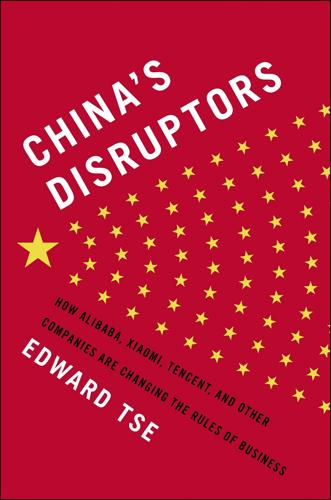
China's Disruptors: How Alibaba, Xiaomi, Tencent, and Other Companies Are Changing the Rules of Business
by
Edward Tse
Published 13 Jul 2015
Agriculture has also seen substantial improvements. Over the past 20 years China has increased its grain productivity by 2.6 percent annually, sufficient to raise output by two-thirds per unit of land. Yields could rise even further thanks to a new strain of rice (developed jointly by the Bill and Melinda Gates Foundation, the Chinese Academy of Agriculture Sciences, and a Chinese biotechnology institute) that has already been found to increase output by 20 percent in test projects. State-funded medical research is starting to spill over to private companies. In 2009, Nasdaq-listed Sinovac Biotech developed the first effective vaccine for swine flu in just 87 days.
…
A123 Systems, 130 ABN AMRO, 150 Abrami, Regina M., 93–94 Adidas, 195 Africa, rise of Chinese business in, 137 agriculture, 43, 109 Airbnb, 129 Airbus, 73, 110, 213 air-conditioning business, 12–13 Alcatel, 84, 102 Alibaba.com, 34, 39, 57 Alibaba Group, 10, 11, 33–40, 41, 49, 52, 53, 60, 62, 72, 80, 83–85, 87, 99, 100, 101, 136, 139, 148, 151, 153, 162, 184, 185, 191, 194, 197, 201, 215, 222, 225 innovation by, 94 interest in American companies, 135 IPO of, 33, 85, 90 lending transformed by, 39, 149–50 overseas listing of, 85, 89 sales by, 33–34 share listing of, 61 Sina Weibo purchased by, 87–88 start of, 37 water quality mapped by, 170 Alipay, 35–36, 39, 78, 88, 99, 192 Alta Devices, 123 Aluminum Corporation of China, 119 Amazon, 57, 68, 69, 95 Amazon.cn, 57 AMC Entertainment, 120 Amelio, William, 126, 127 Andersen Consulting, 95 Angola, 137 Apple, 67, 68, 69, 89, 112, 128 Asian financial crisis of 1990s, 16 B2B business, 36, 38, 39, 184 BAIC, 133 Baidu, 11, 39, 52, 81, 82, 83–84, 87, 88, 139, 158, 161, 191, 225 copyright violations by, 114 founding of, 49 innovation by, 94 IPO of, 50 overseas listing of, 89 Bain & Co., 151, 159 Barra, Hugo, 197 Beijing Zhongkuan, 45 Biden, Joe, 93 Bill and Melinda Gates Foundation, 109 BlackBerry, 136 Blackstone Group Asia, 224 BMW, 180 Boeing, 73, 110, 213 Booz & Company, 25, 178 Bosch Siemens, 196 Boston Consulting Group, 20, 25 brand development, 122 brand loyalty, 19–20 Brazil, 68, 139 Broad Group, 20, 54, 63, 148, 216–18, 221, 225 Broad Sustainable Building, 217 Broad Town, 216 Brown, Shona L., 182–83, 185–86, 187 BYD, 20, 76, 134 C2C market, 34–35, 184 C919, 110–11 Caixa Seguros, 123 cars, 12, 20, 44, 74, 76, 123, 130–34 Chang, Gordon, 9 Chang’an, 133 Changhong, 76 Chen, Steve, 112 Chen Dongsheng, 45, 54, 55, 148, 168–69 Chengdu, 24 Chen Haibin, 12, 155–56 Chery, 134, 138 China, People’s Republic of: agricultural output in, 43, 109 authoritarian rule in, 22–23 billionaires in, 8, 10, 45, 48 buying-power in, 19 consuming classes, 72–77, 74, 151 critics of, 8–9 debt in, 78, 80, 167 Deng’s reforms in, 17, 27, 28, 42–43, 47, 132, 140, 148, 166, 167, 176 earthquake in, 217 economic growth in, 8, 25, 70–71, 77–79, 97, 154, 165, 209–10 exports of, 9, 44, 48, 79, 104, 109, 133, 134–36, 140, 152, 188, 214 foreign currency reserves of, 22 founding of, 3 high-net-worth individuals in, 150, 151 housing privatized in, 48–49 hybrid government of, 71, 167, 210, 212, 213–16 innovation in, 93–116 institutional development in, 166, 195, 221 logistics costs in, 78 monthly wages in, 98 multinationals invited into, 46–51, 70, 71, 72–77, 188–90, 192, 195, 197–201, 222–23 number of companies by ownership in, 15 opportunities in, 41, 49–50, 115–16, 140–41, 180–81, 203–30 outbound investment from, 28, 120–24, 121, 138–39, 140 per capita GDP of, 113 per capita income in, 229 pioneers of 1980s in, 46 R&D spending in, 106–7, 107, 121, 122, 192, 193 revenues by company type in, 15 rising urban class in, 96 scale of, 71–72, 83, 85, 180–81 traded goods of, 109 trends shaped by, 18–19 U.S. and European investment in, 181, 223 as world’s biggest manufacturer, 19 China Auto Rental, 194–95 China Banking Regulatory Commission, 149 China Development Bank, 138 China Entrepreneurs Forum (CEF), 145, 169, 171, 223 China Food and Drug Administration, 155 China Guardian Auction Company, 45 China Investment Corporation, 149 China Merchants Bank, 205 China Mobile, 102, 212 China National Offshore Oil Corporation, 120 China Pages, 37 China Post, 100 China Resources Enterprise, 180 China Smart Device Innovation Fund, 113 China Telecom, 102 China Unicom, 102 China UnionPay, 36, 78 Chinese Academy of Sciences, 44 Chinese Academy of Sciences Computer Technology Research Institute New Technology Development Company, 54 Chinese People’s Political Consultative Conference, 81 Chongqing, 193, 224 Chu, Gary, 196 Cisco, 105 Citic Pacific, 123 climate change, 25, 29, 227, 229 clothes, 9 Club Med, 194 Cold War, 23 Coming Collapse of China, The (Chang), 9 Commercial Aircraft Corporation of China (COMAC), 110–11, 213 Communist Party, China, 22, 42, 44, 55, 77, 211, 218, 220, 226 purge of, 4 “competing on the edge,” 181–86, 188 computers, 9, 11, 125–28, 178 Congo, 137 Consumption Promotion Month, 73 copyright, 114 corporate flexibility, 190, 191–92 costs, controlling of, 97 counterfeiting, 75 creative destruction, 163 Ctrip, 113 Cultural Revolution, 4, 42, 43, 54, 207 Daimler, 180 Dalian Wanda, 48, 88, 120, 172 Datascope Corporation, 123 decision-making, 23, 58, 190–91, 211 Decorvet, Roland, 196 Dell, 95, 96, 126, 128 Deng Xiaoping: reforms of, 17, 27, 28, 42–43, 47, 132, 140, 148, 166, 167, 176 southern tour of, 44 Detroit Electric, 133 Development Research Center, of the State Council, 45 DHgate.com, 12, 57 Dian Diagnostics, 155–57 Diaoyu, 181 Digital China, 148 Ding Xuedong, 149 D’Long, 13 Dongfeng, 133 dotcom bubble, 37 Drivetrain Systems International, 133 eBay, 34, 40 e-commerce, 10, 11, 20, 38, 39, 78, 81–84, 88–89, 96–97, 99, 225 Economist Intelligence Unit, 140 education, 27 rising standards of, 98 Eisenhardt, Kathleen M., 182–83, 185–86, 187 Emerald Automotive, 133 energy, 9, 19, 25, 29, 42, 115, 119, 137, 186, 216–17 energy-efficient buildings, 216 engineering, 27 entrepreneurs, 56, 199–201, 226–28, 229–30 ambition of, 55, 57–61 boundaries pushed by, 26–27 everyday life changed by, 164–65 Gang of ’92, 45–46, 54 innovation by, 93–116 international talent of, 196–97 1980s generation of, 51–53 origins of, 42–46 overseas, 139 pride of, 55, 57 reforms sought by, 145–49 shared heritage of, 55, 61–64 strengths of, 24–26 see also specific entrepreneurs environment, 60, 168, 169–70 Epic Games, 135 Ericsson, 101, 102, 105 European Union, R&D spending in, 107 EV71 virus, 109 Evergrande Real Estate, 48 Export-Import Bank of China, 138 Facebook, 83, 87, 94, 222 Fanfou.com, 53 Feng Lun, 45–46, 148 finance, 149–53, 157, 162, 163, 186, 192–93 deregulation of, 164, 212–13, 229 1st Dibs, 135 Fisher & Paykal, 7 Fisker Automotive, 130 Food and Drug Administration, U.S., 123 Forbes, 10 Ford Motor Company, 123, 131, 133 Forever 21, 195 Fosun, 123, 138, 148, 155, 156, 194 Foursquare, 129 Foxconn, 112 Gang of ’92, 45–46, 54, 148, 168–69 Gao Feng Advisory Company, 25 Gavekal Dragonomics, 73 Geely Auto, 12, 44, 76, 123, 131–34, 138, 175, 185, 212 General Mills, 196 General Motors, 133, 137, 179 Gerke, Roland, 196 Germany, 121, 216 doctorates in, 108 global financial crisis, 73, 78 Global Solar Energy, 123 Golden Monkey, 194 Goldman Sachs, 37, 136 Gome Electrical Appliances, 13 Google, 83, 87, 112, 127, 128, 197 Great Firewall of China, 82 Great Leap Forward, 3–4 Great Wall Technology, 76, 126 Guo Guangchang, 148 Guo Wei, 148 Haier, 3, 5–8, 10, 47, 49, 58–60, 76, 84, 94, 98, 100, 101, 175, 185, 187, 200, 208, 224 Hainan, 46 Hangzhou Wahaha Group, 52, 76 Harvard Business Review, 93–94 health-care system, 12, 153–57, 162, 163, 212 Hengan International, 12, 53, 175–78, 199, 200 Hershey, 194 Hertz Global Rental, 194–95 Hewlett-Packard, 125, 128 Hoffman-La Roche, 155 Home Depot, 180 Honda, 133 Honeywell, 190, 192, 196 Hong Kong, 68, 214, 223–24 Hong Kong Stock Exchange, 68, 86, 177 hospitals, 154–56, 212 Household Responsibility System, 43 Huang Guangyu, 13 Huang Nubo, 45, 63, 168 Huawei Technologies, 11, 20, 43–44, 47, 54, 60, 67, 75, 84, 89, 122, 128, 136, 138, 139, 140, 175, 200, 222 innovation by, 94, 101–5 Hui Ka Yan, 48 Hu Jintao, 147 Hutchison Telecom, 103 Hyundai, 133 IBM, 125, 127–28, 129, 178 ICBC, 149 ICQ, 85 IDG, 85–86 India, 68 infrastructure, 71, 78, 79, 82, 83, 85, 99, 105, 111, 114, 137–38, 153, 163, 164, 166, 188, 191, 192, 210, 223, 224 Innovation Works, 111–12 Intel Capital, 113 interest-rate liberalization, 40, 152–53 Internet, 27, 81–90, 82, 135–36, 161, 186, 197, 209–10, 218–19, 221–22 iPhone, 68, 69, 94 iQiyi.com, 162 Japan, 94, 121, 141, 216 R&D spending in, 107 JD.com, 84, 87 revenue of, 89 Jialing, 76 Jiang Jianqing, 149 Johnson & Johnson, 175 Joyo.com, 12, 57, 68 Jumei.com, 206 “just-in-time” production system, 94 Kan, Michael, 69 Kandi Technologies Group, 133 Kao, 175 KFC, 180 Kimberly-Clark, 12, 175 Kingsoft, 68 Kirby, William C., 93–94 Konka, 76 Koo, Victor, 158–59, 160, 218 Krugman, Paul, 9 Kutcher, Ashton, 129 Lardy, Nicholas, 17 Lau, Martin, 136 Lau, Ricky, 225 Lee, Hudson, 196 Lee, Kai-fu, 111–12 legal infrastructure, 114 Legend, 44 Legend Holdings, 112, 126 Lei Jun, 11, 12, 57, 67, 81, 112, 162, 197, 226 Lenovo, 11, 20, 44, 54, 67, 75, 89, 112, 139, 140, 148, 171 expansion by, 124–29, 130 revenue of, 125–26, 127, 128 Leung, Antony, 224 Levi’s, 195 Li, Richard, 85–86 Li, Robin, 11, 49, 50, 64, 81, 88, 139 liberalization, 44, 55, 71, 72, 75, 78–79, 152, 154, 166–67, 178, 181, 210, 211, 223 of interest rates, 40, 152–53 Li Dongsheng, 148 Liebherr, 5–6 Lifan, 76 Li Ka-shing, 85 Li Keqiang, 210, 215 Lin Bin, 68 Li Shufu, 12, 44, 47, 131–34, 138, 175, 185 Little Emperors, 51–53 Liu Chuanzhi, 54, 171 Liu Junling, 96 Liu Mingkang, 149 Loncin, 76 L’Oréal, 205 Lu Guanqiu, 130 Lyft, 135 Ma, Jack, 10, 33–40, 41, 47, 50, 54–55, 60–61, 62–63, 64, 86, 136, 148, 197, 201, 221 background of, 36–37 environmental work of, 60, 168, 169–70 and U.S.

Innovation and Its Enemies
by
Calestous Juma
Published 20 Mar 2017
The focus of my work has been on identifying technologies that could contribute to sustainable development in Africa. I have advocated policies that seek to reduce the negative consequences of new technologies while maximizing their impacts. A fuller account of my views is available in The New Harvest: Agricultural Innovation in Africa funded by the Bill and Melinda Gates Foundation. No funding from the Foundation was used to support the preparation of this chapter or any part of this book. 2. Rachel Carson, Silent Spring (New York: Houghton Mifflin, 1962), 278. 3. Carson, Silent Spring, 278. 4. Marc Van Montagu, “It Is a Long Way to GM Agriculture,” Annual Review of Plant Biology 62 (2011): 1. 5.
…
DC), 157, 168 Battle of Yamamah (632), 72 Bayer company, 244 Bayezid II, Sultan, 68 Beef, frozen, tariffs on, 186 Beer industry, 61, 178 Behavior, 24, 29, 99, 158, 273 Behavioral economics, 33, 36 behavioral change, 33–34 foundations for, 35 Belfield, Reginald, 155 Belgium dioxin-contaminated animal feed in, 240 disease-resistant wheat cultivars in, 228 Beliefs, 25, 301, 312 Belighi (poet), 54 Bell, Alexander Graham, 257 Belli, Onorio, 55 Bell Labs, 41–42 Ben & Jerry’s, 270 Berliner, Ernst, 231 Berners-Lee, Tim, 3 Biases. See also Stigmatization in agricultural systems, 228 omission bias, 35 status quo bias, 35 Bid’a (new products, religious innovation), 48, 70 “Big Four” recording companies, 212, 218 Bill and Melinda Gates Foundation, 350n1 Binoculars, 70 Biodiversity, loss of, 259 Biological diversity, 127, 239, 303 Biology. See also synthetic biology chemistry vs., European chemical company knowledge of, 230–231 Biopesticide industry, 232 Bioremediation, 314 Biotechnology, 4, 235–236, 253–254 opposition to, 2–3, 30, 236, 238, 242, 268, 274 Bismarck, Otto von, 100 Block, Louis, 190–191 Book guilds, 83 Boric acid, in butter, 97 Boston, parking restrictions in, 132 Boston Symphony Orchestra, 213 Boyer, Herbert, 236 Brewing industry, need for better refrigeration, 178–179 A Brief Description of the Excellent Vertues of that Sober and Wholesome Drink called Coffee… (Rosée), 59 Brine, in refrigerators, 189–190 Britain.
…
See also Misinformation; Rumors countering, 25, 93 Greek mythology, 4 staying power of, 278 Myths of products, staying power of, 278 NADA (New Animal Drug Application) regulatory path, 266–267 Nanotechnology, 14, 300 Napster, 221–222 NAS (National Academy of Sciences), 237–238, 249 National (periodical), on recording ban, 216–217 National Academy of Engineering, 12 National Academy of Sciences (NAS), 237–238, 249 National Association of Refrigerated Warehouses, 197 National Dairy Council (NDC), 109–113 National Implement and Vehicle Association, Tractor Department, 132 National Institutes of Health, 236 National League of Musicians (NLM), 205–206 National Marine Fisheries Service (National Oceanic and Atmospheric Administration), 362n25 National Research Council, 246 National War Labor Bureau, 216 Nation’s Business on margarine, 112 Natural ice industry, 180–185, 188 Natural phenomena, technology as harnessing of, 22 Natural resources, exploitation of, 32 The Nature of Technology (Arthur), 22 Nature on Bt genes in Oaxacan corn, 355n56 NDC (National Dairy Council), 109–113 Neddermeyer, U., 77 Negative externalities, 31 Netherlands, impact of Reformation on, 78–79 Nevşehirli Damat İbrahim Pasha, 83, 84 New Animal Drug Application (NADA) regulatory path, 266–267 The New Harvest: Agricultural Innovation in Africa (Bill and Melinda Gates Foundation), 350n1 New industries, prospects for technological innovation in, 200–201 New products and technology. See also Technological innovation; specific economic sectors development by European chemical companies, 230 religious innovation (bid’a), 48, 70 staying power of initial responses to, 278 New York (State) antimargarine law, 104 capital punishment, 161–164 safety regulations for refrigerators, 184 New York Board of Fire Underwriters, 174 New York City cold-storage warehouses, fires in, 174 electricity arrival, 148 gas industry, 149 ice supply, 185 musicians unions, 205 overhead electrical wires, 164–167 street lighting, 146 New York Dairy Association, 104 New York Evening Post, Brown letter in, 159–160 New York Gas Light Company, 146 New York State Dairy Commission, 102–103 New York Sun on arrival of electricity, 148 New York Times on fish protein, 261 on gas and oil lighting, 167 on recording ban, 216 Westinghouse letter to, 162 New York Tribune on electricity, dangers of, 164 on nighttime lighting, 166 on overhead wires, 166 New Zealand, regulations for genetically edited crops, 254 Nidar (confectionery firm), 308 1989 (Swift album), 202 Ninety-Five Theses on the Power and Efficacy of Indulgences (Luther), 78 NLM (National League of Musicians), 205–206 Nobel Memorial Prize for Economic Sciences, 95 Nondisparagement contracts, 171 Non-ionizing electromagnetic radiation, 172–173 North America, agricultural systems in, 253 North American Review, Westinghouse article in, 157 Norway salmonella infections in, 308 salmon-farming industry in, 273 Nostalgia, 309 Novelty Edison’s attention to, 153 fear of, 11 impact of, 203 need for reinvention of, 291 oiling wheels of, 280–316 stability, tension with, 5, 21 welfare aspects of, 298 NovoNordisk, 232–233 Nuclear power, 9, 314 Nutrition.
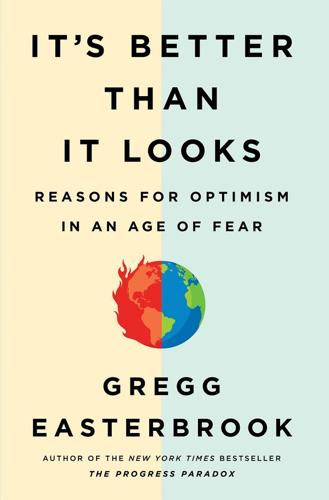
It's Better Than It Looks: Reasons for Optimism in an Age of Fear
by
Gregg Easterbrook
Published 20 Feb 2018
Many Green Revolution approaches to the soil don’t involve chemicals: for instance, drip irrigation, a Green Revolution idea that employs lots of ground-level hoses releasing small amounts of water to eliminate the evaporation associated with big rotating sprayers. Farmers likewise have adopted conservation tillage—which leaves the last season’s crop residue in place to preserve soil—and no-till agriculture. Hostility to the Green Revolution changed in 2006, when the Bill and Melinda Gates Foundation came down on the side of high-yield farming for Africa. Gates’s imprimatur prompted funding institutions to begin advancing credit to African farmers, enabling them to adopt modern techniques. Yields—for instance, of Kenyan maize—headed upward in the same way they did on the Great Plains during Borlaug’s youth.
…
See ObamaCare Africa disease in, 25, 39 food production in, 9–11 longevity in, 32 aging, 203, 271–272 air pollution, 236, 242 car emission controls and, 60–61, 147 in China, 19, 58 Clean Air Act and, 62 coal-fired power plants and, 58–59 death from, 30 in India, 19, 59 in Iran, 59 reformulation of fuel and, 59–60 in Seoul, 58 sulfur dioxide in, 49 in US, 60–63 See also acid rain; greenhouse gas air travel Boeing and, 64, 73, 276 intercontinental, 25 manufacturing improvements and, 73 safety of, 154 technology and, 154–155 Allison, Graham, 133 American Civil War, 18 anecdotes, 218–220 Angell, Norman, 131–132, 133–134 animals, 42, 47–48 asteroids, 279–280 Ausubel, Jesse, 15 on carbon dioxide, 235–236 resource use and, 161 speed of travel for, 162–163 on technology, 161–162 authoritarianism, 167–168, 182 Autor, David, 79 Bar-Tal, Daniel, 283–284 Bastiat, Frédéric, 104 Bazelon, Emily, 221 Beck, Ulrich, 141, 144, 147 Big Sort communities, 222–223 Bill and Melinda Gates Foundation, 9–10 bird species, 42, 47–48 black-taggers, 264 Boeing, 64, 73, 276 Borlaug, Norman, 3 career of, 6 high-yield agriculture of, 7–8, 9 organic fertilizers for, 7 wheat cross-breeding by, 6–7 Brexit referendum, 204, 209, 217 buying power, 85–86, 87, 246, 249 capital punishment, 116, 155–156 carbon dioxide, 50, 231–232 Ausubel on, 235–236 public health and, 62 carbon tax, 240–242 Carnation Revolution, 165 cars, 52, 65, 141 developing world and, 142–143 drunken driving, 145 emission controls on, 60–61, 147 fossil fuels and, 147–148 gas mileage of, 147–150 greenhouse gas emissions for, 147, 148, 151 Honda manufacturing, 75 horsepower reduction for, 150–151 reformulation of fuel for, 59–60 road-rage behavior and, 151 self-driving, 152–154 Sivak on, 147–148, 149 technology and, 143–149, 152–154, 162 traffic deaths, 28, 142–143, 145–146 Carter, James, 56 catastrophism, 20–21, 221, 283 Cather, Willa, 225 CEO pay, 252–254 chemical and biological weapons, 26–27 China, 133–134, 283 air pollution in, 19, 58 coal-fired power plants in, 58–59 democracy and education in, 170 extreme-poverty in, 20 greenhouse emissions in, 50–51 inequality in, 245–246 internet in, 176 life expectancy in, 32 manufacturing employment in, 78 Paris Agreement and, 243 Shenzhen, 15–16 smoking in, 35 water in, 13 CIMMYT.
…
See genetically modified organisms Goldstein, Joshua, 120 government, forms of crime-boss mode of government, 182 fake elections and, 182–183 See also authoritarianism; communism; corruption; democracy; dictatorship Grant, Madison, 197, 198 Great Recession, 64, 68, 97 The Great Surge (Radelet), 20 Green Revolution, 136 Bill and Melinda Gates Foundation supporting, 9–10 farming and, 3–4 local palate and, 9 Shah on, 4 See also Borlaug, Norman greenhouse gas, 46, 231–232, 281 car emissions as, 147, 148, 151 carbon tax and, 240–242 China and, 50–51 declining, 236–237, 242–243 food production and, 238 fossil fuels and, 56 human health and, 62 market forces and, 237–238 state-level restrictions on, 239 sulfur dioxide as reverse, 49 Trump on taxes for, 240–241 See also carbon dioxide gross domestic product (GDP), 84, 90–91 Hamilton, Alexander, 12 health childhood, 35–36 disability and, 36–37 See also disease; longevity; public health high-yield agriculture, 11, 71 agriculture research and, 12–13 Borlaug and, 7–8, 9 competition and, 6 GMOs and, 12–13 less land in, 8, 14–16, 18 opposition to, 9, 13 rice as, 7, 8–9 See also Green Revolution history declinism panics through, 200 progress and, 285–286 reforms in, 285 themes of, 282 Hobbes, Thomas, 107, 221 homogamy, 223 The Hunger Games (movie), 5 immigrants, 260–261 college and, 269–270 Trump on, 199 undocumented, 197–198 India, 165 air pollution in, 19, 59 extreme-poverty in, 20 food production and, 8, 16 market forces and, 20 vaccinations in, 25 vegetarian diet of, 16 Indo-Pakistani War, 7 inequality CEO pay and, 252–254 China and, 245–246 declining, 251 economy and, 84–85 extreme-poverty as, 19–20 federal policy and, 247 free-market systems and, 246 healthcare and, 247–248 income limits and, 252 industrial development and, 250 Milanovic on, 246, 251–252, 262–263 minimum wage and, 74–75, 260 mortgage interest deduction and, 261–262 moving and, 262–264 Nike and, 253 pretax income and, 84 tax and, 254–255 traditionalistic formula for poverty, 267–268 trends of, 247–248, 250–251 welfare programs and, 101, 248–249, 257–258 See also Universal Basic Income influenza pandemic (1918–1919), 27–28 infrastructure economy and, 93–95 food production and, 12 Obama on, 94 sanitation, 29–30 International Maize and Wheat Improvement Center (CIMMYT), 6 internet in China, 176 corruption and, 181–182 democracy and dictatorship and, 175–176 Iran, 59, 177–178 Iron Curtain, 165–166 jobs, US Autor study on, 79 coal mining and, 61, 76–77, 233 education and, 89–90 employment gain trend and, 80 of fire fighters, 155 food production and, 71–72, 75 labor-force participation and, 88–89 machines replacing, 74, 274–275 marital status and, 89–90 minimum wage for, 74–75, 260 Murray on, 89–90 start-up firms and, 92–93 steelmaking and, 73–74, 75, 206–207 Trump on global trade and, 72, 77–78, 79 unemployment and, 70, 87 See also manufacturing Joffe-Walt, Chana, 37 Jones, Monty, 8–9 Judgment at Nuremberg (movie), 168 Kaus, Mickey, 223–224 Keynes, John Maynard, 98–99 Kim, Anne, 89–90 Kuznets, Simon, 250 land, 17 human requirement of, 16 war and, 134–135 land, in food production cities and, 15–16 high-yield agriculture and less, 8, 14–16, 18 war and, 17–18, 135–136 Lasch, Christopher, 84, 211 law enforcement, 110–112 cell phone and, 113–114 deadly force by, 114 deaths of, officers, 115 racism and, 113–114 Lemann, Nicholas, 71 longevity, 280 artificial intervention and, 32 Calico researching, 33 childhood health and, 35–36 declines in, 34 education and, 37–38 height and, 31 marriage and, 266 prescription drugs and, 34–35 public health and, 30–31 retirement economics and, 31, 273–274 self-inflicted death and, 35 Social Security and, 273 in US, 34–35 Vaupel on, 33–34 Longping, Yuan, 8–9 luck, 217–218 Luddites, 274–275 Lui, Margaret, 27 Lula da Silva, Luiz Inácio, 176 machines advancements of, 275–276 artificial consciousness and, 276–277 food production and, 274, 275 jobs replaced by, 74, 274–275 laws for, 277 malnutrition, 3–4, 7, 12 Malthus, Thomas, 4–5 manufacturing, 274 automation and, 72 for Boeing, 73 China and, 78 Honda and, 75 improving factories for, 73 journalism compared to, 75–76 in US, 71–72, 75, 77–79 market economy, 124 distributed decision-making in, 67–68 food production and, 11 inequality and, 246 uncertainty in, 68 market forces acid rain and, 46 greenhouse gas and, 237–238 rare-earth minerals and, 52 resource depletion and, 51–52 socialism and, 20 marriage declining, 266–267 economic advantages to, 267, 268 education and, 267 gay, 89, 224, 268 longevity and, 266 long-term partnerships over, 268 predictors of likelihood of, 267 single women and, 89 Marx, Karl, 4–5 McCloskey, Deirdre, 167, 224 meat, 16, 17 media, 217 crime and, 105, 107 declinism in, 202 terrorism and, 119 Trump and, 105 war and combat and, 121 See also Facebook and social media media negativity Autor and, 79 current events and, 76 disease and, 24–25 economy and, 77, 79, 87–88 mood of America and, 77 MERS.

The Optimist: Sam Altman, OpenAI, and the Race to Invent the Future
by
Keach Hagey
Published 19 May 2025
Altman set about remaking OpenAI as something a lot less weird. He would start by rooting out the EAs. IN ITS quest for normalcy, OpenAI recruited a new set of experienced board members, including former Sony Entertainment president Nicole Seligman, who had served on Paramount Global’s board for years, and former Bill and Melinda Gates Foundation CEO Dr. Sue Desmond-Hellmann, who had served on the boards of Facebook and Pfizer. And it rolled out a new policy on conflicts of interest to prevent the distrust around Altman’s other business dealings that had contributed to his firing. “Because people had had questions about that, that was something where we got legal advice and we put in a standard set of procedures that said, ‘If in doubt, check it out,’ ” Larry Summers said.
…
Morrow), 141–42 Bender, Emily, 252 Bengio, Yoshua, 183–84, 188, 272 Berners-Lee, Tim, 244 Betts-LaCroix, Joe, 257–59 Bezos, Jeff, 229, 260 bias encoded in AI, 252 Biden administration AI policies, 232, 267, 277, 299–300 Biden, Joe, 273, 296–300 Big Island of Hawaii, 227, 250, 311–12 Big Sur, CA, 134, 171, 260 Big Tech companies, 182, 185, 197, 299, 308 Bill and Melinda Gates Foundation, 303 bin Salman, Mohammed, of Saudi Arabia (“MBS”), 231 Bing search engine, 216, 271 Bird, Leah, 28–29, 43 Bitcoin, 142 BitTorrent, 244 Black people and communities, 26–27, 40, 53, 164 Chicago’s first black mayor, 21–22, 33–34, 37 racism among tech bros, 164–65 see also race and racism black-pilled, 1 Blackwell, Trevor, 63, 74, 75, 94 “blip, the,” 7, 14–15, 276–94, 295–310, 311–15 Blizzard Entertainment, 215 Bloomberg (news site), 67, 207, 276 Bloomberg limited partnership, 234 Bloomberg, Michael, 155 Blumenthal, Richard, 309 BookCorpus dataset, 220 Boom, Steve, 126 Boost mobile network, 80, 99–105 Borgmann, Jolene, 201–2, 226–27 Bostrom, Nick, 5, 163–66, 168–70, 241 Future of Humanity Institute, 5, 165–66, 241–42, 267 Superintelligence: Paths, Dangers, Strategies, 5, 163–66, 167–68 Botha, Roelof, 88, 93, 96, 124 Bowles, Nellie, 205 Box cloud storage company, 96 Boyden, Ed, 199 Breakout (video game), 147 Brennan-Jobs, Lisa, 112–13 Bridgewater Associates hedge fund, 212 Brin, Sergey, 85, 88, 192 Brockman, Anna, 245, 294, 309 Brockman, Greg, 16 during “the blip,” 277–79, 283–84, 286–89, 291–94, 305, 308–9, 310 in his “code cave,” 175–76, 246–47 as an OpenAI founder, 172–78, 183–88 role in developing GPT-4, 189–96, 209, 215–23, 242–51, 267–68 Brockman, Ron, 173 Brooklyn’s Park Slope, 29–30 Brooks, David, 132 Brown, Jerry, 205, 206 Brown, Willie, 205–5, 256 Brundage, Miles, 241–42, 253 Brunswick, Georgia, 23–25 Buchheit, Paul, 123, 150–51 Bucktown neighborhood of Chicago, 34 Buffet, Warren, 212 BuildZoom digital construction marketplace, 138 bullying, 131, 287 Burger King, 62 Burning Man Festival, 1, 198–99 Burt, Matthew, 92, 93 Business Insider, 260, 277 California affordable housing crisis in, 197, 205–6 ballot measure limiting short-term rentals, 262, 274, 292 Daly City, 162 Irvine, 99, 105 Mountain View, 85, 94, 107, 122, 133, 139, 149, 161, 172, 182, 235 Napa Valley, 185, 190, 260 Oakland, 195 YC Startup School at Berkeley and Stanford, 122–23, 194, 234 see also Palo Alto, CA; San Francisco; Silicon Valley capitalism, 40, 166, 195, 225, 314 “capped profit” model, 229–30, 304 carbon footprint, 252 Carlson, Tucker, 294, 313 Carr, Eric, 120–21 carried interest (“carry”), 73, 158, 281 cars, self-driving, 168, 223–24 cars, tech bros’ love of, 26, 51 Castro, Daniel, 300–301 Cement City housing project, 35 Center for AI Policy, 301 Center for Security and Emerging Technology (CSET) at Georgetown, 267, 299, 300 Central Reform Congregation, 15, 43, 227 Centre for the Governance of AI, 267 Centre for the Study of Existential Risk, 168 Chafkin, Max, 131, 205, 258 Chang, Jeff, 198 Character Technologies, Inc., 271 charities/philanthropy, see affordable housing; effective altruism (EA) chatbots, 3, 9, 174, 263, 268–70 Anthropic’s Claude, 268, 278, 285 antisemitic, 270 giving a superego to the, 264 Google’s Meena, 270 Microsoft’s Tay, 270 pedophilia and, 254 Quora’s Poe, 278–79 “wrappers” around AI, 278–79 ChatGPT, 1, 3, 5, 14–15, 17, 208, 253, 269–73, 276, 278, 285–86, 308, 310 Che, Sally, 25, 49–51, 227, 260–61 Checkr background check automation company, 149–50, 156 Chernobyl nuclear disaster, 135 Chesky, Brian, 157, 236, 263, 270, 274, 277, 289, 292 chess, 67, 151, 145–46, 191, 215–16 Cheung, Adora, 157, 195 Chicago Altman family in, 21–38 Bucktown neighborhood of, 34 first Black mayor of, 21–22, 33–34, 37 Lincoln Park neighborhood of, 36 Chicago Toy & Game Group, 209 China, 230–31, 267, 314 China Syndrome, The (film), 135 chips, 225, 280–81, 298, 315 global positioning system (GPS) chips in mobile phones, 57–58, 99 graphics processing units (GPUs), 176, 181–82, 219, 247, 255 the US CHIPS and Science Act, 298 Christiano, Paul, 178, 213, 276–77, 299 Chrome web browser, 272 Chronicle of Philanthropy, The, 213 Chung, Patrick, 13, 61–62, 74, 78–81, 89–93, 116, 121 Church of Jesus Christ of Latter-day Saints, 55 Churchill, Winston, 256 Cincotta, Gale, 22, 29, 35 Cingular Wireless, 58, 62, 103–4, 110 Cisco, 87, 122, 210 Clark, Chris, 198 Clark, Jack, 207, 241, 253, 266, 273 Clarke, Arthur C., 47 Claude the chatbot, 268, 278, 285 Clayton, a suburb of St.
…
Louis, 26, 45 Lagorio-Chafkin, Christine, 161 LaMDA (Language Models for Dialog Application), 270–71 “land value tax,” 256 large language models (LLMs), 16–17, 218, 221, 244–46, 252–53, 270–71, 275 Larsen, Thomas, 301 Latino people and communities, 21, 35 Lattice (startup), 311 Launch Pad: Inside Y Combinator, The (Stross), 133 Leap Motion, 226 LeCun, Yann, 169, 184, 188 Lee, Jennifer 8., 217 Lee, Kai-Fu, 267 Lee, Wing, 78–80 Legg, Shane, 145–46, 168 Lehane, Chris, 205, 274, 292 Lehman Brothers collapse, 116 Leike, Jan, 264, 284, 305–6, 308 Lemoine, Blake, 271 Lemon, Steve, 119, 121 Leone, Doug, 87, 112 Lessin, Jessica, 185 LessWrong (blog), 4, 176, 212, 301 Levchin, Max, 136 “levers” of change, 154 Levie, Aaron, 96 Levy, Carolynn, 86, 94, 232 Levy, Daniel, 309 Levy, Jon, 94, 232–33 LGBTQ people, 43, 50 Li, Fei-Fei, 184 liberalism, 314 libertarianism, 131, 142, 145 Library Genesis (LibGen), 244 Life 3.0: Being Human in the Age of Artificial Intelligence (Tegmark), 168 Life in Seven Songs podcast, 134, 198, 275 Lightcap, Brad, 293 Lightspeed Grants, 301 LightSurf photo sharing software, 79 limited partners (LPs), 72, 136, 124, 151, 155, 159, 234, 236, 281 Lin, Alfred, 161 Lincoln Park neighborhood of Chicago, 36 Lindsay, Neil, 100 LinkedIn, 223, 234 Lisp programming language, 63, 69, 124, 151 Liu, Min, 96, 107, 114–15 Livingston, Jessica, 63–65, 71–75, 81, 94–95, 122, 151, 157, 187, 232, 235–36 lobbying, 109, 144, 179, 274, 292, 300–301 Local Initiatives Support Corporation (LISC), 34–35, 40 location-based services, 58–59, 106–7, 118–19 Dodgeball location-based app, 104, 105, 118 enormous infrastructure costs of, 119 Foursquare, 118–20, 126 see also mobile phones Loopt, 16, 96, 101–17, 118–23, 126–28, 133, 138, 150–51, 159, 216, 229–31 Los Alamos National Laboratory, 170 Lourd, Bryan, 307–8 Lowe, Rob, 292 Lowe, Ryan, 265 Lowell, MA, 35 Low-Income Housing Tax Credit program, 22, 35 Lu, Qi, 230–31 Ludacris, 102 MacArthur “genius grant,” 81 MacAskill, William, 211–12 Machine Intelligence Research Institute, 210, 301 machine superintelligence, 143, 145, 164, 167, 170, 177, 309, 315, see also AI (artificial intelligence) machine translation, 168, 219, 245 Macron, Emmanuel, 14, 274 Magic: The Gathering card game, 76 Mahoney, Ryan, 312 Mailliard, Page, 85–86, 88–89, 91, 93–95, 122 Makanju, Anna, 274 malaria prevention, 212, 266 “Malicious Use of Artificial Intelligence, The” (Toner), 241–42 “Manhattan Project” for AI, 8, 145, 147, 219 Manson, Richard, 29 Mar-a-Lago, 40 Marciniak, Brian, 97, 98, 105 Marcus, Gary, 268 Mars, colonizing, 147, 170–71 Martin, James, 165 Masayoshi Son, 229 masculinity, see tech bros Mashable (news site), 119 Masters, Blake, 132 “math envy,” 180 Matheny, Jason, 267, 299 Matrix Partners venture firm, 90 McAdoo, Greg, 86–92, 95, 97–98, 112–16, 119–26, 155, 231 McCain, John, 296–97 McCauley, Matthew, 209 McCauley, Tasha, 209–11, 234, 276, 286, 288, 299 McCaw Cellular, 90 McGrew, Bob, 217–18, 283, 286, 287, 310 McIntyre, Robert, 258 McKinsey, 61–62, 150, 158 Medicare for All, 206 “Meditations on Moloch” (S. Alexander), 165–66 Meena the chatbot, 270 Memamp desktop search company, 76 Mendelsohn, Matt, 45 Metro (UK newspaper), 242 Metz, Cade, 145–46, 199 MGX investment fund, 310 Microsoft in the AI arms race, 270 Azure cloud, 216, 237, 272 and the Biden campaign, 296 Bill and Melinda Gates Foundation, 303 Bing search engine, 216, 271 during the “blip” and beyond, 277, 279–80, 282–83, 288–89, 293–94, 303–4, 310, 313 Edge web browser, 272 GitHub Copilot on Visual Studio, 262 HyperCard, 209 Inflection AI acquisition, 277 Internet Explorer web browser, 272 LinkedIn acquisition, 234 OpenAI’s relationship with, 2, 11, 13, 216–17, 226, 229–30, 234–35, 237, 245, 271–72, 303–4, 310, 313 QBasic language, 56 regulation of AI, 299–300 Tay the chatbot, 270 valuation of, 298 Visual Basic language, 56 Millennials, 4, 137, 205 Milner, Yuri, 138, 199 mimetic theory, 131 Minsky, Marvin, 142, 210 MIT (Massachusetts Institute of Technology), 63, 64, 92, 124, 160, 175, 178, 212 MIT Technology Review, 258–59, 269 Mithril Capital, 136 mobile phones enter the iPhone, 110–16, 118, 119 global positioning system (GPS) chips in, 57–58, 99 location-based services, 58–59, 106–7, 118–19 phone makers as the serfs of the mobile industry, 110 proprietary software on, 79 wireless carriers, 58–59, 75, 79, 90, 98, 100–9, 110, 118, 120, 159 mobile virtual network operator (MVNO), 99 Modi, Narendra, 14, 274, 275 Moloch (a god), 165–66 Monongahela Valley of Pennsylvania (Mon Valley), 30, 40 moonshots, 13, 16, 136, 194 Moore, Demi, 138 “Moore’s Law for Everything” (Altman), 255 More, Max, 141 Morehead-Cain Scholarship at the University of North Carolina at Chapel Hill, 53 Moritz, Michael, 16, 87–89, 112–13, 117, 186, 206 Morris, Robert Tappan, 63, 68, 74 Moscone Center West in San Francisco, 115 Moskovitz, Dustin, 212–13, 259, 300 Mountain View, CA, 85, 94, 107, 122, 133, 139, 149, 161, 172, 182, 235 “moving fast and breaking things,” 237 Mozilla Foundation, 63, 233–35 Mulherin, Oliver, 275, 288, 295, 311 Murati, Mira, 225–26, 242–43, 246–48, 268, 282–93, 304–5, 307–8 Musk, Elon, 2, 5 as an AI doomer, 2, 5, 163, 167–72, 214–15, 273–74 children fathered by, 277 colonization of Mars, 144, 147, 170–71 DeepMind investment, 147 departing OpenAI, 216–17, 221–24, 229, 234–36, 277, 304 fighting aging, 257 Halcyon Molecular, 257–59 lawsuit against OpenAI, 14–15, 304, 313 Neuralink, 193, 234 at OpenAI’s founding and beyond, 170–72, 183, 185–88, 192–94, 198, 213–14, 216–17, 221–24 in politics, 207, 313 relationship with Sam Altman, 16, 147, 170–72, 183, 194, 214–15 SpaceX, 147, 153, 167, 170–71, 187, 194 Tesla, 153, 167, 194, 223–26, 234, 255 Twitter, 118, 158, 169, 246–47, 261, 270, 281 X.com originally, 125 xAI, 15, 277, 310 MyMobileMenu (MMM) food ordering system, 75 MySpace, 103, 116 Nadella, Satya, 216, 229–30, 237, 271–72, 273, 288–89, 293–94 Nakamoto, Satoshi, 142 nanotechnology, 144, 164 Napa Valley, 185, 190, 260 NASA, 132–33 NASDAQ, 97 Nathoo, Kirsty, 139 National Center for Missing & Exploited Children, 98 National Institute of Standards and Technology (NIST), 299, 301 National Security Council, 299, 301 “natively multimodal,” 307 natural language processing, 174 Nature (journal), 148, 192 Nawrocki, Bob, 25–26 NBC Universal, 229 Nectome, 258 Neom, a megacity in Saudi Arabia, 231–32 Netflix, 204, 229 Neuman, John von, 140 neural networks, 147, 164, 176, 179–82, 190–93, 219, 221, 243, 314 Neuralink, 193, 234 NeurIPS (Conference on Neural Information Processing Systems), 178, 186, 305 neuroscience, 145–48, 202 New Enterprise Associates (NEA), 61–62, 74–75, 77, 80–81, 85–86, 89, 91, 92, 117, 121 New Hampshire, 297 New York (magazine), 134, 250, 261–62, 281 New York City, 10, 29–30, 43, 67, 86, 101–2 New York Stock Exchange, 163 New York Times Magazine, The, 139 New York Times, The, 29, 63, 132, 163, 217, 244, 270, 286, 288, 308, 312–13 New Yorker, The (magazine), 49, 81, 128, 152–54, 160, 165, 201–2, 259–60 New Zealand, 145, 171 Newhouse, Steve, 162 News Corp, 307 “newscasters,” 73 Newsom, Gavin, 205, 309 Newton, Thandiwe, 199 Nextel, 58, 99, 105–6 1910 Genetics, 250 Ng, Andrew, 57, 90, 170, 266 Nicholls, GA, 23 Nobel Prizes in Physics, 219, 312 Noerper, Thelma, 25 Nolan, Jonathan, 199 nonprofit structure of OpenAI, 4–5, 14–16, 28, 172, 184–87, 198, 222–23, 233–34, 236, 266, 275 Nosek, Luke, 147 nuclear energy, 12–13, 57, 108, 134–36, 154, 177, 205, 230, 259, 280 nuclear weapons, 27n, 168, 213 nude celebrity photos leaked by hackers, 162 Nwankwo, Jen, 250 o1 (“Strawberry”), 284, 309 Oakland, CA, 195 Obama, Barack, 21, 172, 207–8, 266 Ohanian, Alexis, 69–70, 75, 81, 162 Oklo fission microreactor startup, 13, 137, 280 Olah, Chris, 178, 184 1billionmasks.com, 250 O’Neill, Megan, 28–29 “On the Dangers of Stochastic Parrots: Can Language Models Be Too Big?”

The New Geography of Jobs
by
Enrico Moretti
Published 21 May 2012
See also Knowledge spillovers Digital entertainment, [>]–[>], [>]–[>] fixed vs. variable costs for, [>] Discovery Bay (company), [>] Disney, [>] Dispersion process, [>]–[>] Divorce rate, inequality in, [>]–[>] Doerr, John, [>] Dolby Labs, [>] Dorn, David, [>] Dorsey, Jack, [>] Dot-com bust (2001–2003), [>], [>] Draca, Mirko, [>] Draper, Bill, [>]–[>] Dropout rate, high-school, [>]–[>] Duluth-Superior, Minnesota/Wisconsin, and cost of living, [>] Durham, North Carolina, [>] Durham-Raleigh, North Carolina, [>] eBay, [>]–[>], [>] Economic change cyclical vs. secular, [>] as painful, [>] Economic growth theory, [>] Economic rent, [>]–[>], [>] Economies of scale, [>] localized, [>] Ecosystems, human, [>] Ecosystems, service, [>]–[>], [>], [>] ECOtality, [>] Education as employment sector, [>] and high-school dropout rate (U.S.), [>]–[>] inequality of income due to, [>]–[>] in different countries, [>] and marriage, [>], [>]–[>] and mobility, [>]–[>], [>] and political participation, [>] pragmatic rationale for, [>] and twenty-first-century human capital (U.S.), [>]–[>] U.S. leadership in (earlier twentieth century), [>]–[>] See also College education; Human capital Electrolux, [>] El Paso, Texas, college-educated immigrants in, [>] e-mail, vs. side-by-side work, [>] “Emerging Technology Fund” (Texas), [>] Emeryville, California, [>], [>] Empowerment Zone Program, [>]–[>] Ericsson (company), [>] Eriksson, Håkan, [>] Estonia, PISA scores of, [>] Ethnic inventors, [>]–[>] Eugene, Oregon, [>] European Union, mid-level jobs in, [>] Expedia, [>] Externalities from human capital, [>]–[>] (see also Knowledge spillovers) and industrial policy, [>] in local-investment subsidies, [>] from neighborhood revitalization, [>]–[>] from thick labor markets, [>] from unemployed workers moving/staying, [>] Facebook, [>], [>], [>], [>], [>], [>] Fairchild Semiconductor, [>] Fallows, James, [>], [>] Ferra Designs, [>] Ferrie, Joe, [>] Financial innovation, [>] Financiers, and manufacturing decline, [>]–[>] Finland, [>], [>], [>] Fletcher, Jason, [>] Flint, Michigan, [>], [>], [>] college graduates in, [>], [>], [>], [>]–[>] and salaries, [>]–[>] and crime, [>] divorce rate in, [>] as failing city, [>] as manufacturing capital, [>] revitalization efforts for, [>] Florida, Richard, [>]–[>], [>] Food stamp use, and imports from China, [>] Forces of agglomeration (attraction), [>], [>] in economic development programs, [>] and Great Divergence, [>], [>]–[>] (see also Great Divergence) knowledge spillovers, [>], [>]–[>] (see also Knowledge spillovers) and localized economies of scale, [>] service ecosystem, [>]–[>], [>], [>] solar panels provide exception to, [>] and supply-demand equilibrium, [>] vs. tendencies to collapse, [>] thick labor markets, [>]–[>], [>] venture capitalists, [>]–[>] Ford Foundation, [>] Fort Collins–Loveland, Colorado, [>], [>] Fort Lauderdale–Hollywood–Pompano Beach, Florida, and cost of living, [>] Fort Smith, Arkansas/Oklahoma, [>] France, [>], [>] French Internet sector, [>] Frederick & Nelson department store, [>] Freescale Semiconductor, [>] Fremont, California, [>], [>], [>] solar-panel industry in, [>]–[>] Solyndra, [>]–[>] Friedman, Milton, [>] Friedman, Thomas, [>] FriendFeed, [>] FRV, [>] Fuji, [>] Future growth of United States and American culture, [>]–[>] and innovation hubs, [>] Gadsden, Alabama, and cost of living, [>] Gainesville, Florida, [>] Garment industry, New York, [>] Gary, Indiana, [>] Gates, Bill, [>], [>], [>] and Bill and Melinda Gates Foundation, [>] Gauthier-Loiselle, Marjolaine, [>], [>] Genentech, [>] General Electric, [>], [>] General Motors, [>]–[>], [>] Gentrification, [>]–[>] and Empowerment Zones, [>] Geography of inequality, [>]–[>] and charity, [>]–[>] and divorce rate, [>]–[>], [>] and life expectancy, [>]–[>] and social multiplier effect, [>]–[>] and political participation, [>]–[>] Geography of jobs, [>], [>] change in, [>]–[>] and wage differences, [>] See also Great Divergence Germany PISA scores of, [>] and solar panels, [>], [>] Gilbert, Walter, [>] Glaeser, Ed, [>] Glaser, Rob, [>] Global economy, local, [>]–[>] Globalization and commercial knowledge, [>] as differently impacting workers, [>]–[>] and geography of jobs, [>] and Shenzhen, [>]–[>] and increase in value of innovation, [>]–[>] innovation sector driven by, [>] and iPhone, [>] and U.S. manufacturing, [>]–[>] as job creation, [>], [>] and labor market, [>] skilled-labor demand, [>] and manufacturing loss, [>] of solar-panel industry, [>] unease about, [>]–[>] and U.S. consumers, [>]–[>] Glynn, Dominic, [>], [>]–[>], [>], [>] Goldin, Claudia, [>]–[>], [>]–[>] Google, [>], [>], [>], [>], [>], [>], [>], [>], [>] GoogleBuses, [>] Google Ventures, [>] Gore, Al, [>] Government, as employment sector, [>] Government aid, and imports from China, [>] Government intervention and basic research, [>] through place-based policies, [>] “big push” policies, [>]–[>], [>] (see also “Big push” strategy) and productivity through clustering, [>] in subsidizing innovation, [>]–[>] (see also Subsidies) Great Britain.
…
[back] *** 6 Compared with other wealthy nations, most American counties are losing ground. Since 2000 the vast majority of American counties fell in standing against the ten nations with the lowest mortality. Only 20 percent of American counties have gained ground. [back] *** 7 The other notable Microsoft charitable offspring is the Bill and Melinda Gates Foundation. Since it mainly focuses on developing countries, it plays a necessarily smaller role in supporting local causes, although it has given grants for education reform in the United States. [back] *** 8 Many industries display some degree of geographical agglomeration. Entertainment is concentrated in Los Angeles, and the main producers of carpets have long been in Dalton, Georgia.

A Swamp Full of Dollars: Pipelines and Paramilitaries at Nigeria's Oil Frontier
by
Michael Peel
Published 1 Jan 2009
Then the stairs collapsed and the owner decided to turn the ground floor into a series of cubicles, each lit none too subtly with a red light. T HE BOYS FROM THE BOOKSHOP STARK ILLITERATES AND JUNKIES 81 Sex for sale is one of the things the beach is best known for. The sheer volume of it is astonishing, as the presence of an HIV/AIDS project funded by the Bill and Melinda Gates Foundation suggests. Once, as a beach regular had regaled me with sordid tales of procuring prostitutes for expats at the Meridien Hotel, he had suddenly broken into song. ‘I’m a fucking P-I-M-P,’ he had declared, mimicking US rapper 50 Cent. There were young women on the beach, he had confided to a corpulent friend accompanying me, who would ‘fuck your belly lean’.
…
G. 43 Balewa, Sir Tafawa 43, 50 Balogun, Tafa 177 Bari, Daniel Orumiegha- 165 Bayelsa State 8, 23, 31, 106, 108, 110, 183 Alamieyeseigha, DSP, governor 105–13, 132–3, 189, 201 Poverty Eradication Committee 108 Bealer, Jay 141 Benn, Hilary 170 Benue River 5–6 Benue State 8 Biafra, see civil war Bill and Melinda Gates Foundation 81 bin Laden, Osama 9 Black Faces, White Masks 191 Blair, Tony 122 Bonga oilfield 142 Bongo, Omar 150, 151 Bonny Island 27, 145 Bookshop House 68, 70 BP 23, 41 Anglo-Iranian Oil Company 41 Brass 32, 34–5, 38, 39, 44–5, 107 British cemetery 44–5 Charles, Charles 45 Chatteris, Henry Byrne 45 HMS St George 45 Sutton, William 45 Taylor, George John 45 Briggs, Boma 18 Britain Aberdare, Lord 40 banking crisis 75 Blair, Tony 122 British oil 31 Brown, Gordon 122, 143 Chamberlain, Joseph 40 Churchill, Winston 41, 49, 90 civil war, involvement in 47–58 civil war, UK involvement in 48–61 colonial relationship with Nigeria xvi, 24, 31, 32, 35, 38, 40, 41, 42, 76–7, 169 Elizabeth II, Queen 201–202 INDEXAND JUNKIES STARK ILLITERATES Financial Services Authority 122, 131 Goldie, Sir George 36–7, 40 Grey, Sir Ralph 42 Hunt, Sir David 56–7 Kirk, Sir John 38–9 Macmillan, Harold 31 Oil Rivers Protectorate 36 post-independence relationship with Nigeria xvii, 48, 50, 57, 60 Royal Niger Company 32, 33–4, 35, 36–40, 191, 199 Stewart, Michael 54, 55 Straw, Jack 17, 201 Thatcher, Margaret 74, 116 Thomas, George 54 Thomas, Sir Philip 201 Unilever 33 United Africa Company 33, 34, 36 Wilson, Harold 48, 50, 51, 54 Brown, Gordon 122, 143 Buhari, Muhammadu 17 buses, Lagos 71, 96–103 Chiguzor 97–103 Lagos State Traffic Management Authority (‘MOT’) 99, 100 National Union of Road Transport Workers 70–71, 98–100, 101 Obalende terminus 100, 103 Bush, George W. 149 Cape Verde islands 147, 153 Chamberlain, Joseph 40 Chang, Clifton 155 Chelsea Hotel, Abuja 132–3 Chevron xvi, 6, 166, 186–8 Chiguzor 97–103 213 China in Cape Verde 153 expansion in Africa 139, 140, 146, 153–4, 168, 169, 203 exploration contracts xvii–xviii Dangote Group 153, 203 Sinoma International Engineering 154 Churchill, Winston 41, 49, 90 Citibank 124–5 civil war (1967–70) 44, 47–59 death toll in 52 Gowon, General Yakuba 51, 58 Hunt, Sir David 56–7 Ironsi, Major-General Johnson Umunnakwe Aguiyi- 50–51 January Boys 50 Ojukwu, General Chukwuemeka 47–58, 181 Shell 48, 52, 54–5 Stewart, Michael 54 Thomas, George 54 Wilson, Harold 48, 50, 51, 54 Clifford, Reuben Wilson 189–90, 191 Community Primary School One 171–2 Comrade 180–83, 186, 193 Congo 82 corruption xvi, xvii, 18, 59, 90, 103, 105, 114–15, 158, 161, 167, 171, 177, 202–203 ‘area boys’ urban gangs 67–73, 92 Balogun, Tafa 177 banks 106, 109–13, 115–132 Citibank 124–5 UBS 110–12 214 A SWAMP FULL OF DOLLARS Economic and Financial Crimes Commission (EFCC) 109, 112, 113, 114, 177, 202 Ribadu, Nuhu 202–203 electoral 10, 16–17, 50, 107–108, 204 international 145–6 Transparency International 146 transport system 103, 109 Crowder, Michael 40–41 Curtis, Richard 171 Dangote Group 153 Sinoma International Engineering 154 Dariye, Joshua 113 Daukoru, Edmund 203 Daura, Ahmadu 123 debt crisis, see foreign debt, Nigerian Dechaine, Lieutenant-Colonel Rene 140, 152 Delta State 113 Dutch 35 Dada, Timothy 95–6 Dallas, Alexander 152 Dallas 137 Bealer, Jay 141 Chang, Clifton 155 Esono, Pablo 141 Florio, Lieutenant Frank 150 Hendrickson, Commander Bob 141, 148, 149 Hollister, Jay 144 Jones, Ansel 137–8 Kaichi Maru 144 Kurta, Rear Admiral Anthony 140 Montalvo, Lieutenant Frank 151 Nowell, Commodore John 140, 150 Nzang, Lieutenant Placido 141, 155 Tiny, Jimmy 143 UN Convention on the Law of the Sea 144 Wagner, Captain 143, 144, 145, 148, 149, 152 Dangosu, Giedia 24 Dangote, Aliko 203 Economic and Financial Crimes Commission (EFCC) 109, 112, 113, 114, 177, 202 economic collapse see foreign debt, Nigerian Egbesu 5, 13, 183, 191, 192, 198 Ekwueme, Alex 59, 61–4 Elf 151 Elizabeth II, Queen 201–202 Emmanuel, Henry 193–4 Energy Information Administration, US 6, 145 Eni 6, 29, 146 Enron 146 Enugu 47 Equatorial Guinea 141, 142 Mbasago, President Obiang Nguema 141 Ernest 182 Esono, Pablo 141 European Union xviii ExxonMobil xvi, 6, 159 Eze, Kenneth 84–7 Fanon, Franz 191 50 Cent 81 INDEXAND JUNKIES STARK ILLITERATES financial crisis, international 75, 145, 150, 168 Florio, Lieutenant Frank 150 foreign debt, Nigerian 5 8–64, 122, 160, 171 Africa Economic Digest 60, 63 Ekwueme, Alex 59, 61–4 Paris Club 61, 64, 171 Synge, Richard 60, 63, 209 Wolfensohn, James (World Bank) 63 France relationship with Nigeria 36, 59 Freeman, Commander Timi 184–98 Friedman, Thomas 141 G8 summit (2005) 170, 171 Gabon 118, 150 Bongo, Omar 150, 151 Dechaine, Lieutenant-Colonel Rene 140, 152 Gana, Peter 120 Port-Gentil 150, 152 Gazprom xviii Gbomo, Jomo 180 Germans 10 Ghana 43, 51, 60–61, 76, 118 Accra 44 Nkrumah, Kwame 43 Godson 184–98 ‘Golden Arches’ theory 141 Goldie, Sir George 36–7, 40 The Good, the Bad and the Ugly 21 Gowon, General Yakuba 51, 58 Grey, Sir Ralph 42–3 Grimu, Richard 33 Gulf of Guinea xiii, 138, 141, 145, 147, 154 215 Gusau, General Mohammed Aliyu 119 Halliburton 145–6 Stanley, Jack 145–6 Hendrickson, Commander Bob 141, 148, 149 HMS St George 45 Hobbes, Thomas 75, 86 Hollister, Jay 144 ‘Horatius’, poem 53 Hunt, Sir David 56–7 Iblubor, Blessing 16 Ibori, James 113–14, 202 MER Engineering 114 Icelanders 10 Igbo people 41, 47, 49, 50, 51 civil war and Biafra 47–9 Ijaw people 5, 7, 8, 18, 19, 21, 108, 161, 164, 181, 183, 186, 198 Ikebiri I 185–7, 189 Ododo, Francis 185–7 independence, Nigerian 43, 44, 169 Inengite, Chief Osobere 24–7, 29, 170 Inengite, Clifford 29–30 Integrate Production System Surveillance (IPSS) 162 International Maritime Bureau 142 Ironsi, Major-General Johnson Umunnakwe Aguiyi- 50–51 Islam al-Qaeda 9 bin Laden, Osama 9 in Nigeria 9, 41 Itsekiri people 164 Iweala, Ngozi Okonjo- 74, 158 216 A SWAMP FULL OF DOLLARS Izon language 30, 33 Jaja, Tamunosisi Gogo 172–4 January Boys 50 Jones, Ansel 137–8 Joseph, Colin 109 Kaichi Maru 144 Kalabar River 3 Kirk, Sir John 38–9 KKK 10 Korokorose 185, 192–7 Kuluama I 188–92 Clifford, Reuben Wilson 189–90, 191 Community Development Council 189 Orumo, Emmanuel 189 Kunle 179, 182 Kuramo Beach 80–87 Bala 83 Bullet 83 Dreams bar 84 Eze, Kenneth 84–7 Le Meridien Eko hotel 80, 81 Queen 83 Sammy’s Bar 80 Scorpion 81–4 Varieties Bar 81, 82 Kurta, Rear Admiral Anthony 140 Lagos xvi, xviii, xix, xx, 36, 67, 73–80 Balogun market 69 Bookshop House 68, 70 Broad Street 70 buses 71, 96–103 Campos Square 70, 73 Ikeja district 93 Kuramo Beach 80–87 Odunlami Street 68 okadas 89–96, 205 Orile 102 Osodi 99, 100, 103 Somolu 90 Third Mainland Bridge 78, 100 transport system 90–103, 205 Victoria Island 77, 80, 205–206 Lagos State Traffic Management Authority (‘MOT’) 99, 100 Leviathan 75 Liberia 9, 14, 70, 79, 172, 188, 197 life expectancy of Nigerians 73 Live 8 60, 171 Macaulay, Herbert 67 Macaulay, Thomas Babington 53 Macbeth 15 Macmillan, Harold 31 Mann, Simon 142 Marathon 143 Martins 181 Mathews, Michael 124 Mbasago, President Obiang Nguema 141 McCarthy, Cormac 76 McKenzie, Glenn 180–99, 210 MEND, see Movement for the Emancipation of the Niger Delta Middle East 6 concerns about disruption in xviii, 9, 139, 203 elections 17 Saudi Arabia oil exports 6 minibuses 71 Miss World contest (2002) xix Mistry, Rohinton 206 Mobile Police 184 INDEXAND JUNKIES STARK ILLITERATES Molue see buses, Lagos Monfrini, Enrico 115, 117–30 Gusau, General Mohammed Aliyu 119 Swiss Federal Office of Justice 126 Montalvo, Lieutenant Frank 151 Montero, Kaizer xiv–xv, xx Morgan Procurement 124 MOSEND see Movement for the Survival of the Ethnic Nationalities in the Niger Delta Motorcycle Operators Association of Lagos State 90–94 Adio, Innocent 95 Agumba, Leonard 94–5 Dada, Timothy 95–6 Gbagada branch 94 Orimogunje, Olufemi 91–4 Movement for the Emancipation of the Niger Delta (MEND) 21, 22, 163, 179–99 Freeman, Commander Timi 184–98 Gbomo, Jomo 180 Olotu 197–9 Movement for the Survival of the Ethnic Nationalities in the Niger Delta (MOSEND) 181 National Archives 35, 37, 42, 43, 54 National Intelligence Council, US xvii National Oil Spill Detection and Response Agency 27–8 National Petroleum Corporation xviii 217 National Union of Road Transport Workers 70–71, 98–100, 101 Ndibe, Okey 79 Niger Delta xiii, 3–22, 23–45 background and people 5–6 Benue River 5–6 disruption and militancy in 3–22, 7, 8, 10 history of oil discovery in 23–45 housing 25 Niger Delta People’s Volunteer Force 3, 187 Niger River 5–6, 36 village life in xvii, 18, 28–9, 189–92, 195–7 Niger Delta People’s Volunteer Force 3, 187 Niger River 5–6, 36 Nigeria, civil war see civil war Nigeria, creation of as new country 41, 42 Lugard, Flora 41 Nigeria, foreign debt see foreign debt, Nigerian Nigeria, independence see independence, Nigerian Nigeria, religion see religion Nigerian Family Support Programme 124 Nigerian National Petroleum Corporation 125, 183 Nitel 126 Nkrumah, Kwame 43 Nowell, Commodore John 140, 150 Nyingife, Sunday 29, 30 Nzang, Lieutenant Placido 141, 155 218 A SWAMP FULL OF DOLLARS Obasanjo, Olusegun (president of Nigeria 1999–2007) 8, 16, 17, 19, 24, 62, 63, 114, 116, 129, 146, 155, 158, 176, 186 1978 Land Use Act 9, 186 Odi 8 Odili, Peter 10, 172–6 Odioma 165 Bari, Daniel Orumiegha- 165 Ododo, Francis 185–7 Odugbemi, Sina 90–103 Ogoni 7, 161 oil export levels xvii, 6, 7, 27, 52, 58, 145 spills xv, 27–8 stealing of xvi, 13, 15, 17–19, 143, 143, 168, 171 world prices xvi, xvii, 19, 58, 60, 90, 109, 139, 145, 154, 160, 167–8, 203 oil companies Agip 192, 195 BP 23, 41 Anglo-Iranian Oil Company 41 Chevron xvi, 6, 166, 186–8 Elf 151 Eni 6, 29, 146 ExxonMobil xvi, 6, 159 Shell xv, xvi, 6, 7, 15, 18, 23, 28, 41, 42, 146, 157–70, 198 Bonga oilfield 142 in Oloibiri 25–9 interest in civil war 48, 52, 54–5 London office 157–70 Omiyi, Basil 157–70, 198 Total 6, 29, 146 Oil Rivers Protectorate 36 oil spills xv, 27–8 National Oil Spill Detection and Response Agency 27–8 Ojukwu, General Chukwuemeka 47–58, 181 okadas 89–96, 205 Adio, Innocent 95 Agumba, Leonard 94–5 Dada, Timothy 95–6 Orimogunje, Olufemi 91–4 Palm Grove Unit, Motorcycle Operators Association of Lagos State 90–94 riots, Ikeja district 93 Oko 61 Oloibiri 23–7, 170, 181 Inengite, Chief Osobere 24–7, 29, 170 Inengite, Clifford 29–30 Nyingife, Sunday 29, 30 Oloibiri Oil and Gas Research Institute 24 Shell in 25–9 Oloibiri Oil and Gas Research Institute 24 Olotu 197–9 ‘Operation Fire for Fire’ 161 Operation Locust Feast 19 Oputa, Charly Boy 89, 90, 94 Organisation for Economic Co-operation and Development (OECD) 146 Orimogunje, Olufemi 91–4 Orumo, Emmanuel 189 palm oil xvi, 32, 34, 32, 37 1895 Akassa uprising 32–5, 38–9, 107 Paris Club 61, 64, 171 Paul, A.A. 195 INDEXAND JUNKIES STARK ILLITERATES Pax Christi 163 People’s Democratic Party 30, 107, 172, 202 Odili, Peter 172–6 piracy 142–3, 144–5 Sirius Star 142 UN Convention on the Law of the Sea 144 Plateau State 113 police 21, 161–2 Balogun, Tafa 177 Mobile Police 184 ‘Operation Fire for Fire’ 161 Supernumerary (Spy) police 162 Port Harcourt 3, 4, 13, 17, 20, 23, 51, 52, 162, 167, 175, 176, 179, 180, 202 Port-Gentil, Gabon 150, 152 Portuguese 35, 76 Poverty Eradication Committee, Bayelsa State 108 Powell, Colin xix The Prize: The Epic Quest for Oil, Money and Power 151 religion 9, 41, 71, 102 Ribadu, Nuhu 202–203 Rivers State 17, 171–6 budget 174–6 Community Primary School One 171–2 Government House 173, 174–6 Jaja, Tamunosisi Gogo 172–4, 175 Odili, Peter 172–6 State Assembly building 173 The Road 76 Royal Dutch Shell see Shell Royal Niger Company 32, 33–4, 35, 36–40, 191, 199 219 Unilever 33 United Africa Company 33, 34, 36 Wallace, William 38 Russell, Henry 34 Russia Gazprom xviii Georgia conflict 150 oil exports 6 relationship with Nigeria xviii, 139, 146, 168, 203 Sagbama 107 Salisbury, Marquess of 38, 40 Sangama 18 São Tomé and Príncipe xiii–xx, 139–42 agua petróleo xiii–xv, xvi, xx, 139 Saro-Wiwa, Ken 7, 8, 22, 158, 161 Scorpion 81–4 Second World War 42 September 2001 terrorist attacks xviii, 161, 203 Shad-Ro Services 162 Shagari, Shehu 59 Shell xv, xvi, 6, 7, 15, 18, 23, 28, 41, 42, 146, 157–70, 198 in Oloibiri 25–9 interest in civil war 48, 52, 54–5 Bonga oilfield 142 London office 157–70 Omiyi, Basil 157–70, 198 Siemens 126 Simeon 183–99 Sirius Star 142 slavery 32, 35–6, 40, 76, 153 Smith, M.

All the Money in the World
by
Peter W. Bernstein
Published 17 Dec 2008
Clark, who was number 354 on the 2006 Forbes 400 list, remarks, “Both Ellison and Gates wanted to kill the competition. They wanted them to go out of business, and that’s what they more or less achieved.” (In a parallel to Andrew Carnegie before him, Bill Gates is also one of the most storied philanthropists of modern times: The Bill and Melinda Gates Foundation has more than $30 billion in assets.) This same single-minded focus on a goal and the relentless pursuit of results may not characterize all 400 members, but they certainly are not uncommon attributes. Consider, for example, Rupert Murdoch. He’s often portrayed as the impetuous, tyrannical boss of multibillion-dollar News Corporation, his family-controlled company.
…
As for the $1 billion pledge, Turner has donated some $600 million, but deep stock losses after the merger of Time Warner and AOL forced him to extend his payout period from ten to fifteen years. Meanwhile, perhaps Turner’s prodding was starting to have some effect on Forbes 400 skinflints after all. Gates, for example, gave away2 some $80 million in 1997, but within two years of Turner’s challenge upped donations to $2.8 billion. And by mid-2006 the Bill and Melinda Gates Foundation was a behemoth, with more than $30 billion in assets. But it was Warren Buffett who, on a rainy Monday morning in Manhattan in June 2006, relegated Turner’s beneficence to a philanthropic footnote. At the invitation of Bill and Melinda Gates, more than three hundred international officials, philanthropists (including the dean of donors, David Rockefeller, then ninety years old), scientists, students, journalists, and members of the Buffett and Gates families gathered under the thirty-foot-high, saucer-dome ceiling in the elegant Celeste Bartos Forum of the main New York Public Library building on Fifth Avenue.
…
Arts, education, social services David & Cheryl Duffield $0.33 $1.2 PeopleSoft Animal welfare Oprah Winfrey $0.3 $1.5 Media Education for women & children T.Boone Pickens $0.3 $2.7 Energy Higher education, athletics David Geffen $0.27 $4.6 Media Higher education, medicine Frances Comer*** $0.26 $1.0 Lands' End Environment, scientific research James Simons $0.26 $4.0 Hedge funds Science & math education Cherlas & Helen Schwab $0.23 $4.6 Brokerage Childhood learning, social issues George Lucus $0.21 $3.6 Films Education, film school Dan L.Duncan $0.16 $7.5 Energy Higher education, health * * * * * * Global Giving, the Gates Way With more than $30 billion in assets, the Bill and Melinda Gates Foundation towers over the philanthropic world. It is three times the size of the venerable Ford Foundation, ten times the size of the Rockefeller Foundation, and larger than the GDP of many countries. Toss in Warren Buffett’s $1.5 billion or so annual pledge, and its grant making is set to double to about $3 billion a year, rendering it even more of a global force.

The Pandemic Century: One Hundred Years of Panic, Hysteria, and Hubris
by
Mark Honigsbaum
Published 8 Apr 2019
Similar trial releases of Wolbachia-modified mosquitoes have taken place in Rio and Medellin, in Colombia, and similar genetic modification techniques are being used on the Anopheles mosquitoes that transmit malaria. The trials have the backing of major charitable funders, including the Bill and Melinda Gates Foundation in Seattle, Washington, and the London-based Wellcome Trust, not least because they can be conducted in distinct geographic areas and the effects are relatively easy to quantify using scientific measures—one of the key requisites for global health interventions “from above.” Meanwhile, low-tech ground-up control measures, such as providing bednets and screens for windows, are neglected, as are urban renewal programs that might improve waste management and the provision of water services to the poorest, mosquito-blighted communities.
…
Concerned that an unanticipated infectious disease outbreak due to bioterrorism or a natural event could kill some 30 million people at some point in the next decade, Bill Gates is also stepping up efforts to improve the surveillance of EIDs and responses to epidemics through the work of his charitable foundation. And in 2017 Facebook founder Mark Zuckerberg and his wife, Priscilla Chan, added their considerable wealth to these efforts, joining with the Bill and Melinda Gates Foundation and Bloomberg Philanthropies in an initiative called Resolve. Headed by former CDC director Tom Frieden, Resolve’s ambition is to save 100 million lives globally by investing in the prevention of cardiovascular disease and giving countries the ability to respond to outbreaks of Ebola and other emerging viruses more quickly.
…
See also specific diseases Beijing, China, SARS and, 273 Belgian Congo, 229–30 Belgium, 231 Beliavsky, Mikhail Edouardovich, 384n Bellevue Medical College, 32 Bellevue-Stratford Hotel, 145–47, 155, 187, 395n air conditioning system in, 161–63, 172–73, 186, 189 American Legion convention in, 156, 157–58 closing of, 170 investigation of, 157 pigeon roosts at, 164 water supply of, 161–62, 172, 186 Benidorm, Spain, Legionnaires’ disease in, 182 Bennett, John V., 172, 181 Berlin Zoo, 126 Bill and Melinda Gates Foundation, 351, 366 biohazard suits, 290 Biosafety Level Four facilities, 59, 127 biostatistics, 152 bird breeding industry, 133–40, 142, 144 Bird Dealers Association of America, 128–29 bird flu. See avian influenza bird seed, medicated, 142 Birmingham, England, “parrot fever” pandemic 1929–1930 in, 108 “Black Death,” 69, 80, 387n “Black Plague,” 89 Blake, Francis G., 22, 27–28 “blind spot,” immunological, 60 blood banks, 199 blood donors, 222 blood supply, 212, 220 blood transfusions, 214, 220 blood transfusion services, 199 Bloomberg Philanthropies, 366 Blue, Rupert, 71–74, 92, 96 B lymphocytes, 194 Boa Viagem, Brazil, 357–60 “bodily fluids,” euphemism of, 213–14 body suits, 127 Bogen, Emil, 65–66, 80, 85–86 Boise, Idaho, “parrot fever” pandemic 1929–1930 in, 137–39 “Bombali virus,” 364n Bonham, George, 239 Borah, Mrs.
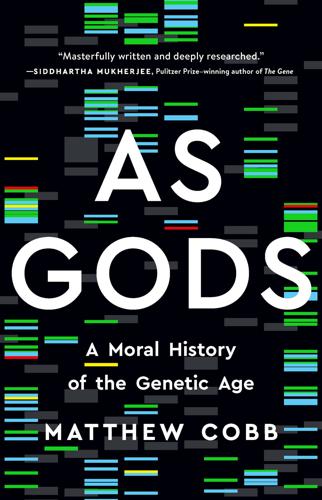
As Gods: A Moral History of the Genetic Age
by
Matthew Cobb
Published 15 Nov 2022
At the end of the 1990s, South Africa and Egypt legalised the planting of Bt cotton, while in contrast between 2002 and 2006 Zambia refused US aid deliveries of GM maize despite a massive agricultural crisis and famine.56 Sometimes, anti-GM campaigners have gone way overboard in their description of the supposed dangers of GM crops – ActionAid Uganda claimed that GM crops cause cancer, while in Ghana a leading group of activists campaigned around the slogan ‘GMO/Ebola out of Africa’.57 In South Africa, anti-GM campaigners were able to achieve a minor victory in terms of labelling of GM products and above all shifted the debate on the continent towards a much more critical stance. This could be seen in 2007, when at its foundation, the Alliance for a Green Revolution in Africa, an organisation set up to support smallholder farming throughout the continent, with support from the Bill and Melinda Gates Foundation and the British government, both of which have a record of advocating GM crops, nonetheless emphasised the importance of traditional crop breeding instead.58 A good summary of the situation is provided by Canadian environmental geographer Matthew Schnurr in his perceptive book Africa’s Gene Revolution: First-generation GM crops were developed to succeed within the confines of industrial agriculture – large-scale, heavily capitalised, mechanised monoculture.
…
A single X-shredder mouse on the loose could, it’s feared, have a similarly chilling effect – a sort of mice-nine.39 ✴ In response to the growing concern about gene drives, National Academies of Science, Engineering and Medicine (NASEM) set up a Committee on Gene Drive Research in Non-Human Organisms to report on the ethical and technical issues associated with the new technology. The Committee’s work was jointly funded and framed by the NIH, the Foundation for the National Health, the Bill and Melinda Gates Foundation and the Defence Advanced Research Projects Agency (DARPA) – by far the biggest global funder of gene-drive research.ii As with the debates that were taking place on heritable human gene editing at around the same time, the main institutional players were not interested in asking if the technology should be applied, but instead wanted to identify ‘the key scientific techniques for reducing ecological and other risks’ prior to deployment.40 At the first meeting of the Committee, DARPA representative Colonel Daniel Wattendorf warned that the panel’s work might simply be ignored if it did not come up with the answer DARPA wanted: We may not have the time in this case to actually wait for, and make calls for, certain scientific actions and communities to deliberate.
…
The WHO’s serious and detailed approach to environmental risk assessment will carry weight, even if the organisation does not have any direct regulatory authority. Some idea of what will be involved in meeting these standards can be seen in the work of Imperial College researchers funded by Target Malaria, a not-for-profit research consortium funded by the Bill and Melinda Gates Foundation. Target Malaria organised a series of workshops in Africa that explored the kinds of ecological problems that should be studied, and they identified eight major effects that could occur through forty-six plausible pathways.65 Each of these possibilities would have to be tested in the field before any decision could be taken about deployment, even if the local community were in favour.
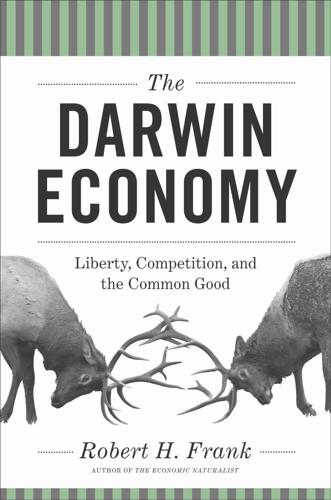
The Darwin Economy: Liberty, Competition, and the Common Good
by
Robert H. Frank
Published 3 Sep 2011
When Gates himself was later asked how many other teens had backgrounds similar to his before heading off to college, he said, “If there were 50 in the world, I’d be stunned. I had a better exposure to software development at a young age than I think anyone did in that period of time, and all because of an incredibly lucky series of events.” 7 In recent years, Gates and his wife have donated more than $30 billion to endow the Bill and Melinda Gates Foundation, which has done much to eradicate human suffering around the globe. And Gates’s father, Bill Gates, Sr., has long been a forceful critic of proposals to eliminate the estate tax. Luck in Sports The importance of each chance event supporting Bill Gates’s success may seem obvious in hindsight.
…
See sports Atlanta (Georgia), interracial couples in, 95–97 Atlas Shrugged (Rand), 202–7 autonomy, personal, 194–211; in apartmentsharing example, 195–99; link between efficiency and, 196, 199; reasons to compromise, 202–11; and retirement savings, 205–6, 208, 210; and safety regulations, 206–7, 208, 210–11; in society-formation example, 199–207; taxes as reduction of, 194; value of, to libertarians, 194–95. See also freedom Aviation Consumer Action Project (ACAP), 108–10, 179 bank loans: cost-benefit test for, 161; to labor-managed firms, 32–34 bankruptcies, role of luck in, 142 baseball, 67–68, 153, 154 Baumann, Bob, 55 Beatles (band), 147 bicycle helmets, 187–92 Bill and Melinda Gates Foundation, 145 Bloomberg, Michael, 182–83 brain, human: emotional reactions in, 140–41; evolution of, 24; relative position in, 25–26 Bridge to Nowhere, 46–47, 51 broadcast rights, 86–87 Bush, George H. W., 142 Bush, George W.: income tax cuts by, 3, 119, 155, 170; spending cuts by, 155, 170; on trickledown theory, 160 CAB.
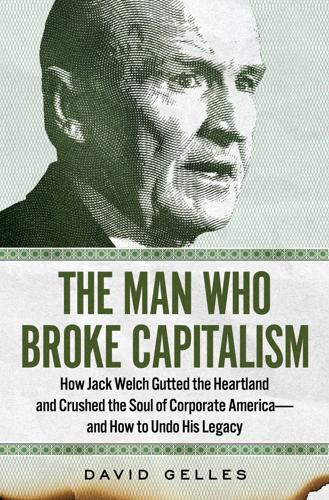
The Man Who Broke Capitalism: How Jack Welch Gutted the Heartland and Crushed the Soul of Corporate America—and How to Undo His Legacy
by
David Gelles
Published 30 May 2022
He suffered from the delusion that his money was representative of some greater intelligence, as if his ability to wring profits from a hyper-financialized multinational corporation bestowed him with the gifts of an educational reformer. It’s a delusion common to the wealthy, and Welch has hardly been the only one to turn his attention to repairing our public schools. The Bill and Melinda Gates Foundation, flush with a $50 billion endowment made possible by Microsoft’s early monopolizing, tried to use technology to overhaul curriculums in Washington State. Amazon founder Jeff Bezos has launched the Bezos Academy, a preschool designed to cultivate entrepreneurial thinking. Facebook founder Mark Zuckerberg donated $100 million to revamp the Newark public school system, an effort later deemed unsuccessful.
…
AB InBev, 178 Adbusters magazine, 150 age discrimination, 72, 113 AIG, 125–26, 144 Ailes, Roger, 53–54, 194–95 Airbus, 86, 102, 153, 155 Albertsons, 9, 77, 104–5, 106, 107 Aldrin, Buzz, 22 Allen, Robert, 71 AlliedSignal, 78–80, 220–21 Alstom, 161, 163 Amazon, 134, 171–74, 182, 184, 185, 203, 214, 216, 222–23 Ambev, 177–78 American Airlines, 153, 186 American Express, 70, 168–69 American Mortgage Insurance, 58 America’s Talking, 53–54 Amgen, 77, 106 Anheuser-Busch, 178 antitrust enforcement: GE acquisition of Alstom and, 161 impact of loosening, 38–39, 51, 79 market concentration vs., 79–80, 176–78, 219 in stakeholder capitalism, 219 Antitrust Paradox, The (Bork), 38 Apple, 214 Apprentice, The (NBC TV program), 121, 135, 195 Arctic Cat, 77 Armco, 66–67 Armstrong, Neil, 22 Arpey, Gerard, 153 Arthur Andersen, 124 AT&T, 71, 169, 175–76, 177, 182, 221, 223 Avakian, Stephanie, 225 Baker, George Fisher, 184 Baldwin, Alec, 140 Ballmer, Steve, 102, 171 Bank of America, 144, 149, 214 Barra, Mary, 199 B Corp movement, 212–13 Bear Stearns, 67, 143–44 Beasley, Jane, 118–20 Belichick, Bill, 221 Bennett, Steve, 105–6 Bennett, William, 95 Bennis, Warren, 132 Bergers, David, 147–48 Berkshire Hathaway, 222 Berle, Adolf A., Jr., 24–25, 212 Bertelsmann, 51 Bethlehem Steel, 165 Bezos, Jeff, 134, 171–74, 184, 185, 222–23 Bezos Academy, 134 Bill and Melinda Gates Foundation, 133–34 Bin Hussain, Muath, 135 Black Monday (October 19, 1987), 53 BlackRock, 213–14 Blitzer, Wolf, 90–91 Bloomberg, Michael, 132–33 Blumenthal, Richard, 82 Blystone, John, 105 Boeing, 9, 75, 77, 86–90, 126–30, 137, 186–94, 203 bailout, 224 Business Jet Project, 102, 119 Dave Calhoun as CEO, 189, 190–94, 224 Congressional investigations of 737 Max, 156, 189, 194 Covid-19 pandemic and, 224 Ethiopian Airlines Flight 302 crash (2019), 187–89, 190, 194 headquarters relocation to Chicago, 88–89, 219 Leadership Center (near St.
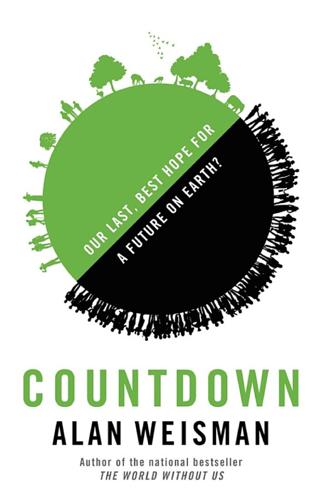
Countdown: Our Last, Best Hope for a Future on Earth?
by
Alan Weisman
Published 23 Sep 2013
The resulting “C4” rice would greatly increase yields and even be able to create its own fertilizer—the potential cited by the Vatican as how to feed a world that keeps adding more people. But that will require reconfiguring the very cell structure of rice leaves. To find a winning combination of genes and crosses amid all these varieties is, at minimum, a twenty-to twenty-five-year project. Even their funding from the Bill and Melinda Gates Foundation can’t force that schedule. By then, world population may nullify the gains, even as a renegade climate shrinks the amount of arable land, fresh water grows scarcer, and soil degrades further. C4 rice would be one of history’s major transformations of agriculture. But it, or any other improvement, can only do so much, says Sackville Hamilton.
…
His training was in economics, not family planning. Contraception, he argued, was a means for people to have a chance at prosperity, and for Thailand to have a future. “The only way out of poverty is through business and enterprise. Access to credit must be a human right.” Years later, when his PDA won the Bill and Melinda Gates Foundation’s 2007 Award for Global Health, he used part of the $1 million prize to take his “barefoot entrepreneurs” model even further, by establishing Thailand’s Global Warming Foundation. The idea was to give poor people a way to help themselves and to help meet a global emergency. Over the years, their lending had expanded to small businesses ranging from embroidered silks to ice cream to raising off-season organic limes and cantaloupes that earned several times their normal price.
…
Most U.S. donations for population programs, however, are not sluiced through the United Nations but go directly through USAID, the world’s biggest supporter of family planning and reproductive health. The rest of the funding comes from private foundations, local governments, and from consumers buying pills and condoms over the counter. In 2009, 98 percent of UNFPA’s foundation funding came from four American foundations—and 81 percent of that was from just one: the Bill and Melinda Gates Foundation.2 That the fate of the world’s women depends so much on American largesse underscores the fragility of global family planning—especially in the polarized new millennium, as a brutal partisan divide over not just abortion but even contraception has ignited what one side touts as a return to moral values, and the other calls a war on women.

The Code Breaker: Jennifer Doudna, Gene Editing, and the Future of the Human Race
by
Walter Isaacson
Published 9 Mar 2021
The program was designed to help innovators turn basic research into commercial products. It kept Caribou alive during the early years, when venture funding was not forthcoming.6 There is one other element that is now often added to the academic-government-business triad: philanthropic foundations. In the case of Caribou, that came as a grant from the Bill and Melinda Gates Foundation, which provided $100,000 to fund work on using Cas6 as a tool to diagnose viral infections. “We plan on creating a suite of enzymes that specifically recognize RNA sequences characteristic of viruses including HIV, hepatitis C and influenza,” Doudna wrote in her proposal to the foundation.
…
By then her triplets were twenty-one, and all were studying biochemistry. They volunteered to be early testers, getting the vaccine and seeing if they developed antibodies. (They did.) Trials in monkeys conducted at a Montana primate center in March also produced promising results. The Bill and Melinda Gates Foundation provided early funding. Bill Gates also pushed Oxford to team up with a major company that could manufacture and distribute the vaccine if it worked. So Oxford forged a partnership with AstraZeneca, the British-Swedish pharmaceutical company. DNA vaccines There is another way to get genetic material into a human cell and cause it to produce the components of a virus that can stimulate the immune system.
…
Abbott, Tim, 455 Abbott Labs, 430 abortion, 293, 337 Abudayyeh, Omar, 425, 426, 428, 451 ACE2 protein, 404 Achenbach, Joel, 229 ACTN3 gene, 349 adenine, 26, 27 adenoviruses, 438, 456 Advanced Photon Source, 85–86 Aeschylus, 243 Afeyan, Noubar, 442, 447 African Americans COVID vaccines and, 461 as researchers, 461 sickle-cell anemia and, see sickle-cell anemia and skin color as disadvantage, 347–48 Watson’s comments on race, 37, 49, 386–92, 394 Agee, James, 265 AIDS and HIV, 166, 305, 390, 431 He Jiankui’s removal of HIV receptor in embryos, xv–xvi, 251, 303–13, 316–24, 369, 404 sperm-washing and, 305, 322 Alda, Alan, 221 Alexander, Lamar, 328 Alliance of Chief Executives, 116 Altman, Sidney, 44–45, 53 Alzheimer’s, 250, 251, 324, 339, 365 American Association for the Advancement of Science, 268 American Cancer Society, 465 American Masters: Decoding Watson (PBS documentary), 384, 386, 389–90, 392, 393 American Society for Microbiology conference (2011), 119, 127–28 American Telephone and Telegraph Company, 90 Anarchy, State, and Utopia (Nozick), 357–58 Anderson, French, 276 Andreasen, Nancy, 352 Andromeda Strain, The (Crichton), 271 antibiotics bacterial resistance to, 121–22 penicillin, 56, 122 antigen tests, 430–31 APOE4 gene, 251 Apple, 358, 463 “Think Different” ad, 326, 371 Apollo program, 417 archaea, 71–73, 155 Argonne National Laboratory, 85–86 Aristotle, 464 Ashkenazi Jews, 389 Asilomar, 266, 269–73, 278, 286–88, 330, 331 Asimov, Isaac, 13 Aspen Institute, 228 Associated Press (AP), 308–10, 319, 321 AstraZeneda, 439 Atlantic, 281 atom bomb, xvii, 89, 117, 224, 265, 338 atoms, 8 autism, 346 Avery, Oswald, 17 Avoid Boring People (Watson), 386–87 Ax, Emanuel, 388 Azar, Alex, 407–9 babies, designer, 355–56 see also CRISPR babies bacteria, 34, 71–73, 155, 216 antibiotic resistance in, 121–22 cloning genes from, 34–35 E. coli, 71, 72, 74, 98 fruiting bodies formed by, 33 oil spills and, 232 in ponds, 402 Streptococcus pyogenes, 122, 139, 182 Streptococcus thermophilus, 91, 182 in yogurt starter cultures, xviii, 90–92, 133, 143 bacteriophages (viruses that attack bacteria), see phages Baltimore, David, 270, 272, 282, 287–88, 293, 330 at International Summit on Human Genome Editing, 315, 321, 323, 324 Bancel, Stéphane, 442 Banfield, Jillian, 78, 79, 97, 402, 472 Doudna invited to work on CRISPR by, xviii, 77, 79–80, 81, 93, 471 Bannister, Roger, 326 Bardeen, John, 90 Barnabé, Duilio, 395 Barrangou, Rodolphe, 88, 90–93, 143–46, 148, 149, 177, 178, 213, 217, 220, 223, 309, 470 Bayh-Dole Act, 232 BBC, 386 Beagle, HMS, 11–12 Beam Therapeutics, 461 Beckinsale, Kate, 219 Beijing Review, 301 Bell Labs, 89–90, 201 Belluck, Pam, 307 Berg, Paul, 98–100, 153, 232, 287–88, 330 at Asilomar, 266, 269–73 Watson and, 271 Berkeley, University of California at, 64–65, 114, 115, 117, 397 COVID and, xiii-xv Doudna at, xiii–xv, xvii, 64–65, 83, 98, 101, 107 Doudna and Charpentier’s patent with, 207–8, 210, 219, 224, 233–40 Doudna’s lab at, 103–11, 104, 117 Isaacson learns to edit at, xiv, 378, 379–83 entrepreneurship and, 115–16 Haas School of Business, 115 Innovative Genomics Institute, 248, 261, 380–82, 401–3, 456 COVID and, 401–5, 413–18, 419 Berkeley Fire Department, 406, 418 Berkeley National Laboratory, 64, 87, 117, 456–57 Better Than Human (Buchanan), 310 Biden, Joe, 465 Bill and Melinda Gates Foundation, 118, 248, 439 biochemistry, 18, 29–35, 51, 80, 183, 201, 478 bioconservatives, 267–69, 280 Biogen, 206 biohacking, 253–57, 263, 285, 288, 443–44 biology, 8, 133, 183, 474 bringing into the home, 432–33, 445, 460 central dogma of, 44, 47, 270 public interest in, 460, 473 structural, 18, 51–53, 80, 166 BioNTech, 435, 441, 445, 447 Bio-Revolution and Its Implications for Army Combat Capabilities, The (conference), 262–63 biotechnology, 64, 98–100, 113–15, 153, 211, 232, 461, 477 Asilomar and, 269–73 commercial development of, 288 crowdsourcing and, 256–57, 285 moral concerns about, see moral questions patents in, 232 regulation of, 270, 278, 281 utopians vs. bioconservatives and, 267–69 see also genetic engineering bipolar disorder, 177, 327, 352–53 Bishop, Kevin, 461 bits (binary digits), xvii, 28 Bitterman, Kevin, 209–10 Black Death, 447 black markets, 291 blindness, xviii, 250 Blue Room meeting, 206, 207 Bohr, Niels, 224 Bondy-Denomy, Joseph, 258, 260–61 Borgia, Cesare, 259 Boston Globe, 291 Bourla, Albert, 447 Boyer, Herbert, 96, 98–100, 153, 232, 266, 270 Bragg, Lawrence, 20, 23, 26 brain, 167, 207 experience machine and, 353 Brannigan, David, 418 Brave New World (Huxley), xv, 267, 269, 280, 281, 353, 358–59 Breakthrough Prize in Life Sciences, 219–21 breeding, 11, 12, 14 Brenner, Sydney, 266, 272 Brigham and Women’s Hospital, 410 Brin, Sergey, 219 Britain, 278, 294 Medical Research Council in, 26 Nuffield Council in, 293, 294 Parliamentary and Scientific Committee in, 333 Royal Society in, 292 Broad, Eli and Edythe, 175 Broad Institute of MIT and Harvard, xv, 64, 144, 160, 175–78, 187, 189, 192, 206, 330, 388, 425, 450, 453, 461 COVID and, 410–11, 429 founding of, 175 Lander as director of, 64, 144, 160, 175, 216, 220, 223, 225–28 Zhang at, xv, 159, 161, 177, 179, 184–86, 189, 374, 421, 423, 424, 450–51, 454 Zhang’s patent with, 192, 207–8, 210–11, 219, 224–27, 233–40 Brouns, Stan, 84 Brown, Louise (first test-tube baby), 274, 313, 328 Buchanan, Allen, 309–10 Buchman, Lauren, 284–86 Burger, Warren, 232 Bush, George W., 280 Bush, Vannevar, 89, 117 calculus, 159 California Institute for Quantitative Biosciences (QB3), 116 Caltech, 270 Cambridge University Cavendish Laboratory, 20–23, 26 Camus, Albert, 399 cancer, xviii, 100, 177, 259, 339, 365, 441, 442 CRISPR and, xviii, 249–51 Canseco, José, 349 Carey, Mariah, 352 Caribou Biosciences, 113–18, 203, 207–8, 213 Intellia Therapeutics, 213 CARMEN, 453, 460 Carroll, Dana, 185 Carter, Jimmy, 273 CARVER, 452–53, 455–57 “Case Against Perfection, The” (Rawls), 281 “Case for Developing America’s Talent, A” (study), 164 Cas enzymes, see CRISPR-associated enzymes Casey Eye Institute, 250 Cassidy, Bill, 328–29 Cate, Andrew, xiii, 62, 63, 97, 101, 114, 132, 199, 209, 328, 368, 402, 465, 468, 470 Cate, Jamie, xiii, 56, 57, 60, 62, 63–64, 97, 101, 114, 199, 381, 402, 422, 424, 468, 470, 472 Jennifer’s marriage to, 63 Cavendish Laboratory, 20–23, 26 CDC, 407–10 CDKN1C gene, 349–50 Cech, Thomas, 44–45, 49, 53–56 Celera, 39, 40 Cell, 143, 146, 376 Lander’s “Heroes of CRISPR” piece in, 182, 223–29, 388 Cell Reports, 143 Centers for Disease Control (CDC), 407–10 Chan, Priscilla, 472 character, 345–46 Chargaff, Erwin, 273 Charité, 124 Charles, Prince, 100 Charo, Alta, 288, 316 Charpentier, Emmanuelle, 119–28, 120, 129–32, 130, 138, 147, 204, 214, 283, 292, 330, 385, 477 Breakthrough Prize in Life Sciences awarded to, 219–21 Church and, 206 Church’s email to Doudna and, 173, 197 company formations and, 205–7, 209, 213 CRISPR Therapeutics, 207, 213, 245, 465 CRISPR paper of (2011), 125–27, 131, 147, 179–80, 185, 218 CRISPR paper written by Doudna and (2012), 126, 137–41, 144–46, 148, 149, 156, 172–73, 179, 180, 182–86, 191, 192, 194–95, 202, 227, 233, 237–38, 374–75 CRISPR paper written by Doudna and (2014), 215 CRISPR patent of Doudna and, 207–8, 210, 219, 224, 233–40 Doudna’s collaboration with, 135, 140, 160, 183, 199–200, 206, 215–21, 464–67, 475 Doudna’s meeting of, 119, 122, 127–28, 200 Doudna’s rift with, 215–21, 464, 466 Gray and, 247 Jinek and, 128 Kavli Prize awarded to, 221 Lander and, 220, 223–24 Lander’s “Heroes of CRISPR” and, 223–29, 388 media and, 216 Nobel Prize awarded to Doudna and, xix, 468, 469–73 Novak and, 122, 205–7, 213 proprietary feelings about CRISPR-Cas9, 216 tracrRNA work of, 124–27, 131, 217–18, 225 Chase, Leah, 479 chemistry, 8, 19 biochemistry, 18, 29–35, 51, 80, 183, 201, 478 Doudna’s study of, 31–34 Chen, Janice, 420, 421–24, 429–32, 451, 460 Chernobyl disaster, 262 Chez Boulay, 376 Chez Panisse, 140–41, 145 chimpanzees, 438 China, 294–95, 300, 427 Academy of Sciences in, 292, 319 cancer treatment in, 249 COVID in, 263, 403, 452 editing of nonviable embryos in, 288, 290 genetic engineering in, 301 germline editing prohibited in, 292, 317 SARS outbreaks in, 65, 403 South University of Science and Technology in, 300–301 cholesterol, 251 Choudhary, Amit, 260 Church, Gaylord, 170 Church, George, 40–41, 48, 158, 160, 167, 168, 169–74, 211, 212, 228, 262, 291, 360, 385, 470, 472, 474 Charpentier and, 206 childhood of, 170–71 company formations and, 203–6, 208, 209, 213 in competition to adapt CRISPR into tool for gene editing in humans, 64, 160, 173–74, 192–95, 197–99, 201, 202 Cong and, 177, 178, 192–94 CRISPR paper of, 192, 194–95, 197, 199, 201, 202 CRISPR paper sent to Doudna by, 197, 234 DARPA grant received by, 260 Doudna on, 172–74 at Duke, 171–72 email to Doudna and Charpentier, 173, 197 germline editing and, 291, 292, 303 Happy Healthy Baby and, 286 at Harvard, 172 Lander and, 172, 227–28 Lander’s “Heroes of CRISPR” and, 225–26 Neanderthal idea of, 205 Personal Genetics Education Project of, 220–21 prizes and, 220–21 woolly mammoth project of, 160, 169, 172 Zayner and, 255 Zhang and, 167, 174, 175, 178, 192–94 Chylinski, Krzysztof, 125, 128, 129–31, 130, 135, 142 CRISPR conference presentation of, 141, 147–48 CRISPR paper and, 137, 140 citizen involvement in science, 263, 445 Clapper, James, 259 Clinton, Bill, 39–40, 309 cloning, 34–35, 98, 153, 280, 313, 415–16 codons, 190, 191–92, 194 cognitive skills, 354, 376 intelligence, 354, 360–62, 376 Watson’s comments on, 385–87, 389–90, 392, 397 memory, 354 Cohen, Jon, 316 Cohen, Stanley, 98, 153, 232 Cold Spring Harbor Laboratory, 37–38, 48–49, 53, 271, 298, 385–91, 458 Blackford Bar at, 462–63 CRISPR conferences at, 302, 304, 385, 391, 393, 397, 415, 458, 459–67 founding of, 37, 463 Watson as director of, 37 Watson disassociated from, 386, 387, 390 Watson portrait at, 302, 384, 386, 390, 396 Collins, Francis, 36, 39–40, 294, 325, 329–31, 364, 390, 446 Columbia University, 98 Comfort, Nathaniel, 226–27 computers, xvii, 117, 163–64, 256, 358–59, 432 hacking of, 263 internet, xvii, 117, 262, 359 software, 432 open-source, 163, 256 Cong, Le, 177–78, 184, 192–94 Congress, U.S., 290–91, 294, 325, 328–29 Constitution, U.S., 231 contact tracing, 257 Conti, Elena, 84–85 continuum conundrum, 337–38 Copenhagen (Frayn), 224 Coppola, Francis Ford, 352 coronaviruses, 47, 90, 270, 339, 365, 451 CRISPR systems to detect, 118 name of, 404 PAC-MAN and, 454–57, 460 RNA of, 65, 403–4 RNA interference and, 66–67 SARS, 65, 403, 441 SARS-CoV-2, 403–4 see also COVID-19 pandemic coronary heart disease, 251 Costolo, Dick, 219 Council of Europe, 278 Count Me In, 177 COVID-19 pandemic, xiii, xv, xvii, 251, 257, 262, 335, 373, 399–475, 477 Berkeley and, xiii–xv Innovative Genomics Institute, 401–5, 413–18, 419 China origin of, 263, 403, 452 Cold Spring Harbor conference and, 459–62 CRISPR cures and, xviii, 449–57 PAC-MAN, 454–57, 460 deaths in, 404, 449 legacies of, 473–75 SARS-CoV-2 in, 403–4 testing and, xiv–xv, 405, 406, 407–11, 413–18, 427–33 antigen tests, 430–31 Broad Institute and, 410–11, 429 CDC and, 407–10 CRISPR and, 413, 417, 421–25, 427–33, 453 Fauci and, 410 FDA and, 407–10 first person in U.S. to test positive, 407 Mammoth Biosciences and, 423–25, 429–32 PCR tests, 408, 413, 416, 421, 425, 428, 430 Sherlock Biosciences and, 428, 430 Trump administration and, 411 University of Washington and, 409–10, 415 Zhang and, 421, 427–32 vaccines and, 434, 435–47, 449 clinical trials of, 435–36, 440–41, 445–46, 461 Fauci and, 442 FDA and, 446 Isaacson in trial of, 435–36, 440–41, 445–46 cowpox, 436 Crichton, Michael, 271 Crick, Francis, 20–28, 47, 166, 389, 475 at Asilomar, 269 on central dogma of biology, 44 in DNA double-helix structure discovery, xviii, 7, 11, 26–28, 29–31, 46, 51, 58, 159, 423, 470 with DNA model, 16 Franklin’s work and, 25, 26 Nobel Prize awarded to, 28, 470 Watson’s meeting of, 20 CRISPR (clustered regularly interspaced short palindromic repeats), 69–149, 449–50, 477, 480 anti-CRISPRs, 260–61 as bacterial immune system, xiv, xviii, xix, 67, 86, 87 Banfield’s enlistment of Doudna to work on, xviii, 77, 79–80, 81, 93, 471 Barrangou and Horvath’s work on, 90–93, 143–44, 177, 178, 220, 223, 470 diagram of mechanism of, 133 discovery of, 71–77 DNA targeting in, xiv, xviii, 67, 76–77, 86, 87, 93–94, 106, 111, 131, 132, 133, 146, 217 Doudna’s creation of team for studying, 103–11 enzymes in, see CRISPR-associated enzymes in vitro vs. in vivo studies of, 80, 94–95, 183, 191, 202 Koonin’s study of, 76–77, 80, 92 and linear model of innovation, 90 Mojica’s study of, 71–76, 80, 91, 92, 220, 223, 224, 470, 479 naming of, 73 RNA in, 79, 108, 133 Cas13 targeting of RNA, 423–25, 429, 451, 452, 454–57 CRISPR RNA (crRNA), 86, 106, 124–26, 131–35, 137–39, 143, 146, 147, 180, 184, 186, 217 RNA interference, 77, 79, 93 single-guide RNA (sgRNA), 134–35, 139, 186, 190, 191, 195, 198 trans-activating CRISPR RNA (tracrRNA), 124–27, 131, 134, 135, 139, 146–47, 179–80, 182, 184–86, 217–18, 225 viruses’ disabling of, 260–61 yogurt starter cultures and, xviii, 90–92, 133, 143 CRISPR applications, 243–63 affordability of, 247–48 biohacking, 253–57, 263, 285, 288, 443–44 coronavirus testing, 413, 417 cures for viral infections, 449–57 CARVER, 452–53, 455–57 PAC-MAN, 454–57, 460 defense against terrorists, 259–63 diagnostic tests for cancers, 250 diagnostic tests for viruses, 115, 118, 421–25, 431–32, 451 at-home tests, 430–32, 460 coronavirus, 413, 417, 421–25, 427–33, 453 HPV, 422–23 ex vivo and in vivo, 246, 250 germline (inheritable) editing, see human germline editing somatic editing, 246, 276–77, 288, 329, 336, 338, 341 therapies, 233, 245–51 blindness, xviii, 250 cancer, xviii, 249–51 safe viruses as delivery method in, 456 sickle cell, xviii, 245–49, 329, 340 CRISPR-associated (Cas) enzymes, 73, 76, 84, 86, 92 Cas1, 86–87, 106, 128 Cas6, 106–7, 113, 128 as diagnostic tool, 115, 118 Cas9, 86, 92, 119, 124–25, 127, 128, 129–36, 133, 422–24, 440 purchasing of, 380 see also CRISPR-Cas9 gene editing Cas12, 86, 422–24, 429 Cas13, 86, 379, 423–25, 429, 451, 452, 454–57 CASCADE array of, 111 fluorescence microscopy and, 107–8 Zhang’s work with multiple proteins, 181 CRISPR babies, 245–47, 297–332, 325–32, 335, 337 birth of, 311–13, 315, 318 He Jiankui’s conviction and sentencing for his work, 332 He Jiankui’s removal of HIV receptor in, xv–xvi, 251, 303–13, 316–24, 369, 404 CRISPR-Cas9 gene editing, xiii, xiv, xvii–xix, 60, 90, 94, 97–98, 132–36, 151–241, 272 applications of, see CRISPR applications codons and, 190, 191–92, 194 companies formed to commercialize applications of, 203–13, 430 CRISPR Therapeutics, 207, 213, 245, 465 Editas Medicine, 209–13, 250, 454 Intellia Therapeutics, 213 competition to prove human application of, xv, 64, 143–49, 155–56, 157–60, 201–2, 374 Church in, 64, 160, 173–74, 192–95, 197–99, 201, 202 Doudna in, xv, 64, 160, 173–74, 179, 187–90, 197–202 Lander in, 64, 160 Zhang in, xv, 64, 159–60, 174, 175–86, 191–95, 197, 199–202, 227 Doudna and Charpentier’s 2012 paper on, 126, 137–41, 144–46, 148, 149, 156, 172–73, 179, 180, 182–86, 191, 192, 194–95, 202, 227, 233, 237–38, 374–75 in eukaryotic cells, 148–49, 184, 237–38 as inevitable, 202 in vitro vs. in vivo, 184, 382 Isaacson’s learning of, xiv, 378, 379–83 licensing of, 208, 211 moral questions concerning, see moral questions patents for, 92, 94, 115, 135–36, 144, 156, 232–41 of Doudna, Charpentier, and Berkeley, 207–8, 210, 219, 224, 233–40 Doudna’s battle with Zhang over, 184, 194, 208, 224, 234–40, 425, 470 pool idea for, 207–8 of Zhang and the Broad Institute, 192, 207–8, 210–11, 219, 224–27, 233–40 regulation of, 255, 361 Šikšnys’s paper and, 144 transposons and, 374, 375 virus infections and, xv, xix CRISPR conferences, 93, 129 in Berkeley (2012), 140, 141, 145–49 at Cold Spring Harbor, 302, 304, 385, 391, 393, 397, 415, 458, 459–67 in Quebec (2019), 373–77 CRISPR Journal, 85, 309, 319 CRISPR Therapeutics, 207, 213, 245, 465 crowdsourcing, 256–57, 285, 464 cryocooling, 57, 63 crystallography, 84, 187 Cas1 and, 86–87 DNA and, 19–23, 51 “photograph 51,” 25, 25, 395 phase problem in, 57 RNA and, 53, 55–57, 66, 171, 181 Cumberbatch, Benedict, 219 Cure Sickle Cell Initiative, 248 Curie, Marie, 8, 470 curiosity, 478–79 of Doudna, xix, 4, 5, 8, 31, 46, 51, 479 science driven by, xix, 89, 90, 457, 473, 479 Current Contents, 72 cystic fibrosis, 248 cytosine, 26, 27 Daley, George, 282, 316, 324, 369 Danisco, 90–92, 143, 148, 177, 220 Dantseva, Dariia, 434, 443–45 DARPA, 259–62, 351, 452, 454 Safe Genes project of, 260, 262, 380 Darwin, Charles, 10, 11–14, 28, 159, 292, 302, 364, 475 Davenport, Charles, 37 Davies, Kevin, 85, 309, 320 Davis, Miles, 345 Davos, World Economic Forum in, 368 deafness, 346–48 Decoding Watson (PBS documentary), 384, 386, 389–90, 392, 393 Deem, Michael, 298, 300, 301, 307–9 Defense Advanced Research Projects Agency (DARPA), 259–62, 351, 452, 454 Safe Genes project of, 260, 262, 380 Defense Department, U.S., 4, 259, 262 Defoe, Daniel, 414 Deisseroth, Karl, 167 Delbrück, Max, 37 Deltcheva, Elitza, 125–26 Dengue virus, 424 depression, 166, 352–53 bipolar disorder, 177, 327, 352–53 Derain, André, 395 designer babies, 355–56 see also CRISPR babies Desmond-Hellmann, Sue, 100 DETECTR (DNA endonuclease targeted CRISPR trans reporter), 422–23, 429, 460 Dhanda, Rahul, 428 diabetes, 99 Diana, Princess, 100 Diaz, Cameron, 219 Dicer enzyme, 66, 79 Didion, Joan, 7 digital technology, xvii, 28, 114 disabilities, 345–48 diversity, 362, 376, 480 DNA (deoxyribonucleic acid), xvii, xviii, 17–28, 43–47 bases in, 26, 27, 37, 71, 382, 480 in central dogma of biology, 44, 47, 270 cloning, 34–35, 98, 153, 280, 313, 415–16 CRISPR sequences of, see CRISPR crystallography and, 19–23, 51 discovery of double-helix structure of, xviii, 7, 11, 26–28, 29–31, 46, 51, 58, 159, 386, 390, 395, 397, 423, 470 editing of, see gene editing Franklin’s work on, xviii, 7, 22–26, 28, 31, 46, 51, 53, 227, 389, 459, 470 “photograph 51,” 25, 25, 395 Human Genome Project and, 37–41, 43, 45, 74, 172, 175, 280, 330, 352, 388, 390, 391 “junk,” 416 model of, 16, 27 mutations in, 41, 302 Pauling’s work on structure of, 21–25, 51, 159, 391 “photograph 51” of, 25, 25, 395 race to discover structure of, 21–28, 159, 390, 391 reverse transcription and, 270, 408 sequencing of, 71–72, 74, 79, 80, 83, 172 vaccines, 439–41, 444–45, 456 in viruses, 65 in yeast, 35, 45 Dolly the sheep, 280, 313, 415–16 Double Helix, The (Watson), xix, 6–8, 9, 20, 21, 27, 29–31, 50, 157, 328, 391, 397, 398, 414, 459, 477–78 Doudna, Dorothy (mother), 2, 4, 5, 32, 98, 472–73 Doudna, Ellen (sister), 2, 472–73 Doudna, Jennifer, 2, 62, 130, 138, 158, 188, 204, 214, 282, 298 as bench scientist, 103 at Berkeley, xiii–xv, xvii, 64–65, 83, 98, 101, 107 Berkeley lab of, 103–11, 104, 117 Isaacson learns to edit at, xiv, 378, 379–83 birth of, 4 business school considered by, 98 Caribou Biosciences, 113–18, 203, 207–8, 213 Intellia Therapeutics, 213 chemistry studied by, 31–34, 478 childhood of, xix, 2, 3–8, 31, 123 Charpentier’s rift with, 215–21, 464, 466 Church’s email to, 173, 197 coauthors on papers of, 48 at conferences, 287–90, 292, 303, 332, 367, 373, 375, 385, 459–61 at congressional hearing, 325, 328–29 CRISPR work of Banfield calls and invites her to collaborate, xviii, 77, 79–80, 81, 93, 471 Breakthrough Prize in Life Sciences awarded for, 219–21 Church’s paper and, 197, 234 collaboration with Charpentier, 135, 140, 160, 183, 199–200, 206, 215–21, 464–67, 475 company formations and, 203–13 competition to adapt CRISPR into tool for gene editing in humans, xv, 64, 160, 173–74, 179, 187–90, 197–202 creation of lab team, 103–11 defense applications and, 259–61 diagnostic tests and, 422–23 Editas Medicine and, 209–13 ethical considerations of, 367–70 Kavli Prize awarded for, 221 Lander’s “Heroes of CRISPR” and, 223–29, 388 medical applications and, 247–49, 251 meeting Charpentier, 119, 122, 127–28, 200 Nobel Prize awarded for, xix, 468, 469–73 paper for eLife, 198–201, 215, 225, 237 paper written with Charpentier (2012), 126, 137–41, 144–46, 148, 149, 156, 172–73, 179, 180, 182–86, 191, 192, 194–95, 202, 227, 233, 237–38, 374–75 patent for, 207–8, 210, 219, 224, 233–40 patent battle with Zhang, 184, 194, 208, 224, 234–40, 425, 470 possible partnership with Zhang, 207–8 publicity for, 216–17, 220, 223 review article written with Charpentier (2014), 215 Zhang’s emails and, 200–201, 207 see also CRISPR-Cas9 gene editing curiosity of, xix, 4, 5, 8, 31, 46, 51, 479 The Double Helix read by, xix, 6–8, 29–31, 157, 328, 391, 397, 398, 414, 459, 477 first marriage of, 54–56, 63 Genentech and, 97–102, 103, 105, 107, 113, 114 on gene therapy, 279 germline editing views of, 331–32, 367–70 at Harvard, 34–35, 40, 64, 208 He Jiankui and, 298, 302–4, 315–17, 319, 321–24, 328, 332 in high school, 31 Hitler nightmare of, 283, 286 at Hong Kong summit (International Summit on Human Gene Editing, 2015), 282, 292–93, 366 husband of, see Cate, Jamie Innovative Genomics Institute, 248, 261, 380–82, 401–3 COVID and, 401–5, 413–18, 419 Mammoth Biosciences and, xv, 249–50, 423 medical school considered by, 98 midlife crisis of, 97, 101 Napa Valley conference organized by, 287–90, 292, 303, 332, 367 in National Academy video, 355 at Pomona College, 30, 31–34 Qi and, 453–56 at Quebec conference, 373, 375 RNA work of, xviii, 45–49, 51–61, 63, 65–67, 134, 181, 220, 435–36, 446 son of, see Cate, Andrew Watson and, xviii, 8, 29, 48–50, 396 Watson visited by, 395–98 at Yale, 52, 57, 60–61, 63 Doudna, Martin (father), 2, 3–8, 32, 34, 58–60, 397–98, 472–73 cancer of, 58–59 death of, 59–60 Watson’s The Double Helix given to Jennifer by, xix, 6–8, 477 Doudna, Sarah (sister), 2, 3, 472–73 Down’s syndrome, 337 Doxzen, Kevin, 255 dragonflies, 170 Dr.
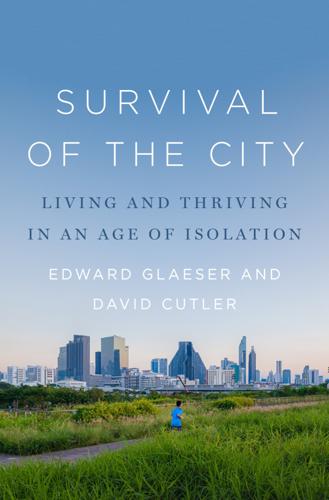
The Survival of the City: Human Flourishing in an Age of Isolation
by
Edward Glaeser
and
David Cutler
Published 14 Sep 2021
Department of Education, “Legislation, Regulations, and Guidance—Race to the Top Fund.” The only multistate consortium: National Governors Association, “Forty-Nine States and Territories Join Common Core Standards Initiative.” “to provide states”: Bill and Melinda Gates Foundation, “How We Work: Grant: National Governors Association for Best Practices.” “to increase the leadership”: Bill and Melinda Gates Foundation, “How We Work: Grant: Council of Chief State School Officers.” Developing the standards: Common Core State Standards Initiative, “Development Process.” “mountains of feedback”: Zimba, “Straight Up Conversation: Common Core Guru Jason Zimba.”
…
Major Uses of Land in the United States, 2012. US Department of Agriculture Economic Research Service, August 2017. www.ers.usda.gov/webdocs/publications/84880/eib-178.pdf?v=9775.2. “Bill Clinton Regrets ‘Three Strikes’ Bill.” BBC News. July 16, 2015. www.bbc.com/news/world-us-canada-33545971. Bill and Melinda Gates Foundation. “How We Work: Grant: Council of Chief State School Officers.” July 2009. www.gatesfoundation.org/How-We-Work/Quick-Links/Grants-Database/Grants/2009/07/OPP50935. ———. “How We Work: Grant: National Governors Association for Best Practices.” March 2005. www.gatesfoundation.org/How-We-Work/Quick-Links/Grants-Database/Grants/2005/03/OPP38008.

The New Harvest: Agricultural Innovation in Africa
by
Calestous Juma
Published 27 May 2017
The achievements reported in this book should help young Africans to appreciate the need to keep their eyes set on opportunities for agricultural improvement. As Winston Churchill so aptly put it: “The pessimist sees difficulty in every opportunity. The optimist sees the opportunity in every difficulty.” ACKNOWLEDGMENTS This revised edition is a product of the Agricultural Innovation in Africa (AIA) project, funded by the Bill and Melinda Gates Foundation. Its production benefited greatly from the input of the African Union High-Level Panel on Science, Technology, and Innovation. We are grateful for the intellectual guidance and written contributions of the members of the original AIA International Advisory Panel. The production of this book would not have been possible without their genuine support for the project and dedication to the cause of improving African agriculture.
…
We drew additional inspiration and encouragement from Alice Amsden (Massachusetts Institute of Technology, USA), Thomas Burke (Harvard Medical School, USA), Gordon Conway (Imperial College, London), David King (University of Oxford, UK), Yee-Cheong Lee (Academy of Sciences, Malaysia), Peter Raven (Missouri Botanical Garden, USA), Ismail Serageldin (Library of Alexandria, Egypt), Gus Speth (Vermont Law School, USA), and Yolanda Kakabadse (WWF International, Switzerland). We are grateful to the Bill and Melinda Gates Foundation and in particular to Brantley Browning and Rinn Self, for continuing support to the Agricultural Innovation in Africa Project at the Belfer Center for Science and International Affairs of the Harvard Kennedy School. We are also indebted to our colleagues at the Harvard Kennedy School who have given us considerable moral and intellectual support in the implementation of this initiative.

Dear Chairman: Boardroom Battles and the Rise of Shareholder Activism
by
Jeff Gramm
Published 23 Feb 2016
The business world consumes its own, and the life’s work of great investors is inevitably reabsorbed into the industrial complex with little acknowledgment of their accomplishments. If these men are remembered at all, it will probably be for how they spent their fortunes, rather than how they made them. Which brings us to Warren Buffett. Buffett’s legacy is Berkshire Hathaway. The vast majority of his wealth is going to the Bill and Melinda Gates Foundation, and Buffett requires that his annual donations be spent within one year.8 So we won’t be seeing his name on a lot of libraries, museums, or hockey arenas. Berkshire Hathaway is of course a monumental achievement. It is a vast, decentralized conglomerate, far more unwieldy than many of the companies we have seen implode in the pages of this book.
…
See also BKF Capital Group Bankers Trust, 55 Barron’s, xi, 22 Bartlesville, Oklahoma, 73–74, 84–85 Baruch, Bernard, 17 Bass brothers, 74, 262n16 Bath Iron Works, 62 Bayswater Realty, 78 Beard, Anson, 175, 182, 186, 189, 240 bear hug letters, 69–70, 81, 93, 149 Bear Stearns, 239, 241–42 Berkshire Hathaway annual letters, xx, 258n45 annual shareholders’ meetings, 45, 46, 141–42 as Buffett’s legacy, 199 Buffett’s portfolio and, 57 business model of, 46 Berle, Adolf, 194 Beverley, Robert, 153 B. F. Goodrich, 44 Biggs, Barton, 182, 183, 186, 240, 246 Biglari, Sardar, 165–68 Biglari Holdings, 166–68, 272n41 The Big Short (Lewis), 154 Bill and Melinda Gates Foundation, 199 BKF Capital Group, xiii blow up of, 186, 190–91, 192 Cannell’s letters to board of directors, 179, 181–82, 236–42, 274n30 compensation arrangements of, 187–88, 236–38 Levin and, 174–75 Levin’s letter to shareholders, 183–86, 199, 243–49 origins of, 172–74 poison pill of, 175–76, 183–84, 187, 243 reaction to activists, 182–84 staggered board of, 177, 183–84, 187, 195, 243 Steel Partners’s proxy fight for, 177–79, 185–86, 188, 189 Black, Leon, 70, 81 Blackwell, Chris, 151–52 blind pools, 71 Blue Chip Stamps, 119 boards of directors chairman role, 197 director independence and, 140–43, 185 potential problems of, 139–41 roles and responsibilities of, 138–39, 269–70nn52–53 staggered, 134, 177, 183–84, 187, 194–95, 243 Boesky, Ivan, 75, 88–89, 91, 153 Bottle, Harry, 48 Brill, Steven, 86–87, 92–93 Brog, Timothy, 198 Brooks, John, 34, 67–68 Brown, Donaldson, 23–24 Brown Brothers Harriman, 55 Bruck, Connie, 71, 80, 81 Buffett, Howard, 142 Buffett, Warren, xi American Express intervention position of, 47–48, 59–60 American Express investment of, 56–58, 60 Berkshire Hathaway annual letters, xx Coca-Cola and, 196 on director independence, 141–42 early investments of, 48–50 Einhorn and, 162 evolution of, 46–47 Graham compared to, 45, 60 legacy of, 199 letter to Howard Clark, 59–60, 218–19 Merchants National Property and, 12, 48 portfolio categories of, 57 quotes of, 45, 149, 270–71n5 on serving on boards, xiv on teaching investing, xx value investing strategy of, 45–46, 60 work with Graham, 3, 4, 17–18, 153 Buffett Partnerships, 47, 48–49 Buick, 99, 267–68n72 Burger King, 170 Burkle, Ron, 147, 270n1 Burlington Northern, 18, 82 Burry, Michael, 154 Bush, George W., 143 Bushnell, Douglas, 10–11 Cadillac, 107, 111 California Public Employees’ Retirement System (CalPERS), 75, 119, 120, 121, 148, 163 California State Teachers’ Retirement System (CalSTRS), 75, 84–85, 163 Campbell-Ewald Company, 131 Campeau, Robert, 86 Cannell, J.

Augmented: Life in the Smart Lane
by
Brett King
Published 5 May 2016
Figure 5.8: The rHEALTH desktop tricorder (Credit: DMI and XPrize Foundation) Figure 5.7: A microfluidic sample for using the DMI rHEALTH Tricorder But why do we need to go to a place, such as a pharmacy or a doctor’s surgery, at all? The winner of the 2014 Tricorder XPrize, created by Peter Diamandis and sponsored by the likes of Nokia and Qualcomm, was an eight-year-old company that has received grants and support from NASA, the National Institutes of Health, the Bill and Melinda Gates Foundation and many others. DNA Medical Institute (DMI) is the creator of a device called rHEALTH (short for Robot or Remote Health). Figure 5.9: The Scanadu Scout Tricoder (Credit: Scanadu) The rHEALTH diagnostic system requires a patient to provide just a single drop of blood. This drop of blood is dropped into a small receptacle, where nanostrips and reagents react to the blood’s contents.
…
When we go fully machine-to-machine for all sorts of day-to-day applications early in the next decade, sensor nets will explode and small ubiquitous computing devices will be everywhere: everything that can be turned on or off, or needs to be monitored in some way, will be an IoT device linked to the cloud. A huge subset of this will be wearables, ingestibles and sensors that monitor our health in real time and well-being in real time. 5. Networking the Developing World. Led by the likes of the Bill and Melinda Gates Foundation, Facebook, Google and Internet.org, we’ll move to give 2 to 2.5 billion people access to the web via mobile devices predominantly. Cheap, ubiquitous smartphone access will emerge, and slowly but surely so will Internet access, followed by commerce. 6. Developers, Human Computer Interaction and Experience Design Practitioners.

Who’s Raising the Kids?: Big Tech, Big Business, and the Lives of Children
by
Susan Linn
Published 12 Sep 2022
Some years earlier, Rachael Stickland encountered a different edtech problem in her children’s school district—a proposed cloud-based administrative platform called inBloom. In 2013, Rachael’s children were attending school in Jefferson County, Colorado, when she learned her district signed up to pilot inBloom, the Bill and Melinda Gates Foundation’s $100 million edtech tool designed to capture and aggregate an astonishing array of student data, including disciplinary records, medical history, and counseling records. The stated purpose of inBloom was to make it easier for teachers to meet students’ individual needs, but the data collected would also be made available to other edtech vendors looking to sell their wares.8 Rachael says, “I was concerned about the amount and kinds of data they were going to collect and who was going to have access to it.
…
(American Speech-Language-Hearing Association), 238 Beanie Babies, 84 BEGIN (early learning tech company), 136 behavioral advertising, 46, 136, 195 Benford, Criscillia, 44n, 46n, 183–84 Benjamin, Ruha, xv Bequelin, Nicholas, 68 Bernays, Edward, 168–69 Bezos, Jeff, 77 Biden, Joe, 203 Big Food, 198. See also food industry Big Tobacco, 198 Bill and Melinda Gates Foundation, 233, 234 Bill of Rights Institute, 172 Billboard charts, 90 Bisiewicz, Amy, 245n Black Barbie, 157 Black Lives Matter movement, 150, 152 The Bluest Eye (Morrison), 155 Bollywood films, 157 Boninger, Faith, 197 Bookis, Deborah, 245n books. See e-books; reading books boredom the “Alexa, I’m bored” feature, 139–40 providing opportunities to generate tech-free solutions to, 224–25 Boss Baby (film), 139 Boston Children’s Hospital, 3, 27–28 Bowling Alone (Putnam), 132 boyd, danah, 221 BP (British Petroleum), 165, 171 Brand Strategy (magazine), 47 branding, 5, 13–14, 57–76, 89 brand-licensed children’s products and toys, 13–14, 29–30 brand-loyalty, 66–68, 134, 164, 165, 172, 184 churches/religious institutions, 71 corporate-financed advertising in schools, 164, 165, 172, 184 differentiating brand impression from reputation, 66 and edtech, 71, 184 presidential, 67, 69–7 social media and brand tribes, 63–65 social media and self-branding, 5, 72, 76, 219 social media influencers, 72 Toys “R” Us marketing, 58–61 young children and, 89–90 Bratz dolls, 59, 85 Brazil, 160–61 Britain adoption of Age-Appropriate Design Code, 200–201, 203 Quakers’ efforts to end of slavery, 230 screen time recommendations, 21 studies of touch screen-use by babies and toddlers, 42 British Food Journal, 116 British Medical Journal, 103 Bronfenbrenner, Urie, 65, 91 Broussard, Meredith, 150 Brown, Pat, 175 Buffett, Warren, 174 Bush, George H.W., 69 Bush, George W., 69, 91 BuzzFeed, 74 campaign finance reform, 199 Campaign for a Commercial-Free Childhood (CCFC), 3.
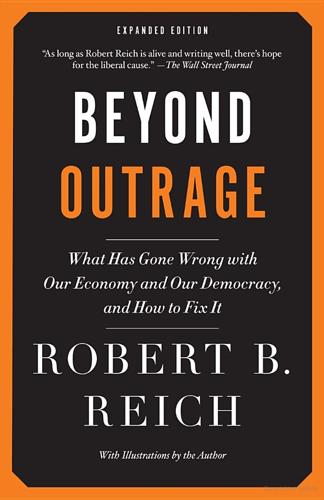
Beyond Outrage: Expanded Edition: What Has Gone Wrong With Our Economy and Our Democracy, and How to Fix It
by
Robert B. Reich
Published 3 Sep 2012
That way the rest of us—who are struggling harder than Americans have struggled since the 1930s—won’t have to sacrifice quite as much. Some apologists point to the generosity of the super-rich as evidence they’re contributing as much to the nation’s well-being as they did decades ago, when they paid a larger share of their earnings in taxes. Undoubtedly, super-rich family foundations, such as the Bill and Melinda Gates Foundation, have done much good. Super-rich philanthropic giving is on the rise. Here’s another parallel with the Gilded Age of the late nineteenth century, when magnates like Andrew Carnegie and John D. Rockefeller established philanthropic institutions that survive today. But a large portion of charitable deductions claimed by the wealthy go not to the poor.
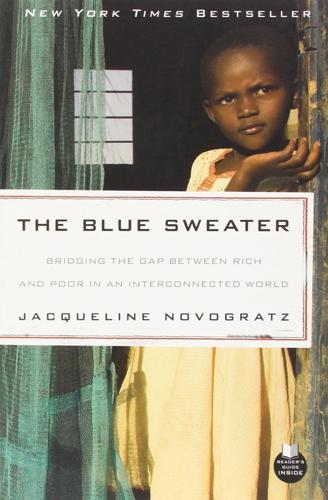
The Blue Sweater: Bridging the Gap Between Rich and Poor in an Interconnected World
by
Jacqueline Novogratz
Published 15 Feb 2009
Without a reliable source of bed nets, people may find themselves abruptly cut off from a supply when they most need it. It’s not “either-or,” but rather “both-and.” We have to be careful, as well, that the world’s focus on bed nets doesn’t hold back other potential innovations. The Bill and Melinda Gates Foundation has put hundreds of millions of dollars into researching a malaria vaccine, and efforts are under way to create a line of house paints that kill mosquitoes but are safe for humans to touch. These are exciting possibilities that will work only if the world learns how to collaborate in a system-wide assault on the disease.
…
See also specific name African writers, 51 Agnes (Rwandan parliamentarian) bride price and, 63 with Duterimbere, 46–47, 49, 55–56, 59–60, 67–69, 71, 184, 186 genocide and, 164–65, 169 at international conferences, 67 postgenocide and, 181–90, 193 view of Rwanda of, 185–86 AIDS, 113, 274 Aisha (African woman), 21–25, 28 Akagera National Park (Rwanda), 51 Alexander, Margo, 220 Alphonse (Mount Nyiragongo guide), 123–25 Alphonsine (Duterimbere success story), 208 Anne Marie (Duterimbere manager), 203–5 Antonia (Novogratz’s friend), 217 Anunziata (Honorata’s twin sister), 167–72 Aravind Eye Hospital (India), 221–25 Aristotle, 143, 216 Arrendt, Hannah, 181 Arusha Accord (1993), 194 Asdar, Adnan, 280–81 Aslam, Jawad, 240–41, 244, 246 Asumpta (Duterimbere success story), 208 A to Z Textiles, 259–62 Augustin (Liliane’s son), 177, 201, 209 B Bakery project. See Blue bakery Banks, 7, 268 Bartering, 65–66 Bassani, Bilge Ogun, 39–40, 53 Beatrice (Jamii Bora member), 273–74 Biko, Stephen (Steve), 101 Bill and Melinda Gates Foundation, 264, 270 Bilo (Kenyan security guard), 92 Blackwell, Angela Glover, 154–55 Blackwell, Unita, 159–60 Blue bakery accounting and accountability problems of, 79–80 Consolata and, 75, 78–81, 81 expansion of, 87 financing, 75–76 founding of, 72–76 Gaudence and, 75, 80–81, 85–86 growth of, 79, 82–83, 87–88 Honorata and, 73–77, 78 Josepha and, 75, 83, 86 legacy of, 164 lessons learned from, 86, 88 messages of, 88 painting building of, 85–86 postgenocide, 163–64 Prisca and, 74–78, 79–85, 88 Prudence and, 72 quality control and, 88 sales tactics of, 78–79, 80–81 setbacks of, 83, 86–88 success of, 113 Blue sweater story, 1–3, 272 Bohri woman, 236–37 Boniface (Rwandan driver), 37–39, 42, 47, 64–67, 72, 78–79, 83, 86, 106–7, 163 BPO, 233 Brazil, 7–8 Bride price, 62–63 Bright, Rita, 156–57 Brown, Tim, 230 Buddha, 146 Buffet, Warren, 284 Burundi, 13, 51 Business processing outsourcing (BPO), 233 Buxbaum, David, 220, 226 C Cambodia, 144–45 Capitalism, future of, 136 Carnegie, Andrew, 143 Catfish factories (Mississippi Delta), 159–61 Catherine (Acumen Fund fellow), 278 Cesare (Rwandan doctor), 90 Charity, traditional, 76, 151, 211, 218, 228–29 Charles (Novogratz’s friend), 84–85, 108–10, 113, 120–25 Charlotte (restaurant proprietor), 205–7, 262 Chase Manhattan Bank, 5–7, 11, 56, 64 Chloroquine, 255–56 Choices, 115 Chowdhury (Indian guide), 118–19, 267 Churchill, Winston, 17 Cisco Foundation, 217, 220–21 Cissy (Ugandi woman), 17–19 Citibank, 238 Citizens Foundation, 280 Collaboration, 280 Collette (Honorata’s mother), 167–68, 174–75 Colombia, 158–59 Committee decision making, 139 Community and community work, 4, 55, 284 Consolata (blue bakery worker), 75, 78–81, 83 Constance (Rwandan parliamentarian), 46–49, 63–64 Conviction, 284 Conway, Sir Gordon, 213–14 COOPEDU (credit union), 206 Corruption, 98–99, 184, 211–12 Cost of Good Intentions, The (report), 148–49, 151 Cote d’Ivoire, 15, 19–28, 63 Cry Freedom (film), 101 D Dalit caste, 247 Damascene (office assistant), 112 Dativa (bank executive director), 203 Davidson, Stuart, 215–17 Democracy, attempts to impose, 187–88 Dhammayietra (pilgrimage), 144–45 Dieu Donne (Zairean artist), 57, 126, 204 Discipline, 272 Diversity, 154–55, 188 Doctors without Borders, 171 Dot-com boom, 213, 217 Drayton, Bill, 214–15 Drip irrigation projects, 247–51 Drishtee, 231–33, 275 Duncan (engineer), 131–32 Duterimbere.
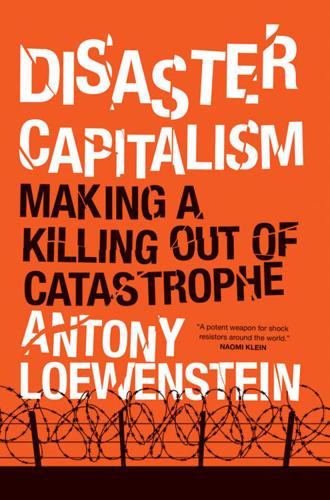
Disaster Capitalism: Making a Killing Out of Catastrophe
by
Antony Loewenstein
Published 1 Sep 2015
Public health was so compromised that there was little government infrastructure to keep food and water away from infected waste (though one of the few Haitian government departments with a moderately decent record, thanks partly to US aid, was the Health Ministry, especially in the areas of child vaccination and HIV treatment).23 Around 60 percent of schools lacked toilets. Although a few international organizations, such as the United Nations and the Bill and Melinda Gates Foundation, had argued for privatized projects since the cholera outbreak, there was little evidence of progress.24 A rare exception was the open-air clinics for cholera patients designed by a firm in Boston, MASS Design Group, and built by Haitians. These facilities aimed to combine clever architecture and health provision to reduce future epidemics.25 Put starkly, Haiti was a state that was terminally crooked when other nations were seen as more worthy of donor funding.
…
Index Abbott, Tony 279, 286 Abdul (asylum seeker) 286 Abu Ghraib prison 15 abuse 258–62 aid 123 child 102 drug 37–9 human rights 110 labor 29 outsourced 260–1 in prisons 216–17, 218 sexual 252–8, 280–1 accountability 16, 30–1, 180, 277, 291, 310 Adam, Harry 118 AECOM 53–4 Aegis Defence Services 33 Afghan Institute for Strategic Studies 44 Afghanistan 12, 19–56, 59–63, 117, 175 arrival of PMCs 20 asylum seekers from 69–70 Australian contractors 60 casualties 32, 326n27 Chinese support for 37 contractors 28–31 corruption 22, 24, 27, 42, 45, 328n48, 329–30n58 counterinsurgency 43, 52–3 departure of foreign troops 62–3 dependence on America 45 development support 62–3, 324n2, 324n3 drug economy 37–9 election, 2004 31–2 election, 2009 32 election, 2014 32 entrepreneurs 56 fear of resurgent Taliban 44–5 financial situation 62–3 future of PMCs in 23 GDP 330n61 human rights 42 inequality 56 insurgency 12, 32 intelligence gathering 51–6 intelligence-sharing nations 21 invasion of 20, 31 labor abuses 29 laws against PMCs 21 locals’ view of 48 mineral rights 24, 330n65 mining industry 24, 49–50, 330n65 Ministry of Interior 21, 40–2 Ministry of Mines 50 natural resources 49 night raids 43, 46, 52, 54, 55, 328–9n50 occupation of 22, 31–5, 36, 43, 44, 52–3, 63, 325n10 official line 40–3 past conflicts 36–7 PMC numbers 20 population surveys 330–1n66 private military companies 16, 19–25, 33–5, 41–3, 44, 46–8, 48, 50, 59–62, 331n69 propaganda 26 reconstruction 325n11 resource exploitation 49–50 security forces 27, 330n61 Soviet invasion 37 suicide attacks 41 suicide rates 332n83 Taliban rule 25 translators 55, 325n19 USAID 327–28n46 US military bases 28 violence 20 war economy 25–31, 38, 63 warlords 32–3, 44, 326n28, 326–7n30 women in 44, 47–8, 48–9, 50–1, 330n59 Afghanistan Analysts Network 54–6, 328–9n50 Afghanistan Reconstruction Group 26 Afghan police force 27 Afghan Public Protection Force 21 Africa 23 African-Americans, incarceration rates 195, 196 Agility Logistics 124 aid Afghanistan 62–3 Australia 50 contracts 123–5 corruption 126, 171 criticism of process 144–7 food 145–6 fraud 123–4 Haiti 12, 108, 120, 144–7, 340n56, 342n89 human rights abuses 123 NGO-ization of 137–41 Papua New Guinea 13, 158–9, 167, 171–5, 179 profiteering 139 waste 146 aid dependency 121, 126 AIDS 89 Alexander, Michelle 195–6 Alex, Commander 156–7 Al-Hussein, Zeid Ra’ad 277 Al Jazeera America 29 American Correctional Association (ACA) conference, 2014 202–11 American Legislative Exchange Council (ALEC) 201 American University of Afghanistan 43–4 Amnesty International 259 Anastasiou, Vassilis 102 Anti-Defamation League 93 anti-fascist activism 93–4 anti-Semitism 90–1, 93 Arab Spring 97, 127–8 Arawa, Papua New Guinea 158, 167, 180–4 Aristide, Jean-Bertrand 26, 112–13, 151 Arizona 200–2 AshBritt 108 Ashton, Paul 201 assassinations 323n33, 331n69 Assessing Progress in Haiti Act (US) 124 Asylum Help 234 asylum seekers abuse 258–62 austerity 69 Australia 269–305 children 249–50 closed hospitality centers 67–8 costs 304 demonization of 77, 288 deportations 258–63 destinations 68 detention centers 13, 64–71, 76, 77–80, 230–5, 245–51, 271 detention costs 281–3 detention network privatization 77 Greece 64–71, 75–7, 77–80, 89 indefinite detention 68 lack of sympathy for 287–8 medical care 77–80, 256–8 mental health 254–5, 285, 286, 295, 302 motivation 68, 302–3 numbers reaching Europe 96 privatized housing 230–5 processing times 300–1 public sympathy 271 racist violence 71 reception centers 67 refugee crisis 95–8 self-harm 295–6 sexual abuse 280–1 Syntagma Square protest, 2014 70 United Kingdom 230–5, 244, 245–51, 252–8, 258–63 women 253–4 Athens 67, 102–3 Metropolitan Community Clinic 80–4 AusAID 158–9, 161, 171–5, 182, 189–91, 331–2n77 austerity, opposition to 72–5 Austin American-Statesman 108 Australasian Centre for Corporate Responsibility 190 Australasian Correctional Management (ACM) 282 Australia 8, 104 and Afghanistan 50 aid 50 asylum policy development 275–85, 286, 357n4, 357n9 asylum seeker network 269–305 asylum seekers 13 Community Assistance Program 304 complicity with BCL 160 Department of Immigration and Border Protection (DIBP) 271, 274, 279, 281–2, 284,286, 289–93, 295, 297–8, 300–1, 303 detention centers 13, 271, 274, 276, 278–9, 280–5, 285–305, 356n2, 357n11 detention costs 281–3 economic reforms 322n16 exploitation of Papua New Guinea 169–75 foreign policy 173–4 goals in PNG 172 immigration policy 278 “Mining for Development” initiative 190 the Pacific Solution 276–81 and Papua New Guinea 154, 160, 163, 167, 169–75, 176–7, 179, 188–91 PMC contractors 60 privatization 361n51 and Rio Tinto 162 state-ownership approach to resources 177 tender process 289–90 turnback policy 280, 286 Australian Mercy 285 Australian Navy 276 Australian Strategic Policy Institute 190 Autonomous Bougainville Government 161, 167, 178–80, 184, 346n33 Avera eCare 205 Avon Protection 203 Bagram prison 31 Bainimarama, Frank 346–7n41 Baker, Charles 117 Baldry, Eileen 285 Balkonis, Thomas 78–80 Bamazon (TV program) 306–7 Bangladesh 341n65 bank bailouts 3 bankers bonuses 4 Ban Ki-moon 113 Bank of America 3 Barnardo’s 249–50, 266 Barrick Gold 174 Batay Ouvriye 126 Bauer, Shane 204, 207–8, 210 bearing witness 9–10 Becket House, London 263 Bedford, Yarl’s Wood detention centre 252–8, 265 Behavioral International 227 Berati, Reza, murder of 283 Berghorn, George H. 204 Berman, Steve 187 BHP Billiton 172–3, 187, 189 Bigio, Gilbert 108 Bill and Melinda Gates Foundation 114 Bishop, Julie 176, 182 black sites 16 Blackwater 16, 35, 59, 323–4n40, 331n69 Blair, Tony 60, 236 Blanchard, Olivier 99 bloggers 308 Bloom, Devin D. 307 Blue Mountain Group 30 Boeing 15–16 Bolivia 26, 125 Booz Allen Hamilton 15 border controls, privatization 241 Bougainville Copper Limited (BCL) 159, 159–61, 162, 163, 184–6, 188, 190, 343n6 Bougainville, Papua New Guinea 154–64, 167–9, 176, 178–80, 184–5 Bougainville Revolutionary Army (BRA) 154–5, 163–4, 176, 343n6 Bougainville Women in Mining 183–4 Bozorg (asylum seeker) 232–3 Brand, Russell 267–8 bribery 22, 38, 41, 329–30n58 Brown, Bob 174 Brown, Michael, killing 203 Buckles, Nick 283 Burma 14 Bush, George W. 7, 25, 43, 118, 149 Cable, Vince 236 CACI 15–16 California 5, 196–7, 208 Callick, Rowan 176 Call Sense 210 Cambodia 276 Cameron, David 50, 62, 243, 244, 252, 263 Campbell, Chad 201 Campbell, David 284, 359n30 Campsfield detention facility 246–9, 266–7 Canada 120, 304 Capita 241–2 Capital in the Twenty-First Century (Piketty) 6 capitalism 1–2 critiques 361n5 disaster 6–9 Klein’s critique of 7–8 predatory 11, 13–14, 162, 310–11 unregulated 135–6 Caracol industrial park, Haiti 116, 128–33, 133–6, 148 Carol (senior analyst) 54–6 Carr, Bob 188–9 Cash, Linda 279 Centre for Economic and Policy Research (CEPR) 124–5 Centre for Public Integrity 34 Chalmers, Camille 151–2 Chaman (Afghan refugee) 64–71 Channel 4 News 253, 267 Chaparro, Enrique Mari 137–9 cheap labor 117, 127, 132, 133, 144 Chemonics 123 Cheney, Dick 28, 30 CHF International 138–9 child abuse 102 children detention 249–50, 272 immigrants 212, 225 malnourished 82 in prisons 208 child slaves 145 China 14, 16, 24, 37, 49, 170 China Metallurgical Group Corporation (MCC) 24 cholera 113–16 Chomsky, Noam 238, 310 Christmas Island 269–75, 356n1 Christmas Island Community Reference Group 356–7n3 Christmas Island detention facility 271, 272–3, 274, 276, 278–9, 285–9, 299–305, 356n2 Chrysohoidis, Michalis 67–8 CIA 15, 59, 110, 331n69, 331n73 Citizens for a Free Kuwait 25 City AM (newspaper) 236–7 civilian casualties, Afghanistan 32 Clarke, Victoria 26 Clayton Homes 118 climate change 1–2, 8 Clinton, Bill 116, 118–19, 122, 123, 135 Clinton Foundation 118, 126, 136 Clinton, Hillary 8, 30, 118, 125, 131, 135, 171 Clive (information management consultant) 51–2 Clive (Serco contractor) 289–92 Coffey International 162 Colas, Landry 131 Cold War 33, 111 Collective Against Mining 121 colonialism 109, 160 Comcast 5 Commission on Wartime Contracting (US) 34 Community Assistance Program, Australia 304 community mapping 58 Conflict Mapping in Afghanistan since 1978 (Independent Human Rights Commission) 32 Congo, Democratic Republic of 120 contractors, Afghanistan 28–31 Conway, Jim 208–9 copper mining, ecological damage of 173 Corcoran, Thomas J. 110–11 Corinth detention centre 64, 78–80 Corizon 209 corporate ideology 14 corporate power 7 Corporate Responsibility Coalition 187–8 Corporate Watch 255, 263 CorrectHealth 199 Corrections Corporation of America (CCA) 13, 197–8, 199, 201–2, 211–22, 227, 228, 284–5 corruption Afghanistan 24, 27, 42, 45, 328n48, 329–30n58 aid 126, 171 Greece 64, 72 Haiti 141 overcharging 240–1 Papua New Guinea 170, 171, 188 price-gouging 292 counternarcotics information campaign 26 Crocker, Ryan C. 43 Crockett, Greg 204–5 Crossbar 204–5 Cuba 122 cultural sensitivity 21 Daily Mail 235 Daily Telegraph (Sydney newspaper) 172 Damana, Chris 184–5 Das, Satyajit 309 Daveona, Lawrence 177–8 David (Serco source) 292 Davis, Raymond 57, 331n73 Davis, Troy 199 Davos conference, 2015 2–3 debtocracies 99 Defence Logistics Agency 29 democracy 16, 311 Democracy Now!

Finance and the Good Society
by
Robert J. Shiller
Published 1 Jan 2012
In our own time, perhaps inspired by Carnegie, Bill Gates and Warren Bu ett, currently the two richest men in the United States according to the Forbes 400 survey, have begun advocating what they call the “giving pledge.”6 Wealthy people are asked to pledge half of their wealth to philanthropy before they die. In 2010 they both traveled to China and invited fty of the wealthiest people in that country to meet with them to hear about the pledge. The Bill and Melinda Gates Foundation gives to a number of international causes. It does this in a di erent way than governments, which are often hampered by having to justify their activities as being in the national interest. For example, the foundation gave a grant to the Liverpool School of Tropical Medicine to nd a cure for river blindness, a disease that is a scourge in poorer regions of Africa and Asia.
…
See also financial institutions; investment banks; mortgage lenders; regulation, financial banksters, 37 Barro, Robert J., 133 Bartels, Larry M., 92 Basel Accords, 40, 55 Basel Committee on Banking Supervision, 40, 157 baskets, 147 Bear Stearns, 43, 45, 176 beauty: in finance, 133–34; symmetry and, 131–32, 133 Bebchuk, Lucian, 24, 25 Behan, Brendan, The Hostage, 238–39 behavioral economics, 9, 177, 238 behavioral finance, 9, 139, 235 benefit corporations, 121–22, 208 Berger, Helge, 158 Berle, Adolf A., 121 Bernasek, Anna, 36 Bill and Melinda Gates Foundation, 126 bipolar disorder, 173 Black, Fischer, 132, 186 black swan events, 35 Blair, Tony, 2 Bloom, Paul, 145 boards of directors: cronyism, 24–25; duties, 121; independence, 24; of nonprofit organizations, 120; reforms, 24; union representatives, 121, 249n4 (Chapter 17) Bodnaruk, Andriy, 28 Boehmer, Charles, 229 Bogle, John C., 33 bonds: GDP-linked, 117; inflation-indexed, 144–45, 146; social policy, 71.

User Friendly: How the Hidden Rules of Design Are Changing the Way We Live, Work & Play
by
Cliff Kuang
and
Robert Fabricant
Published 7 Nov 2019
Meanwhile, the spread of M-Pesa, the world’s most popular mobile money system, has yielded a platform for dozens of new services, such as Digifarm, a farmers’ marketplace (which was created by Safaricom, working with Dalberg Design). 3. Interview with Harry West, March 3, 2016. 4. See “How We Work Grant: IDEO.org,” Bill and Melinda Gates Foundation, www.gatesfoundation.org/How-We-Work/Quick-Links/Grants-Database/Grants/2010/10/OPP1011131; “Unlocking Mobile Money,” IDEO.org, www.ideo.org/project/gates-foundation; and “Giving Ed Tech Entrepreneurs a Window into the Classroom,” IDEO.org, www.ideo.com/case-study/giving-ed-tech-entrepreneurs-a-window-into-the-classroom. 5.
…
“Fitting the Machine to the Man.” Fortune, November 1954. Benton, Joshua. “The Forces That Drove This Election’s Media Failure Are Likely to Get Worse.” Nieman Lab, November 9, 2016. www.niemanlab.org/2016/11/the-forces-that-drove-this-elections-media-failure-are-likely-to-get-worse/. Bill and Melinda Gates Foundation. “How We Work Grant: IDEO.org.” Accessed December 9, 2017. www.gatesfoundation.org/How-We-Work/Quick-Links/Grants-Database/Grants/2010/10/OPP1011131. Bjork, Daniel W. B. F. Skinner: A Life. Washington, D.C.: American Psychological Association, 1997. Borges, Jorge Luis. “On Exactitude in Science.”
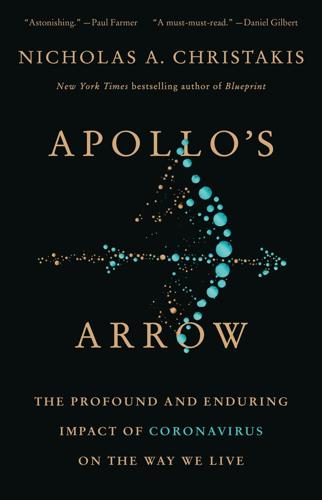
Apollo's Arrow: The Profound and Enduring Impact of Coronavirus on the Way We Live
by
Nicholas A. Christakis
Published 27 Oct 2020
The identification of a path to eradicate smallpox a hundred and fifty years after Jenner’s experiment with cowpox and our ultimate success against this scourge—it was declared eradicated in 1980—also fed this confidence. Of course, smallpox had the salient advantage of lacking any animal reservoir, so once gone from humans, it was forever gone. Polio nowadays offers a similar opportunity, and in 2016, after many years of coordinated international effort and support from the Bill and Melinda Gates Foundation, there were only forty-six cases of this disease worldwide. The mid-twentieth-century optimism about disease eradication was quite broad. But smallpox and polio are exceptional cases, and these optimistic views were held despite the occurrence of the 1957 and 1968 influenza pandemics, an oversight that is hard to understand in hindsight.
…
I am very grateful to my dear friend Dan Gilbert for feedback on parts of the manuscript and to my other colleagues who read it, including Amy Cuddy, Paul Farmer, Jeff Flier, Steven Pinker, and William Nordhaus. My siblings, Quan-Yang Duh, Dimitri Christakis, and Anna-Katrina Christakis, also offered useful insights. I am very grateful to several foundations that have generously supported my lab in recent years, including the Bill and Melinda Gates Foundation, the NOMIS Foundation, and the Robert Wood Johnson Foundation, and also to the Tata Group for its long-term alliance with Yale University. It is always a joy to work with my phenomenal longtime editor, Tracy Behar; she offers kind encouragement, wise advice, and perfect editing in an inimitable manner.
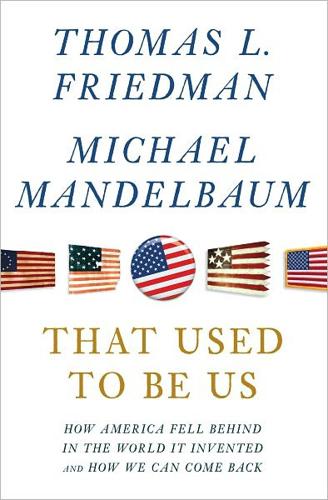
That Used to Be Us
by
Thomas L. Friedman
and
Michael Mandelbaum
Published 1 Sep 2011
Teachers and Principals While teachers and principals cannot be expected to overcome our education deficits alone, outstanding teachers and principals can make a huge difference in student achievement. So we need to do everything we can as a society to recruit, mentor, and develop the best cadre of teachers and principals that we can. Bill Gates, whose Bill and Melinda Gates Foundation invests heavily in studying and improving K–12 public school education, says its research shows that “of all the variables under a school’s control, the single most decisive factor in student achievement is excellent teaching. It’s astonishing what great teachers can do for their students.
…
-China Relations Associated Press Association for Computing Machinery Atlanta Atlanta Journal-Constitution Auburn University Auguste, Byron Australia Austria automation automobile industry, see cars; Ford Motor Company; General Motors Autor, David B Baathists Bachmann, Michele Baer, Don Baghdad Bahrain Bain & Company Baltimore Orioles baseball team Bangalore (India) Bangkok Bank of America bankruptcy; of municipal governments Bankruptcy Abuse Prevention and Consumer Protection Act (2005) Barber, Michael Battle Hymn of the Tiger Mother (Chua) Bayh, Evan Bay of Pigs invasion BBC Bear Stearns Beck, Glenn Becker, Dan Bell, Alexander Graham Bennett, Robert Benton, Thomas Berkshire Hathaway Berlin Berlin Wall; fall of Beta Bytes Bethesda Naval Hospital Bhagwati, Jagdish Biddle, Mike Bihar (India) Bill and Melinda Gates Foundation bin Laden, Osama biofuels Biofuels Digest BlackBerry blacks, see African Americans Blackstone Discovery Blankfein, Lloyd Blinder, Alan Bloomberg BusinessWeek Bloomberg News Bloom Energy Boehlert, Sherwood Boeing Company Bonaparte, Napoleon Bosnia; immigrants from Boston Boston Red Sox baseball team Bowles, Erskine Boxer, Barbara Boyd, John Boys and Girls High School (Brooklyn, New York) Bradsher, Keith Brazil Bretton Woods Agreement Bridges, Beau Bridges, Jeff Britain Brookings Institution Brooks, Preston Brownstein, Ronald Bryan, William Jennings budget deficits; lobbyists and; partisan polarization and; reduction of; state; tax cuts and; wars and Budget Reconciliation Act (1993) Buffalo (New York) Buffett, Warren Bull Moose party Bull Run, battle of Bumpers, Dale Burger King Burkhardt, Dan Bush, George H.

How Markets Fail: The Logic of Economic Calamities
by
John Cassidy
Published 10 Nov 2009
“By all reports, he ended up a tragic figure, a willing puppet of the communist regime, never able to achieve in practice what he had preached in theory,” Milton and Rose Friedman, who arrived in Chicago a year after Lange left, later wrote. “His personal life, also, was devastated. He abandoned his wife, who returned to the U.S. a sad and lonely figure. When he traveled abroad, it was with another woman, widely suspected of playing a dual role as companion and communist watchdog.” * The existence of the Bill and Melinda Gates Foundation, to which Gates has donated billions of dollars, suggests this example is strictly illustrative. 5. THE MATHEMATICS OF BLISS The revival of interest in the work of Walras and Pareto, which began in the 1930s, continued in the years after World War II. Until this stage, the various attempts to formalize the theory of the invisible hand had been scattered around.
…
Attlee, Clement Australia Axelrod, Robert Aylwin, Patricio Bachelier, Louis Bagehot, Walter Baker, James Bank of America Bank of England Monetary Policy Committee Bankers’ Panic (1907) Bankers Trust Bank for International Settlements Baran, Paul Barclays Bank Barings Bank Barone, Enrico Barro, Robert Barron’s Bartlett, Bruce Bator, Francis Baumol, William Bayh-Dole Act (1984) B&C lending Bear Stearns Beatles Beauty Contest theory Bebchuk, Lucian Becker, Gary behavioral economics Bell Laboratories Beneficial Finance Bennett, Alan Bentham, Jeremy Berkshire Hathaway Inc. Berlin Wall, fall of Bernanke, Ben Friedman lauded by response to market meltdown of subprime crisis underestimated by Beveridge, William Biggs, Barton Bikhchandani, Sushil Bill and Melinda Gates Foundation Binmore, Ken Black, Fischer Black Monday crash of 1987 Black Panther Party Black-Scholes option pricing formula Blackstone Group Blair, Tony Blankfein, Lloyd C. Blaug, Mark Blinder, Alan bliss point Bloomberg News BNP Paribas Bank Boeing Bohr, Niels Bolsheviks Book-of-the-Month Club Born, Brooksley E.

Stocks for the Long Run, 4th Edition: The Definitive Guide to Financial Market Returns & Long Term Investment Strategies
by
Jeremy J. Siegel
Published 18 Dec 2007
Interest rate fluctuations during the nineteenth and early twentieth centuries re9 Blodget, an early-nineteenth-century economist, estimated the wealth of the United States at that time to be nearly $2.5 billion so that $1 million would be only about 0.04 percent of the total wealth: S. Blodget, Jr., Economica, A Statistical Manual for the United States of America, 1806 edition, p. 68. 10 One of the world’s largest foundations, the Bill and Melinda Gates Foundation to which Warren Buffett has left the bulk of his money, has announced that all of its money must be spent within 50 years of their deaths. 11 See Jeremy Siegel, “The Real Rate of Interest from 1800–1990: A Study of the U.S. and the U.K.,” Journal of Monetary Economics, vol. 29 (1992), pp. 227–252, for a detailed description of the process by which a historical yield series was constructed. 8 PART 1 The Verdict of History FIGURE 1–2 U.S.
…
.): during 1966-1982, 85 Beating the Dow (O’Higgins and Downes), 147 Becker Securities Corporation, 344 Behavioral finance, 322–337 contrarian investing and investor sentiment and, 333–334, 335i excessive trading, overconfidence, and representative bias and, 325–328 fads, social dynamics, and stock bubbles and, 322–325 myopic loss aversion, portfolio monitoring, and equity risk premium and, 332–333 out-of-favor stocks and Dow 10 strategy and, 335–336 prospect theory, loss aversion, and holding on to losing trades and, 328–330 rules for avoiding behavioral traps and, 331 Bell, Heather, 351n Benchmarks, for fund performance, 342 Berkshire Hathaway, 43, 101n, 176i, 346 Bernanke, Ben, 246 Bernartzi, Shlomo, 332–333 Bernstein, Peter, 363 Best Food, 47 Bestfoods, 47 Beta, 140n Bethlehem Steel, 56i, 57 Bias: forward-looking, 330 367 Copyright © 2008, 2002, 1998, 1994 by Jeremy J. Siegel. Click here for terms of use. 368 Bias (Cont.): representative, 326 return, in stock indexes, 46–47 self-attribution, 326 survivorship, 18, 343, 343i Big Board (see New York Stock Exchange [NYSE]) Bikhchandani, S. D., 325n Bill and Melinda Gates Foundation, 7n Bills, interest rates on, 7–9, 9i Birrell, Lowell, 38–39 Black, Fischer, 265, 266n Black-Scholes formula, 266 Blake, Christopher R., 348 Blitzer, David, 107, 108n, 353n Blodget, S., Jr., 7n Blue Chip Economic Indicators, 217, 218 Bodie, Zvi, 35n Bogle, John C., 343n, 348 Bonds: current yield of, 111 equity premium and, 16–18, 17i government, interest rate on, above dividend yield on common stocks, 95–97 inflation-indexed, 35 long-term performance of, 7–9, 9i real returns on, 14–15, 15i return on, correlation with stock returns, 30–32, 31i Russian default on, 88 standard deviation of returns for, 30 stocks’ outperformance of, 26 yields on, stock yields related to, 95–97 (See also Fixed-income assets) Book value, 117 Bos, Roger, J., 353n Bosland, Chelcie C., 82 Boyd, John, 241n BP (British Petroleum), 177, 183 Index BP Amoco, 55 Brealey, Richard A., 171n Bristol Myers, 59n British American Tobacco, 63, 177 Brock, William, 295n, 304n Brown, Stephen J., 18n Browne & Co., 21n Bubbles: stock (see Stock bubbles) technology, 167 Buffett, Warren, 7n, 61, 104, 107, 187q, 268, 359q Bull markets: beginning of, 85–86 from 1982-1999, 14 Bureau of Labor Statistics (BLS), 241 Burns, Arthur, 210n Bush, George W., 69, 75 Business cycle, 207–219, 285 dating of, 208–211 definition of, 209–210 prediction of, 216–219 timing of, gains through, 214–216, 215i turning points of, stock returns around, 211–214, 212i–214i Buy-and-hold returns, 215 Buy and write strategy, 267 Buy programs, 258 Buybacks, 98 CAC index, 238 Calendar anomalies, 305–318 day-of-the-week effects, 316–318, 317i investing strategies for, 318 seasonal, 306–316 California Packing Co., 60i, 62 Calls, 264 Campbell, John Y., 35n, 87, 158 Capital asset pricing model (CAPM), 140, 141 Capital gains taxes: benefits of deferring, 69–70 failure of stocks as long-term inflation hedge and, 204 Capital gains taxes (Cont.): historical, 66, 67i increasingly favorable tax factors for equities and, 72–73 inflation and, 70–72, 71i total after-tax returns index and, 66, 68–69, 68i, 69i Capitalization-weighted indexing, 351–352, 352i fundamentally weighted indexation versus, 353–355 Carnegie, Andrew, 57 Carvell, Tim, 107n Cash flows, from stocks, valuation of, 97–98 Cash market, 257 Cash-settled futures contracts, 257 CBOE Volatility Index, 281–282, 282i Celanese Corp., 60i, 64 Center for Research in Security Prices (CRSP) index, 45, 46i, 141 Central bank policy, 247 (See also Federal Reserve System [Fed]) Chamberlain, Lawrence, 82 Chamberlain, Neville, 78 Channels, 40 technical analysis and, 294 Chartists (see Technical analysis) Chevron, 176i, 177 ChevronTexaco, 55 Chicago Board of Trade (CBOT): closure due to Chicago River leak, 253, 254i, 255 stock market crash of 1987 and, 273 Chicago Board Options Exchange (CBOE), 264–265 Volatility Index of, 281–282, 282i Chicago Gas, 47 in DJIA, 39i, 48 Chicago Mercantile Exchange, stopping of trading on, 276 Index Chicago Purchasing Managers, 244 China: global market share of, 178, 179i, 180, 180i sector allocation and, 177 China Construction Bank, 175 China Mobile, 177, 183 China National Petroleum Corporation, 182 Chrysler, 64 Chunghwa Telecom, 177 Cipsco (Central Illinois Public Service Co.), 48 Circuit breakers, 276–277 Cisco Systems, 38, 57n, 89, 104, 155, 157, 176i on Nasdaq, 44 Citigroup, 144, 175, 176i Clinton, Bill, 75, 227, 238 Clough, Charles, 86 CNBC, 48, 88 Coca-Cola Co., 59i, 61, 64 Cognitive dissonance, 328 Colby, Robert W., 295–296 Colgate-Palmolive, 59i Colombia Acorn Fund, 346 Comcast, 176 Common stock theory of investment, 82 Common Stocks as Long-Term Investments (Smith), 79, 83, 201 Communications technology, bull market and, 88 Compagnie Française des Pétroles (CFP), 184 Conference Board, 244 Conoco (Continental Oil Co.), 57 ConocoPhillips, 176i, 177, 183 Consensus estimate, 239 Consumer choice, rational theory of, 322 Consumer discretionary sector: in GICS, 53 global shares in, 175i, 176 Consumer Price Index (CPI), 245 369 Consumer staples sector: in GICS, 53 global shares in, 175i, 177 Consumer Value Store, 61 Contrarian investing, 333–334 Core earnings, 107–108 Core inflation, 245–246 Corn Products International, 47 Corn Products Refining, 47 Corporate earnings taxes, failure of stocks as long-term inflation hedge and, 202–203 Correlation coefficient, 168 Corvis Corporation, 156–157 Costs: agency, 100 effects on returns, 350 employment, 246 interest, inflationary biases in, failure of stocks as longterm inflation hedge and, 203–204 pension, controversies in accounting for, 105–107 Cowles, Alfred, 42, 83 Cowles Commission for Economic Research, 42, 83 CPC International, 47 Crane, Richard, 61 Crane Co., 59i, 60i, 61 Cream of Wheat, 62 Creation units, 252 Crowther, Samuel, 3 Cubes (ETFs), 252 Currency hedging, 173 Current yield of bonds, 111 Cutler, David M., 224n CVS Corporation, 61 Cyclical stocks, 144 DaimlerChrysler, 176 Daniel, Kent, 326n Dart Industries, 62 Dash, Srikant, 353n Data mining, 326–327 David, Joseph, 21 DAX index, 238 Day-of-the-week effects, 316–318, 317i Day trading, futures contracts and, 261 Dean Witter, 286 De Bondt, Werner, 302–303, 335 Defined benefit plans, 106–107 Defined contribution plans, 105–106 Delaware and Hudson Canal, 22 Deleveraging, 120 Del Monte Foods, 62 Department of Commerce, 203 Depreciation, failure of stocks as long-term inflation hedge and, 203 Deutsch, Morton, 324n Deutsche Post, 177 Deutsche Telekom, 177 Dexter Corp., 21n Diamonds (ETFs), 252 Dilution of earnings, 104 Dimensional Fund Advisors (DFA) Small Company fund, 142n Dimson, Elroy, 18, 19n, 20 Discounts, futures contracts and, 258 Distiller’s Securities Corp., 48 Distilling and Cattle Feeding, 47 in DJIA, 39i, 48 Diversifiable risk, 140 Diversification in world markets, 168–178 currency hedging and, 173 efficient portfolios and, 168–172, 169i–171i private and public capital and, 177–178 sector diversification and, 173–177, 174i The Dividend Investor (Knowles and Petty), 147 Dividend payout ratio, 101 Dividend policy, value of stock as related to, 100–102 370 Dividend yields, 145–149, 146i–149i interest rate on government bonds above, 95–97 ratio of market value to, 120, 120i Dodd, David, 77q, 83, 95q, 139q, 141, 145n, 150, 152, 289q, 304n, 334n Dogs of the Dow strategy, 147–149, 148i, 149i, 336 Dollar cost averaging, 84 Domino Foods, Inc., 47 Dorfman, John R., 147n Double witching, 260–261 Douvogiannis, Martha, 113n Dow, Charles, 38, 290–291 Dow Chemical, 58 Dow Jones & Co., 38 Dow Jones averages, computation of, 39–40 Dow Jones Industrial Average (DJIA), 37, 47 breaks 2000, 85 breaks 3000, 85 breaks 8000, 87 crash of 1929 and, 4 creation of, 38 fall in 1998, 88 firms in, 38–39, 39i following Iraq’s defeat in Gulf War, 85 long-term trends in, 40–41, 41i Nasdaq stocks in, 38 during 1922–1932, 269, 270i during 1980–1990, 269, 270i original firms in, 47–49 original members of, 22 predicting future returns using trend lines and, 41–42 as price-weighted index, 40 Dow Jones Wilshire 5000 Index, 45 Dow 10 strategy, 147–149, 148i, 149i, 336 Dow Theory (Rhea), 290 Index Dow 36,000 (Hassett), 88 Downes, John, 147 Dr.
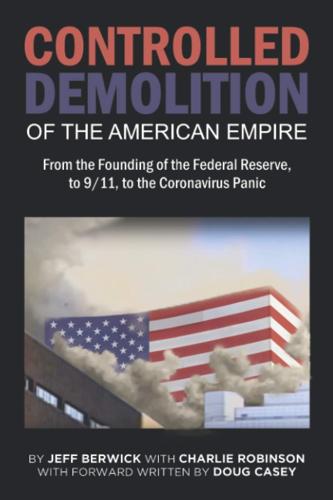
The Controlled Demolition of the American Empire
by
Jeff Berwick
and
Charlie Robinson
Published 14 Apr 2020
FACT: On 4 April 2020 Bill Gates states that mass public gatherings will not come back “at all” until they have mass vaccination. FACT: MIT is working on a “quantum tattoo” that will mark people with an invisible identifier while also delivering a vaccine…at Bill Gates’ direction and funded first and foremost by the Bill and Melinda Gates Foundation. FACT: In the Book of Revelation [13:16-17], written about 2000 years ago, the Bible warned about being branded with an ID code: “And he causeth all, both small and great, rich and poor, free and bond, to receive a mark in their right hand, or in their foreheads: And that no man might buy or sell, save he that had the mark”.
…
His education program is called Common Core, and it has the potential to set the United States back 50 years in the educational arms race against China and Europe. If education is the key to the future, then the future of the United States is bleak. The largest sponsor of the Common Core initiative was the Bill and Melinda Gates Foundation, with over $250 million spent to develop and push the national standards. The Gates Foundations is also involved in purchasing education organizations for the purpose of advancing his Common Core agenda. The following organizations have been funded by, and therefore compromised by, The Gates Foundation: • American Enterprise Institute: $1,068,788

Doppelganger: A Trip Into the Mirror World
by
Naomi Klein
Published 11 Sep 2023
“[It’s] Why I fear this is an attack. The dosages differ”). She likened Anthony Fauci, then director of the U.S. National Institute of Allergy and Infectious Diseases, to Satan and called attempts to counter vaccine misinformation “demonic.” A “transnational group of bad actors—including the WEF, The WHO, the Bill and Melinda Gates Foundation, tech companies and the CCP—used the pandemic to crush humanity and in particular to destroy the West,” she wrote. “How better to cripple the world’s other superpower than by destroying our American front lines and our American next generation, with tainted, murderous vaccines, flowed easily enough into the West via (not even that many) shell companies and cutouts?
…
Asian Americans Asperger, Hans Asperger’s Children (Sheffer) Asperger’s syndrome Assange, Julian AT&T Atilis Gym Atlantic, The Auschwitz Australia Australian Aborigines League Austria; Nazi annexation of; Vienna authoritarianism; see also fascism autism; ABA and; changeling myths and; definitions and diagnoses of; extinguishing behaviors and; Nazi Germany and; as spectrum; vaccines as causing Autism and Developmental Disabilities Monitoring Network Autism Uncensored (Ellenby) avatars; gaming; legacy Bailey, Blake Baker, James, III Baldwin, Alec Baldwin, James Bannon, Steve; Covid policies and; elections and; on gaming avatars; MAGA Plus coalition of; Trump and; War Room podcast of Barnard College Barr, Richard Bay, Byron BBC Beatles Beauty Myth, The (Wolf) Belfast bell hooks Institute Beloved (Morrison) Benjamin, Walter Bennet, Katie Berger, John Between the World and Me (Coates) Biden, Joe Bill and Melinda Gates Foundation biometric identification BioNTech Black Lives Matter Black people; Covid and; enslavement of; police murders of; reproductive health and; see also racism Black Wall Street Blackwater (Scahill) Blair, Tony blood libel Bloom, Claire Blue Bottle Cafe body people Bolsheviks Bolsonaro, Jair Bong Joon-ho book bans Bormann, Martin Börne, Ludwig Boteach, Shmuley Bowman, David boycott, divestment, and sanctions (BDS) Boycott, Rosie “Brand Called You, The” (Peters) brands; children as extension of; copyrights and trademarks; dilution of; dormant; harm to; No Logo and; personal; physical Branson, Richard Bratich, Jack Brazil breakdown videos British colonialism British Columbia British Petroleum Brogan, Kelly Brothers Grimm Brown, Wendy Browne, Simone Brunelle, François B’Tselem Buddy Ball Bund Bush, George W.
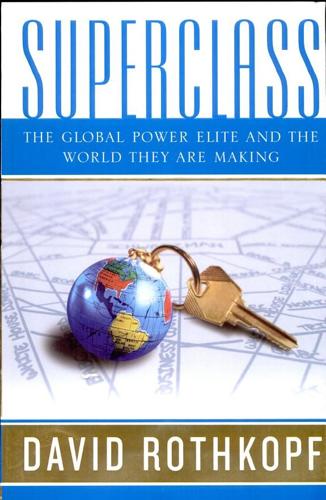
Superclass: The Global Power Elite and the World They Are Making
by
David Rothkopf
Published 18 Mar 2008
Yet virtually everyone with whom I spoke sees the Clinton effort as a breakthrough and a big step away from the talkfests that most global conferences have become. The CGI is tapping into a particular gestalt, the rise of the new philanthropists and of a new era of engaged activism by some members of the superclass and big companies. This trend is also reflected in the establishment of the Bill and Melinda Gates Foundation, combining $30 billion commitments from both Bill Gates and Warren Buffett, two of the world’s richest men. This is not entirely an accident. Not only was Clinton the president who presided over the dot-com boom that made so many members of the new superclass rich (like Gates), and not only has he emerged as perhaps the world’s most prominent advocate for what might be called “enlightened globalization,” but ties between the Clinton Global Initiative and the Gates Foundation include links between key leaders at Gates and the Clinton administration.
…
Aziz, Shaukat Bachchan, Amitabh Bachelet, Michelle BAE (British Aerospace) company Baker, James Banco de Chile Bank for International Settlements (BIS) Barak, Ehud Barkun, Michael Barnard, Alan Barnea, Amir Baroody, William Barrett, Craig Barruel, Abbé Barshefsky, Charlene Bartiromo, Maria Batkin, Alan Beresford, Philip Berezovsky, Boris Berger, Sandy Bergsten, Fred Berlusconi, Silvio Bernanke, Ben Bernhard, prince of the Netherlands Bezos, Jeff Bilderberg Group Bill and Melinda Gates Foundation bin Laden, Osama bin Laden, Shafig Bin Talal, Prince Alwaleed Birdsall, Nancy Black, Cofer Black, Conrad Blackstone Group company Blackwater company Blaine, James Blair, Cherie Blair, Adm. Dennis “Denny,” Blair, Tony Blankfein, Lloyd Blavatnik, Len Bloomberg, Michael Blumenthal, Mark Boao Forum for Asia (BFA) Boeing company Boesky, Ivan Bohemian Grove club Bolloré, Vincent Bolten, Josh Bonafini, Hebe de Bono Borovik, Artyom Botín, Ana Bourguignon, Philippe Bout, Viktor Bouygues, Martin Bowles, Erskine Bradley, Bill Brady, Nicholas Braggins, John Branson, Sir Richard Bremer, L.

Why We Can't Afford the Rich
by
Andrew Sayer
Published 6 Nov 2014
Yet because of their power, non-governmental organisations seeking help have to adjust their goals to appeal to major benefactors – a phenomenon called ‘mission drift’. Philanthropists tend to go for high-visibility, appealing projects rather than hidden but necessary changes. An investigation of the Bill and Melinda Gates Foundations’ project on AIDS by the Los Angeles Times140 found that while it had indeed saved lives it also distorted local health services’ work: • By pouring most contributions into the fight against such high-profile killers as AIDS, Gates grantees have increased the demand for specially trained, higher-paid clinicians, diverting staff from basic care.
…
Instead of collectives, local or national or transnational, dealing in a democratic way with problems that affect them, the rich philanthropist outsider – a beneficiary of unearned income based on control of assets – steps in and by-passes democracy, while the recipients are positioned as passive and dependent on the discretion of the rich. Even where philanthropists consult them, their voice becomes a discretionary gift, when it should be their entitlement as persons of equal worth. According to Edwards, the Bill and Melinda Gates Foundation, the largest funder of global public health after the US and UK governments, ‘has a board of three family members plus Warren Buffet’.141 It is not accountable to the public. It is not that philanthropy never does any good: sometimes it does. But too often the prior question of the legitimacy of the philanthropist’s wealth is ignored.

Consumed: How Markets Corrupt Children, Infantilize Adults, and Swallow Citizens Whole
by
Benjamin R. Barber
Published 1 Jan 2007
As the Fuggers established their social welfare settlement in Augsburg and Rockefeller his foundations and religious charities in Cleveland and New York, Gates made Redmond, Washington, the home not merely of his corporate ambitions but of the philanthropic efforts that, in scale and ambition, became Microsoft’s good angel twin. The Bill and Melinda Gates Foundation, run by his father, almost immediately became one of the world’s largest and most generous foundations—taking on not merely challenges of the digital divide (where philanthropic efforts might be said to help Microsoft’s own business) but working in areas like HIV education, providing vaccinations and medications in developing countries, and nurturing secondary education.
…
Capitalism “needs” to be able to address the vast and untapped marketplace of the billions around the world who still have real needs, and it “needs” to move away from having to manufacture faux needs for those whose wants have been largely satisfied. Moreover, this need of capitalism corresponds perfectly to the need of the world’s poor to have their own real needs satisfied. Yet the market mechanism itself forbids that the two sets of needs intersect. In discussing the donation of the greater part of his fortune to the Bill and Melinda Gates Foundation, billionaire Warren Buffett acknowledged that although he is “a big believer in the market system 95% of the time…it’s done pretty well by me, and the world…there are things where the market system is not going to solve the problem.”37 So although only a few of the core or irreducible needs enumerated by Brazelton and Greenspan or fellow psychologist Abraham Maslow are material in character—aimed at nutrition, housing, health, and security38—those crucial few remain mostly without impact on the market and on world trade, which continues to focus on the real if fragile market defined by the artificially induced faux needs of the prosperous.
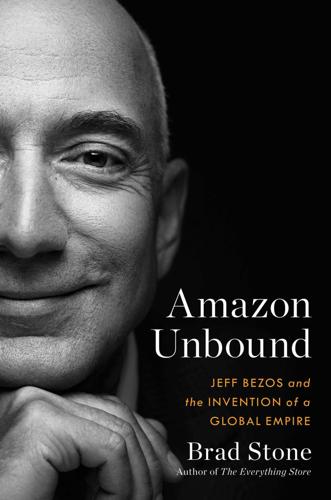
Amazon Unbound: Jeff Bezos and the Invention of a Global Empire
by
Brad Stone
Published 10 May 2021
But a few groups went further and demanded that Bezos contribute to climate organizations that also advocate for fair labor standards. With some of these talks growing more complex and contentious than perhaps he had expected, Bezos asked Patty Stonesifer, a longtime Amazon board member and former CEO of the Bill and Melinda Gates Foundation, to intercede. Environmental groups recalled how she took over the process that fall, helping to add organizations like the Climate and Clean Energy Equity Fund and the Hive Fund for Climate and Gender Justice to the list of grantees receiving Bezos’s largesse. She also gently ended the dialogue with groups like the NAACP Environmental and Climate Justice Program that adamantly viewed labor rights as an integral component of climate justice.
…
(AMI), 32–35, 337–42, 345, 347 Anagram Genius, 34 Android, 24, 34, 38, 40, 41 Anker, 176–77, 375 A9, 70, 255, 258 Annapurna Labs, 103 antitrust issues, 351–52, 364, 377–78 Amazon and, 9, 10, 174, 307, 351, 353, 363–80, 381, 406 Bezos’s Congressional testimony and, 369–71 Google and, 259, 353, 366, 377 Microsoft and, 363, 378 Antitrust Paradox, The (Bork), 365 AOL, 7 Apollo program, 266, 272 Appen, 43 Apple, 9, 34, 42, 52, 71, 95, 111, 145, 158, 173, 229, 350, 359, 366, 377 Apple News+, 129 iPad, 40, 129 iPhone, 38, 41, 96, 129 Siri, 26, 27, 30, 32, 34 voice technology of, 37, 42 Washington Post and, 129–30 Arc Publishing, 129 Arendt, Hannah, 365 artificial intelligence and machine learning, 13, 22, 23, 36–37, 50, 55, 68 deep learning, 35, 36 see also virtual assistants Asimov, Isaac, 23 AT&T, 378 Atlas Air, 234 Atomic Energy Commission, 266 ATSG, 234 Aubrey, Colleen, 253, 402 automakers, 219 Axel Springer, 124, 281 Axis Management, 327 Bain & Company, 262 Baldwin, Alec, 48 Ballmer, Steve, 94–96, 115 Bansal, Binny, 70, 73–74, 88, 91 Bansal, Sachin, 70, 73–74, 87–91 Barnes & Noble, 6 Barnett, David, 367–68 Baron, Marty, 123, 126–27, 130–32, 154 Barron’s, 12 Bart, Peter, 136 Barton, Bill, 36 BBC, 145 BBN Technologies, 35–36 BDO, 311 Beauchamp, Christine, 402 Beaudoin, Cathy, 180–81 Beck, 136 Beckinsale, Kate, 136 Bell, Charlie, 98, 101, 102 Bellevue, Wash., 304, 305 Bennet, Susan, 30 Berkshire Hathaway, 16, 128, 320, 379 Berman, Craig, 41, 106–7, 120 Betas, 142 Bezos, Christina (sister), 162, 244 Bezos, Jackie (mother), 5, 162, 244, 266, 325 Bezos, Jeff Amazon founded by, 5–6, 322 awards won by, 297, 343 biological father of, 12, 329 childhood home visited by, 161–63, 263 Congressional testimony of, 369–71 divorce of, 16–17, 318–21, 334, 345, 346, 349 fame of, 244, 249, 323, 324 homes of, 132–33, 135, 306, 322, 323, 347, 405 image makeover of, 15–16, 116, 244–45, 323 leadership style of, 10–12, 21–22, 167 musical tastes of, 31 National Enquirer story on Sanchez’s relationship with, 17, 319, 328–42, 344 phone hacking incident, 321, 344–45 portrait of, 1–2, 382 salary of, 112 Sanchez’s meeting of, 326 Sanchez’s relationship with, 17, 283, 318–19, 321, 324, 326–28, 344–47 as science fiction fan, 23, 30–31, 52, 266, 274 shareholder letters of, 6, 12, 22, 24, 39–41, 68, 182, 206, 268, 356, 373–77 60 Minutes interview with, 233 technical advisors to, 23–25, 71 transition to executive chairman position, 17, 405 wealth of, 2, 11, 15, 19, 95, 108, 112–13, 159, 163, 244, 245, 249, 263, 266, 282, 285, 288, 299, 306, 323, 346, 349, 355, 357, 384, 401, 404 Bezos, George, 161–62 Bezos, MacKenzie (wife), see Scott, MacKenzie Bezos, Mark (brother), 162, 244, 245, 322 Bezos, Mike (father), 5, 162, 215, 244, 266, 275, 325 Bezos, Preston, 1, 382–83, 384 Bezos Day 1 Fund, 49, 324, 406 Bezos Earth Fund, 402–4, 406 Biden, Joe, 110, 354–55, 402 Big Billion Day, 78 Big Little Lies, 154 big tech companies, 401 government scrutiny of, 366–67 mergers of, 378 suspicion of and backlash against, 290, 305, 349–53, 364, 380 see also antitrust issues Bill and Melinda Gates Foundation, 403 Bing, 193 bin Laden, Osama, 117, 118 Birkenstock, 180 Blackburn, Jeff, 136, 139, 147, 152, 155–57, 251–53, 322, 402 Black Friday, 84, 104, 105, 226 Black Lives Matter, 395 Black Ops Aviation, 283, 310, 326 Blizzard Challenge, 29 Bloomberg, Bloomberg News, 95, 187, 223, 295, 360 Blue Origin, 16, 17, 120, 130, 244, 245, 264–83, 288, 310, 326, 327, 346, 387, 406 Bezos’s funding of, 278 Blue Moon project of, 279 budget of, 276–77 employees of, 265, 274–76, 278, 280–81 fuel mixes and, 269, 270 Kármán line and, 273, 282 Kent headquarters of, 264, 274–75, 277, 281 motto and coat of arms of, 268 New Glenn rocket of, 264, 272, 274, 277–79 New Shepard rocket of, 264, 267, 269–71, 273, 274, 276, 278, 280, 283, 288, 310, 327 as philanthropic enterprise, 269, 281–82 secrecy at, 268 test rocket failure of, 270 Texas ranch facilities of, 275, 281 Welcome Letter for new employees at, 267–70, 277, 278, 281 Blumenthal, Richard, 214 Boeing, 270–71, 272, 280, 290, 293, 294, 309 Bon Jovi, Jon, 325 Borat Subsequent Moviefilm, 401 Borders, 169, 188 Borders, Louis, 188 Bork, Robert, 365 Bosch, 143 Bourdain, Anthony, 131 Bowden, Courtney, 397 Bowen, Sam, 23 Boyle, Sean, 249 Boys, The, 158, 401 Bradlee, Ben, 133 Branson, Richard, 6 Bray, Tim, 398–400 Brazil, 110, 231 Brennan, Megan, 358 Breuer, Lanny, 368 Brin, Sergey, 359 Brown, Dan, 34 Brownstein, Carrie, 154 Buffett, Warren, 128, 186, 320, 345 burgers, 206–9 Burgess, Tim, 290, 291 Burnett, Mark, 145 Burnett, T Bone, 136 Burnham, John, 149 Business Council, 16 Business Insider, 240 Business Today, 78 Businessweek, 99 Buy Box Experts, 377 BuzzFeed, 154, 237, 240 Bystander Revolution, 323–24, 346 Callamard, Agnes, 345 Campfire, 153–55, 324–25 Canada, 80 Cape Canaveral, 272, 280 carbon emissions, 2–3, 381 Carlson, Teresa, 359, 362 Carnegie Mellon University, 29 Carney, Jay, 110, 118–20, 208, 263, 297, 311, 314, 315, 339, 351, 356, 357, 369, 390, 391 Carr, Bill, 138–40 Carrefour, 190 Catz, Safra, 360 CBS This Morning, 126, 144 CCDev, 270–71 Cengiz, Hatice, 347 Center for Investigative Reporting, 224 Centers for Disease Control (CDC), 394 Chapman, Gary, 64 Charlie Rose, 94 Chatham Asset Management, 331 Cheng, Albert, 157 Chicago, Ill., 303 China, 13, 70–73, 75–76, 78, 82, 86, 95, 104, 170, 189, 379 Communist Party in, 73 Marketplace sellers based in, 171–81, 183, 248, 254, 260, 287 Christensen, Clayton, 10 CIA, 359–60 Cicilline, David N., 366–69, 371, 377 Cincinnati/Northern Kentucky International Airport, 235, 293 Clarkson, Ian, 188 Clarkson, Jeremy, 145 Clancy, Tom, 149 Clark, Dave, 193, 194, 213–18, 221–35, 239–43, 355, 387–89, 392, 397, 399, 402, 405 Clark, Leigh Anne, 217 Clarke, Arthur C., 23 Climate and Clean Energy Equity Fund, 403 climate change, 2–4, 17, 381, 402–4 Climate Pledge, 2, 17, 381–82, 388 Clinton, Hillary, 1 cloud computing, 4, 13, 14, 22, 24, 25, 55, 96–98, 102 Amazon’s original products for, 97 Defense Department’s JEDI contract for, 351, 359–63, 381 see also Amazon Web Services Cloudtail, 77, 88 CNET, 67 CNN, 353 Coca-Cola, 260 Coen, Joel, 135 Cohen, Michael, 331, 335 Collins, Doug, 367 Columbia Pictures, 141 Comcast, 139–40 Comic-Con, 145 Communications Decency Act, 379 computer speech recognition, 28, 36, 55 in Alexa, 28, 33, 36, 37 computer-synthesized speech, 28–29 computer vision, 13, 54–55, 57–58, 62–64, 68 Conscious Capitalism (Mackey), 185 Consumer Financial Protection Bureau, 353 ContextLogic, 171 Cook, Tim, 132, 345, 359, 369 “cookie licking,” 233 Corden, James, 2 Cornell, Brian, 231 Costco, 185, 192, 198 Coulter, Kristi, 60, 65 Covid-19 pandemic, 1, 4, 18, 348, 367, 369, 385–402 Amazon Pharmacy and, 404 Bezos’s public prominence during, 387–88 Bezos’s wealth and, 18, 401 customer demand during quarantine, 380, 387, 388, 391 essential item sales during, 389, 391, 392 face shields and masks during, 388–89 grocery delivery and, 68, 243, 391 labor unions and, 316, 392, 394 S-team and, 386–87, 390 testing and contact tracing in, 390, 396–97, 400–401 vaccines in, 402 Whole Foods and, 390, 391, 397 Covington & Burling, 368 Cox, Braden, 312–14, 316 Crisis in Six Scenes, 13, 149 Crow, Bill, 298 Cruise, Tom, 168 Cucinelli, Brunello, 346 Cunningham, Michael, 154 Cuomo, Andrew, 306, 310, 314–15 Curry, Stacey Hayes, 237 Daily Beast, 336, 342 Dallas, Tex., 292, 295, 296, 299–302, 308 Damon, Matt, 135, 325 databases, 97–99 see also cloud computing Daudon, Maud, 290, 304 Da Vinci Code, The (Brown), 34 Davis, Alicia Boler, 402 Days Inn, 290 Deadline, 136 Dead of Winter Productions, 327 de Becker, Gavin, 64, 323, 334–39, 341, 342, 344, 346–47 de Blasio, Bill, 306, 310, 313–15 De Bonet, Jeremy, 63 Defense Department, U.S., 359, 361 JEDI contract with, 351, 359–63, 381 Deliveroo, 260 Delrahim, Makan, 366 Delta Air Lines, 301 democracy, 124, 133, 365 De Niro, Robert, 152 DePalo, Joe, 102 D.
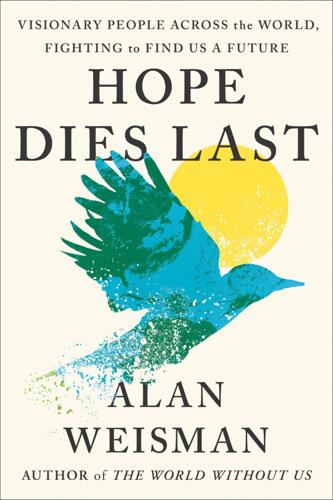
Hope Dies Last: Visionary People Across the World, Fighting to Find Us a Future
by
Alan Weisman
Published 21 Apr 2025
Tamsir’s doctoral dissertation was on engineering microbes. Temme’s was on making transgenic cereal crops that could self-fertilize. At first they thought that tinkering with DNA was where to begin. Together they mapped genomes of nitrogen-fixing microbes. Their first grant, from the Bill and Melinda Gates Foundation, was to insert those gene clusters directly into grain plants, enabling them to produce their own ammonia, like soybeans. They quickly discovered how daunting genetic engineering is. “We’re still barely able to insert a single gene bearing desired traits into biotech plants,” Temme later told investors, “let alone 30 complex gene clusters that must be exquisitely balanced in order for nitrogen fixation to work.”
…
A B C D E F G H I J K L M N O P Q R S T U V W X Y Z A Aboriginal Australians, 275 Abu Dhabi, 327, 328 Abu Haider, 14–16, 21–22, 23, 27 Aburrá Valley, 307 Adani, Gautam, 195 Advanced Research Projects Agency, 51, 286 Aeneid (Virgil), 275 aeroponics, 325 agriculture aeroponics and hydroponics, 325 and Bangladesh Delta Plan 2100, 205, 206 and biological production of nitrogen, 226–41 climate and food security risks, 45–46 and dairy farming, 150, 156, 221–25, 286, 288, 294, 402 and dredging projects, 186–87 Dutch agricultural capacity, 150 energy requirements of modern farming, 57–58 impact of atmospheric carbon dioxide, 130 and Iraqi wetlands, 22–23 monocultured crops, 49, 239, 281, 296, 387 and nitrogen-fixing bacteria, 223, 229–33, 236–41 and nitrogen runoff, 112 origins and spread of, 13, 36–37 and photovoltaic power, 261–62 seaweed farming, 276–77, 279–80, 282–84, 285–90, 290–93, 294–99 and synthetic fertilizer, 39–41, 46–48 See also corn farming AgriSeas, 294–95, 298 Aguirre-Torres, Luis, 308–19 Air Protein Inc., 55 Akkadian culture, 8, 14, 31 Alam, Mashiat Fariha, 217 Al-Asadi, Jassim, 14–15, 18–20, 21–25, 27–28, 31, 390–92, 396–97 Al-Asadi, Souad, 396 Alaskan Willow Project, 379 Alberta tar sands, 167, 169, 172 Alcator C-Mod reactor, 91–92 Algonquian-speaking peoples, 161–62, 162n Ali ibn Abi Talib, 8, 393–94 ALLIES (Alliance Linking Leaders in Education and the Services), 341 Alwash, Azzam, 1–3, 6–8, 10, 14, 16–22, 24–28, 31, 390–92 Amazon rainforest, 375–76 Amazon River, 112 American Indian Movement, 177 America the Beautiful, 388 Andros, Bahamas, 108 Animal Legal Defense Fund, 78 Anishinaabeg people, 161, 164–65, 174, 177, 181–83 Anjain, Jelton, 331–32, 335–36, 341–45, 348–49, 353, 356–57 Anjain, Jeton, 335–36 Anjain, John, 334–36, 356 Anjain, Ranton, 356 Ann Bancroft Award, 177 Ansari, Mohammad Hussein al-, 394–95, 400 Aponiente, 247, 249–51, 264–65, 267–71 Appendini, Christian Mario, 118, 119–20 Applied Physics Lab (APL), 55–58 aquifers, 178, 236, 255 Arabian-Persian Gulf, 1, 6, 10, 13, 27 Araque, Carlos, 373 ARC fusion reactor, 95–97, 103 Ariza, Ricardo, 265–66, 271 Arkema, Katie, 105–7, 110, 116, 120, 124, 126, 297 Aros River, 71–72 artificial intelligence, 287, 359, 362–65, 369 art installations, 365–71 Asian Development Bank, 205, 340 Assyrian culture, 12, 14 asteroid impacts, 33, 121, 386 Atlantic Meridional Overturning Circulation, 144–45 Atlantic Sea Farms, 289, 291 Atoms for Peace, 97 Atwood, Keith, 293–94 Audubon Society, 69, 74 aurochs, 37 Australopithecus, 8, 104 B Babylonian culture, 14, 23–24 Babylonian Talmud, 12, 392 Bahía de Cádiz, 243, 247–51, 263–67 Bahía de Kino, 255, 259 Baird, Donnel, 314 Baja California, 242–45, 242n, 243 balsas (Seri boats), 245–46, 246n, 255–57 Ban, Shigeru, 367, 370 Bangladesh Delta Plan 2100, 147, 149–50, 188, 191, 197, 201–8, 216 Bangladesh India Friendship Power Company, 195 Bangladesh Poribesh Andolon (BAPA), 185, 185n Bangladesh Rice Research Institute, 185 Banishanta, Bangladesh, 184–86, 190, 196, 201 Ban Ki-moon, 321 Bank of America, 381 Bardaglio, Peter, 316–18 Barnacle Foods, 285 Barnett, Chapo, 257, 260 Barnett, Erika, 257–59, 261, 262–63 Barnett, Miguel, 257 Barra del Motagua, 125 Barrio Bread, 259 Bartlett, Ryan, 110–12, 114, 126–27 Baskerville Willy, 44, 61 Basra, Iraq, 1, 4, 4–7, 17, 339, 372, 396 Basra reed warbler, 20, 397 Bayer-Monsanto, 229 Bay of Bengal, 184, 192, 194–96, 198 Beaudreau, Tommy, 379 Beaulieu, Nancy, 170 Behmann, Sebastian, 368 Bellecourt, Vernon, 177 Bellrock, Nick, 180 Belt and Road Initiative, 203, 215 Bengal tigers, 190, 199, 200–201 Benioff, Marc, 231 Bermúdez, Juan Martín, 246 Bezos, Jeff, 96, 231 Bible, 8, 10–12, 29–32, 392–93 Biden, Joe, 25, 169–70, 172, 377, 380, 384 Bikini Atoll, 332, 333, 336n Bill and Melinda Gates Foundation, 228 Billion Oyster Project, 191, 323, 329 BioCube, 293 biodiversity, 24, 31–32, 63, 191–92 biofuels, 48, 286 bioreactors, 55n, 56–57 Biorock, 328 Biosphere 2, 261 biostimulants, 295 Biotechnology and Biological Sciences Research Council (UK), 46 bitumen, 24, 167 Bjarke Ingels Group (BIG), 133, 323–29 bKash, 219 Black River Valley, 221 Bloch, Sarah, 229 BlocPower, 313–14, 316 Bloomberg, Michael, 133–34, 231 Bloomberg Green Summit, 315 Blue Carbon, 292 bore-hole generators, 373–74 Borlaug, Norman, 40, 183 Bosch, Carl, 39 Bradley, Clare, 294, 296 Bradley, Jill, 293–94 Bradley, Tane, 293–96 Brahmaputra River, 149, 193, 202–3, 205, 207 Branson, Richard, 231 Breakthrough Energy Ventures, 220, 231 Briganti, Chelsea (“Sea”) Fawn, 291–93 Brilliant, Larry, 339 brown spiny kelp, 294 Buckminster Fuller Institute, 284 buffalo (bison), 174, 182, 391 Build Back Better Plan, 284 Building with Nature, 191 Bureau of Land Management, 76 Busan, South Korea, 328–29 C Cabrera, Gustavo, 124–26, 127 cactus ferruginous pygmy owl, 78, 82 Cádiz Bay, 247–48 California Institute of Technology (Caltech), 358 Campbell, Taonui, 294 Canal de Infiernillo, 263 cancers, 6, 37, 81, 238–39, 276n, 279, 335–36, 356, 380 cannabis cultivation, 181–82 carageenen, 276, 276n carbon and carbon dioxide atmospheric CO2, 56, 57, 118, 129–30 and Biosphere 2 experiment, 261 carbon capture technology, 276 carbon credits, 287, 291, 359 carbon neutrality goals, 359 and cement production, 202 and concentration measures, 113 decarbonization efforts, 313, 315, 318, 361, 376 direct carbon capture, 361 emissions rates, 34–35, 192 and Framework Convention on Climate Change, 154–55 and Haber-Bosch process, 228 hydrocarbons, 290–91 impact on climate, 34 lawsuits, 156–57 and microbial farming, 53–57 oceanic CO2 absorption, 361, 364 and pipeline dangers, 175 primary emitters of, 59 sequestration of, 118–19, 250, 258, 283, 286, 290–92, 299 Carboniferous layer, 34 cattle, 37–38, 73.

Global Catastrophic Risks
by
Nick Bostrom
and
Milan M. Cirkovic
Published 2 Jul 2008
(A lot of 'ifs' but maybe we can start learning from experience!) Barring extreme mutations of the infective agent or changed methods of spread, all of them can be controlled (and some eradicated) with presently known methods. The problem, of course, is an economic one, but such organizations as the Global Health Foundation and the Bill and Melinda Gates Foundation offer hope for the future by their organized and carefully considered programs, which have identified and targeted specific diseases in specific developing regions of the world. In dealing with the novel and the unforeseen - the unconventional prions of Bovine Spongioform Encephalitis that threatened British beef (WHO, 2002) and the exotic imports such as the lethal Marburg virus that did not come from Marburg (Bausch et al., 2006) - we must be guided by the lessons of the past, so it is essential that we reach a consensus on what these lessons are.
…
E ncouraging industry to address infectious diseases includes providing incentives such as advance market commitments. The United States uses the 'orphan drug legislation' to provide tax credits to companies to invest in rare diseases that are otherwise not deemed profitable. Efforts to improve funding for addressing infectious and neglected diseases include those by The Bill and Melinda Gates Foundation, which provides grants with the precondition that any eventual product would be patent-free and publicly available. In the same spirit, the pharmaceutical giant Sanofi Aventis and a non-profit drug development organization funded by ' Doctors Without Borders' have combined to create a cheap, patent-free Malaria pill (New York Times, March 5, 2007). 20.8.6 Biologica l secu rity req u i res fosteri n g collaborations Due to the low availability of drugs and diagnostic tools, high population densities, and pre-existing health issues, developing countries may suffer the greatest consequences of a biological attack.
…
J 45 behavioural evolution ongoing 61-3 as response to climate change 66-7 behavioural genetics, role in totalitarianism 5 1 1 behavioural responses t o climate change 279 Bensimon, C.M. and Upshur, R.E.G. 472 Benton, M . ) . and Twitchett, R.J. 273 biases 10, 91-2, 1 1 3-15 affect heuristic 104-5 anchoring, adjustment and contamination effects 101-4 anthropomorphism 308-11, 312, 326 in availability heuristic 92-3 Black Swans 94-5 bystander apathy 109-1 1 cautions 1 1 1-12 confirmation bias 98-101 conjunction fallacy 95-8 hindsight bias 93-4 overconfidence 107-9 scope neglect 105-7 technical experts 19 see also observation selection effects big bang, laws of physics 355 Bill and Melinda Gates Foundation 473 Bindeman, I . N . 216 Bin Laden, 0. 417-18 biodiversity ix biodiversity cycles 256 biodiversity preservation 20 biological weapons 453-4 difference from other weapons of mass destruction 454-5 use of nanoscale technology 484 Biological Weapons: Limiting the Threat, Lederberg, J. 475 biosecurity threats ix, 22-4 biosphere, destruction of 34, 35 biotechnology 450-2 dual-use challenges 455-8 Luddite apocalypticism 81-2 micro- and molecular biology 458-60 rapidity of progress 454-5 risk management 460, 474-5 DNA synthesis technology 463-4, 465 international regulations 464 multi-stakeholder partnerships 462-3 533 novel pathogens 464-5 oversight of research 460-2 'soft' oversight of research 462 use of nanoscale technology 484 bioterrorism 82, 407, 451-2, 456-7 catastrophic attacks 466-8 infectious disease surveillance 469-70 prevention, inverse cost-benefit analysis 188-9 BioWatch 469 Bird, K. and Sherwin, M .
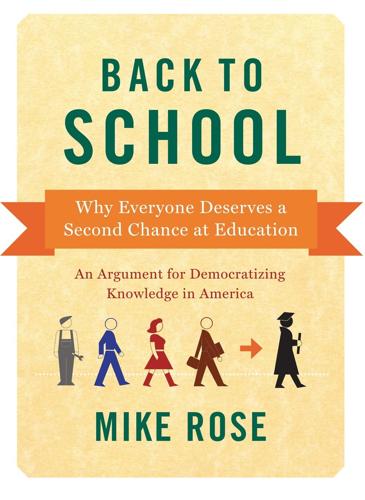
Back to School: Why Everyone Deserves a Second Chance at Education
by
Mike Rose
Published 17 Sep 2012
Some of the research involved in Back to School has been supported over the years by The Spencer Foundation. That foundation has made much of my work possible. Over the last two years, I have been fortunate to be part of the UC ACCORD Pathways to Postsecondary Success Project, funded by the Bill and Melinda Gates Foundation. Hilary Pennington and Ann Person were directly involved in the project, much to the project’s benefit. If we’re lucky, every once in a while we fall in with a great group of co-workers, and that was the case here. Many thanks to the principal investigators on the project, Amanda Datnow and Danny Solorzano, and to my wonderful teammates: Lluliana Alonso, Christine Cerven, Maritza del Razo, Nicki Johnson-Ahorlu, Makeba Jones, Maria Malagon, Bud Mehan, Jen Nations, Kelly Nielson, Lindsay Perez Huber, Yen Ling Shek, Veronica Velez, and Susan Yonozawa.

Capital in the Twenty-First Century
by
Thomas Piketty
Published 10 Mar 2014
It is rather arbitrary to count the wealth of foundations as part of private wealth rather than public wealth or to place it in a category of its own, since it is in fact a novel form of ownership, intermediate between purely private and strictly public ownership. In practice, when we think of the property owned by churches over the centuries, or the property owned today by organizations such as Doctors without Borders or the Bill and Melinda Gates Foundation, it is clear that we are dealing with a wide variety of moral persons pursuing a range of specific objectives. Note, however, that the stakes are relatively limited, since the amount of wealth owned by moral persons is generally rather small compared with what physical persons retain for themselves.
…
Note, however, that the historic rebound of asset prices appears to add no more than a point of additional annual return, which is fairly small compared with the level of return I have been discussing. See the online technical appendix. 32. For example, because Bill Gates maintains effective control over the assets of the Bill and Melinda Gates Foundation, Forbes chooses to count those assets as part of Gates’s personal fortune. Maintaining control seems incompatible with the idea of a disinterested gift. 33. According to Bernard Arnault, the principal stockholder in LVMH, the world leader in luxury goods, the purpose of the Belgian foundation that holds his assets is neither charitable nor fiscal.
…
See Central banks Banque de France, 649n25 Barro, Robert, 135 Barry, Redmond, 620n40 Baudelot, Christian, 605n20 Bebchuk, Lucian, 611n35 Becker, Gary, 385, 616n7, 621n55 Beckert, Jens, 614n22, 616n6, 637n25, 638n33 Béguin, K., 598n7 Belle Époque, 106, 127, 132; capital/income ratio and, 148, 152, 154, 196; income inequality in, 263–264, 266–267, 272, 282, 322; inequality of capital ownership in, 339, 342–345, 369–370; age and fortune in, 393–396 Bernstein, Eduard, 219 Bettencourt, Liliane, 440–441, 525, 642n14 Bill and Melinda Gates Foundation, 626n32 Billionaires, 433–434, 444–446, 458–459, 463, 623n7, 624n13 Birth rates, 78–83, 587n4, 588n7 Bjorklund, Anders, 631n26 Blank, Rebecca, 608n12, 640n53 Boisguillebert, Pierre le Pesant sieur de, 56, 590n1 Book vs. market value, 189–191 Borgerhoff Mulder, Monique, 597n33 Bourdieu, Jérôme, 612nn4,9 Bourdieu, Pierre, 486 Bourguignon, François, 585n20 Boutmy, Emile, 487 Bouvier, Jean, 225, 582n34 Bowley, Arthur, 219, 599nn19, 20 Bozio, Antoine, 633n46 Brady, H., 640n52 Britain: data from, 28, 56–57; national income and, 68–69; growth in, 98–99, 174–175, 510–511; monetary system of, 105, 589–590nn28,29; per capita income in, 106, 122, 590–591n8,9; inflation in, 107, 133, 142, 149; capital in, 116–127, 148–149; foreign capital/assets and, 117–119, 148, 191–192, 590n7; public debt of, 124–126, 127, 129–131, 133, 591n10, 591n12; public assets in, 136, 138; Canada and, 157–158; savings in, 177–178; capital-labor split in, 200–201, 204, 205, 206–208, 216, 224–225, 229; taxation and, 338, 498–499, 501, 505, 507–512, 636n16, 638nn33,34,35; wealth distribution in, 343–344, 346; inheritances in, 426–427; taxes as share of national income in, 475–476, 629n6; social state in, 477–478, 629n12, 631n25 Brown, Frederick, 219–220 Bubbles, 172, 193, 596n27, 597n30; beyond, 173–183 Buffet, Warren, 624n14 Bush, George W., 309 Cagé, Julia, 633n48 Caillaux, Joseph, 637n24 Campion, H., 591n19 Canada, 66; in US-Canada bloc, 62–63; capital in, 140, 157–158; foreign capital/assets in, 157–158; growth rate of, 174; savings in, 177–178 “Capabilities” approach, 480 Capital: human and nonhuman, 21–22, 42, 46–47; types of, 42, 46; depreciation and, 43–44; defined, 45–47, 123; private vs. public, 46–47; and wealth, 47–50; economic functions of, 48; domestic vs. foreign, 49, 118–119; immaterial, 49; residential vs. productive, 51–52; rents and, 423–424; reproduction of itself, 440.
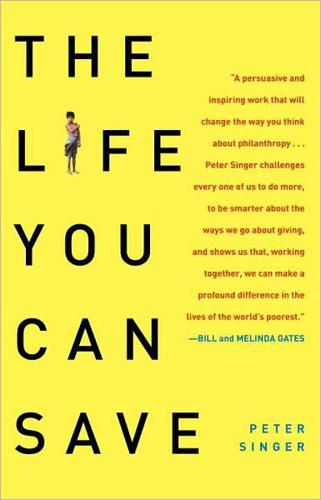
Life You Can Save: Acting Now to End World Poverty
by
Peter Singer
Published 3 Mar 2009
If you have complied with the public moral code, we should praise you for doing that, rather than blame you for not doing more.3 Judging the Rich and Famous This brings us back to the world’s wealthiest people, many of whom give away tremendous amounts of money to charity. How should we think about Bill Gates, who gave $29 billion to fighting poverty, but remains one of the world’s richest people? Gates knows what the ultimate standard is. It’s prominent on the Bill and Melinda Gates Foundation website: “All lives— no matter where they are being led—have equal value.” Gates says that he got started in philanthropy when he read that half a million children die every year from rotavirus. He had never heard of rotavirus. (It is the most common cause of severe diarrhea in children.)
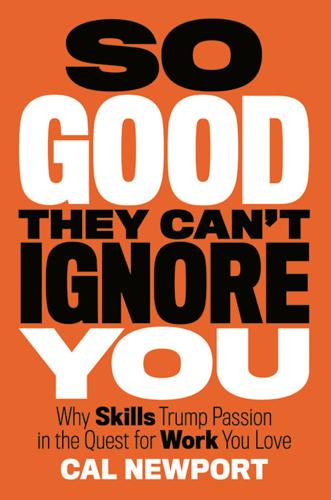
So Good They Can't Ignore You: Why Skills Trump Passion in the Quest for Work You Love
by
Cal Newport
Published 17 Sep 2012
She has since added malaria and the bubonic plague to the list of “ancient scourges” that she’s tackling with her computational strategy. Pardis’s career is driven by a clear mission: to use new technology to fight old diseases. This research is clearly important—an observation emphasized by the fact that she’s received seven-figure grants for her work from both the Bill and Melinda Gates Foundation and the NIH. Later in this book, we’ll dive into the details of how she found this focus, but what’s important to note now is that her mission provides her a sense of purpose and energy, traits that have helped her avoid becoming a cynical academic and instead embrace her work with enthusiasm.
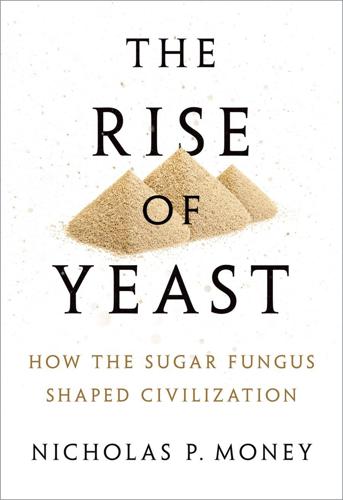
The Rise of Yeast: How the Sugar Fungus Shaped Civilisation
by
Nicholas P. Money
Published 22 Feb 2018
Developing yeast as an artemisinin factory promises to reduce the cost of the drug by providing competition with suppliers of the plant extract and ensuring a continuous supply of this vital medicine in the developing world. The technology for artemisinin synthesis is complicated, and its development was funded by a major grant from the Bill and Melinda Gates Foundation.24 Work began in 2004 and the delivery of the winning yeast strain was announced at the University of California, Berkeley in 2012. This magical fungus tenders a hybrid biochem ical pathway that combines the use of naturally occurring yeast enzymes with enzymes encoded by genes appropriated from the 122 t he l i t t l e y e ast on t he pr a ir ie: biot echnology wormwood plant.

Survival of the Richest: Escape Fantasies of the Tech Billionaires
by
Douglas Rushkoff
Published 7 Sep 2022
Instead of forcing corporations to address global problems or taxing their winnings to do it on a national level, we are supposed to encourage their voluntary “impact investing” and support their emerging spirit of “corporate global citizenship.” Thus empowered, the planet’s wealthiest leaders can make good decisions from the top down. This subjects our future welfare to the whims of wealthy individuals who believe they know best. It doesn’t lead to good outcomes. The mosquito nets sent to Zambia and Nigeria by the Bill and Melinda Gates Foundation to protect people from malaria ended up poisoning local fisheries. Instead of using them to shield their beds from insects, villagers brought them to ponds and streams to use as fish nets. The tight weave caught tiny juvenile fish, devastating the reproductive cycle. The insecticide on the nets killed everything else, rendering the water unpotable as well.

Uncontrolled Spread: Why COVID-19 Crushed Us and How We Can Defeat the Next Pandemic
by
Scott Gottlieb
Published 20 Sep 2021
CEPI is run by Richard Hatchett, one of the original architects of the mitigation tactics included in the 2005 pandemic plan set in motion by President Bush. CEPI’s work is focused on the WHO’s “blueprint list of priority diseases,”15 which include coronaviruses. Launched in 2017 with $460 million from the Bill and Melinda Gates Foundation, The Wellcome Trust, and a group of nations, including Norway, Japan, and Germany, CEPI is the closest thing we have to a collective international effort to develop countermeasures to global threats.16 CEPI is one of the few bodies that remained committed to these risks, but many lost interest in CEPI’s coronavirus-focused efforts after the perceived threats from SARS-1 and MERS seemed to recede.17 The traditional planning for pandemics had always envisioned the US developing countermeasures against specific pathogens.
…
See Bat coronaviruses American Clinical Laboratory Association, 135–36 American Enterprise Institute (AEI), 148, 243, 297 COVID-19 Test Capacity Tracker (@COVID2019tests), 148 “National Coronavirus Response: A Road Map to Reopening,” 250–52 American Health Care Association, 145 American Red Cross, 299 American Society for Microbiology, 349 Amgen, 268–71, 454n Anthrax, 159, 172, 180–81, 270, 284, 310, 329–30 Antibiotics, 26, 27, 295 Antibodies, 141, 177, 185, 223–24, 321–22, 331–32, 376 Antibody drugs, 285–86, 296–97, 305–19, 389 development of, 310–11 Eli Lilly, 308–9, 311–14, 388, 453n manufacture of, 311–15 Regeneron, 283, 305–7, 309–12, 388, 453–54n Antibody tests, 216–17, 273, 423n Antigenic drift, 376, 378, 465n “Antigenic load,” 321–22 “Antigenic modification,” 184–85 Antigen tests, 138–40, 141–46, 218 Antimasking, 252–53 Antiviral drugs, 27, 75, 176, 178, 193, 295–96 Apollo’s Arrow (Christakis), 344 Arizona, stay-at-home orders, 215–16 Association of Public Health Laboratories, 110, 116, 126–27, 157, 158 American Public Health Lab Association, 115–16 AstraZeneca vaccine, 317, 392 Asymmetric risk, 54, 379 Asymptomatic testing, 142–44, 146 Asymptomatic transmission, 7, 49, 58, 80, 83–85, 89, 97, 131, 211, 220–21, 412n syndromic surveillance, 80–81, 83–85 Atlantic, The, 131, 232 Australia, 15, 92, 214 H1N1 vaccine, 392, 467n Aviano Air Force Base, 154 Azar, Alex community spread, 78, 89–90 Crimson Contagion, 201 hydroxychloroquine, 291 initial reporting, 17–18, 37, 38, 50–51 mask shortage, 158–59 pandemic preparedness, 200 reporting systems, 240–41 sentinel surveillance, 73–74 testing, 98, 124, 125–26, 134–35, 149, 153, 278 Baidu, 44 Baker, Charlie, 165–66 Bar closures, 231 BARDA (Biomedical Advanced Research and Development Authority), 134, 142, 154, 278, 310–11, 378 Baric, Ralph S., 363 Barrett, Amy Coney, 308, 381, 382, 384–85 Barry, John M., 179–80 Bars, 200, 243 Bat coronaviruses, 4–5, 36, 107, 282, 344, 357–58 RaTG13, 4–5, 462n B cells, 321–23, 325, 455n Becker, Scott, 110, 126–27 Bedford, Trevor, 60–62, 67–68, 245, 384–86, 388, 466–67n BEI Resources, 419–20n Beta coronaviruses, 36, 361 BGI Genomics, 29 Biden, Joe (Biden administration), 233, 383 lab leak theory, 362–63 testing, 429n vaccines, 317, 347, 392–93 Bill and Melinda Gates Foundation, 62, 283 BinaxNOW, 141, 142, 382 BioCentury, 310 Biofire Respiratory Pathogen Panel, 74–75, 412n Biogen, 221 Biological manufacturing capacity, 313–19 BioNTech, 327–30, 332, 333, 336 BioReference Laboratories, 271 Bioterrorism, 166, 170, 172, 180–81, 270–71, 284, 329–30, 348 BioWatch, 270 Birx, Deborah reporting systems, 239, 240–41 sequencing data, 245 testing, 137–38, 152 travel bans, 353 Black Americans, 209–10, 236, 390–91 Blood pressure medicines, 76 Bloomberg News, 155, 384 Bolsonaro, Jair, 204 Bootsma, Martin, 189 Borio, Luciana, 24 Bossert, Tom, 160 Boston, 210, 211, 221 Bourla, Albert, 331, 334–35, 336–37, 347 Bradley, Daniel W., 276 Bradway, Bob, 268–69 Brazil, 100, 204, 338, 375, 392–93 Bremberg, Andrew, 37, 43–44, 266 Brennan, Margaret, 205–6, 312–13, 358 Bristol Meyers Squibb, 137 Broad Institute, 165–66, 372 Bronchiolitis, 343 BSL-3 (biosafety level 3) labs, 357, 359, 360 BSL-4 (biosafety level 4) labs, 357, 359, 360, 364 Burr, Richard, 99 Bush, George W.

The World's Banker: A Story of Failed States, Financial Crises, and the Wealth and Poverty of Nations
by
Sebastian Mallaby
Published 24 Apr 2006
. $2.50 is the price of a bed net plus a basic insecticide for treating it. Lawrence Barat, a malaria specialist from the Centers for Disease Control and Prevention, seconded to the World Bank, estimates that 1 million Africans die from malaria a year, and that 90 percent of those deaths involve children under five. Others, for example the Bill and Melinda Gates Foundation, put the death toll higher. Barat interview and e-mail, February 9, 2004. 2. Faith and Credit: The World Bank’s Secular Empire, by Susan George and Fabrizio Sabelli (Boulder, Colo.: Westview Press, 1994), p. 1. CHAPTER ONE: A TALE OF TWO AMBITIONS 1. See, for example, “Speech to Inter-American Press Association,” Washington, D.C., October 13, 2001. 2.
…
Institutionally, we did not have that capacity to deal with the funds that came to the country.” See “Interview with Negatu Mereke,” UN Integrated Regional Information Network, Nairobi, November 27, 2002. 43. The verdict that National AIDS Councils were generally not an improvement on what came before is shared by Helene Gayle, the AIDS program director at the Bill and Melinda Gates Foundation, and by J. Stephen Morrison of the Center for Strategic and International Studies, who runs a program on AIDS in Africa. Andrew Cassels of the World Health Organization agrees: “The trouble with the idea of creating new bureaucratic bodies is that they don’t work. They don’t have clout unless they have a budget.”
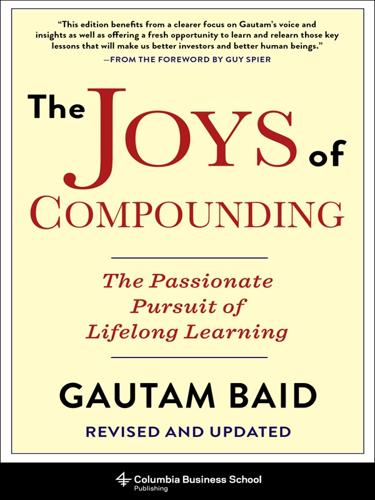
The Joys of Compounding: The Passionate Pursuit of Lifelong Learning, Revised and Updated
by
Gautam Baid
Published 1 Jun 2020
As the adage goes, “You can’t take it with you.” Givers derive great happiness from converting their financial resources into actions and values they truly care about (figure 7.1). FIGURE 7.1 Giving and happiness. Source: Behavior Gap. As a philanthropist, Warren Buffett is best known for giving billions of dollars to the Bill and Melinda Gates Foundation and for supporting the philanthropic work of his three children. He also generously gives to other groups, like the Glide Foundation, an antipoverty charity in San Francisco. In philanthropy as in business, supporting the right people is more important than all other factors, according to Buffett: “When I buy businesses, it’s the same as investing in philanthropy.
…
T., 85 Barron’s, 88, 232–233 Bartlett, Al, 363 base rates, 294 Batnick, Michael, 271 Bayesian methods, 300; biases and, 297; Gardner on, 292–293; Tetlock on, 292–293; translation of language in, 293 Baye’s rule, 292 bear markets, 61; certainty in, 212–213 Becoming Warren Buffett (documentary), 56 beginner’s mind, 290 behavior gap, 331 Benoit, Andy, 68 Berg, Arnold Van Den, 47–48 Berkshire Hathaway, 1, 58, 82, 92, 101, 158, 229; incentive compensation principles at, 147–148; negative press of, 87–88; strengths of, 48 Berlin, Isaiah, 27 Bernstein, Peter, 256; on risk, 255 Berra, Yogi, 147 Beshore, Brent, 174 Bevelin, Peter, 108, 285 Bezos, Jeff, 20, 40, 99 Bhagavad Gita, 63; on investing, 331–332 Bharat Financial Inclusion, 342 biases: from anchoring, 136, 335–338; from association, 133; availability, 14; Bayesian methods and, 297; consistency, 134–135; from deprival syndrome, 135; Fisher on, 337; against high P/E, 213; irrational, 337; from overinfluence, 136; recency, 14, 263; reciprocation tendency, 136; self-serving, 134; status quo, 135; underestimating, 134 big-ticket merger and acquisition, 227 Bill and Melinda Gates Foundation, 64 Bionomics (Rothschild), 286 Bismarck, Otto Von, 349 Black Swan, The (Taleb), 261 black swans, 261–262 bladder theory, 192 Bloomberg, 211 blue-chip stocks, 230–231 Blumkin, Rose, 92 Bogle, John, 229 Bombay Stock Exchange (BSE), 326 bonds: high-risk, 240; junior, 240; low-risk, 240; senior, 240; stocks and, 121–122; total real returns on, 274; Treasury, 255; valuation of, 319–320 boom-and-bust cycles, 238; history of, 282 brands: affordable, 308–309; authenticity of, 223; legitimacy, 222; positional, 222 Brault, Robert, 40 brokers, 348 Brookings Institution, 348 Brooks, John, 264 BSE.

What's Yours Is Mine: Against the Sharing Economy
by
Tom Slee
Published 18 Nov 2015
Beyond the Sharing Economy, there are many examples, some of which we saw in Chapter 7: Lawrence Lessig’s idea of the “hybrid economy” 1 relies on amateurs and professionals working side by side, often on for-profit platforms; Social Enterprises are organizations that apply commercial strategies to maximize improvements in human and environmental well-being; Benefit Corporations such as Etsy, the online craft trading marketplace, are firms “that want to consider society and the environment in addition to profit in their decision making process.” The related idea of social entrepreneurship uses markets to scale up efforts to create social good. Groups such as Markets for Good (a wing of the Bill and Melinda Gates Foundation) and Google.org, the charitable arm of Google, put these ideas into practice. Steven Berlin Johnson’s idea of “peer progressives” was mentioned in Chapter 1. It highlights both for-profit and not-for-profit peer-to-peer networks as a framework for solving social problems, and seeks to position digital platforms and their communities for social good.2 Pierre Omidyar is one of the most vocal proponents of the social enterprise model.

Robots Will Steal Your Job, But That's OK: How to Survive the Economic Collapse and Be Happy
by
Pistono, Federico
Published 14 Oct 2012
I wrote about the Khan Academy back in 2009, when (almost) nobody knew of it. Now, it is the biggest school in the history of humanity. It already delivered 150 million lectures to millions of students worldwide. And it is just warming up. It received millions of dollars in donations from The Bill and Melinda Gates Foundation, Google, and the O’Sullivan Foundation. It was featured on CNN, PBS, CBS, TED, Charlie Rose, just to name a few. It is expanding and improving every day. It is being translated in more than 40 languages, and they expect to completely cover the 10 most spoken languages in just a few years.
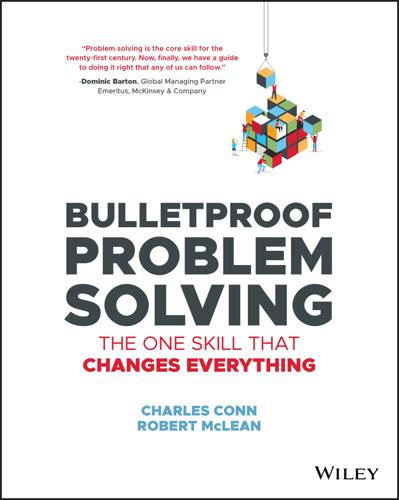
Bulletproof Problem Solving
by
Charles Conn
and
Robert McLean
Published 6 Mar 2019
See Anxious parade of knowledge Arguments structuring, 187e types, 188e Arthroscopic partial meniscectomies (APM), 125–127 options, 126 Arthroscopy, success, 125 Artifacts, 69e, 70e Artificial intelligence role, 204 techniques, learning algorithms, 90–91 Assets/options (cleaving frame example), 76 Associated capability platform, 221e AT&T, lawsuit, 171 Audiences, interaction, 190–191 Automation, role, 204 Avahan HIV project (India), problem aperture, widening, 41–42 framing, 42e Availability bias, 101 Availability heuristic, 100 B Back of the envelope calculation, 169 Baer, Tobias, xxii Baghai, Mehrdad, 169, 203, 220 Balancing, 71 moral balancing, 71 Baur, Louise, 242 Bay Area nursing‐related patient outcomes, 90 case study, 66–67 levers, strategies, 66 nursing outcomes, improvement, 67e workplan detail, 92e Bayesian statistics, 136, 140 case study, 141, 146–149 Bayesian thinking, 118–119 Bazerman, M.H., 216 Behavioral interventions, 240 Belkin, Douglas, xviii Bell, Michael, 246 Beyond visual line of sight (BVLOS), 224, 226 BHP mining, xxiii, 184 capital, raising (cost), 214 development options, 218–219, 219e long‐term investment, 214 valuation scenarios, 217e value, 215e Bias/error (avoidance), team behavior (usage), 99–100 Biases discussion, 218 interaction, 101–106, 102e tackling, 107e types, 101 Big bets, 197, 201, 206 Big Short, The (Lewis), 201 Bill and Melinda Gates Foundation, 42 Black‐Scholes valuation, 216 Black Swan, The (Taleb), 105 Body mass index (BMI), 144, 160 Book of Why, The (Pearl/Mackenzie), 150 Borrower default, prediction, 165 Bossidy, Larry, xv Boston Public School System, cost savings, 161 Boucher, Wayne I., 199 Bradley, Chris, 201 Brainstorming, 18e, 240 session, 53 structure, 97 Branches, 55 Brandenberger, Adam, 200 Break‐even point, 120 Breakthrough thinking, 99 Broockman, David, 153, 156 Brooks, David, xvii Buffalo Technology, patent infringement, 169–170 Buffett, Warren, 115 Bulletproof problem solving cycle, 4–7, 4e steps, 5–7 Business building, staircase strategy approach, 203 competitive strategy, 169 models, challenge, 119 new businesses (building), strategic staircases (usage), 220–226 problems, focus, 75–77 Butland, Bryony, 236 BVLOS, 225e, 226 C CAE.

Just Giving: Why Philanthropy Is Failing Democracy and How It Can Do Better
by
Rob Reich
Published 20 Nov 2018
Here, public policy does active harm, subsidizing the worsening of inequalities that other policies might reasonably be thought responsible for diminishing. I turn now to an illustration of exactly this phenomenon. When Philanthropy Generates Greater Inequality: The Plutocracy of the PTA In recent years, large private foundations such as the Bill and Melinda Gates Foundation have come under criticism in the United States for funding a wave of controversial efforts to reform poorly performing public schools.³⁶ In chapter 4 I take up questions about the influence of plutocratic philanthropic voices in public policy and the operation of public institutions such as local schools.
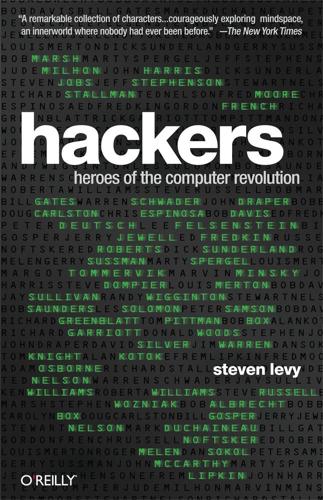
Hackers: Heroes of the Computer Revolution - 25th Anniversary Edition
by
Steven Levy
Published 18 May 2010
O’Reilly says the action now is in DIY biology—manipulating cell’s genetic code in a way a previous generation of hackers manipulated computer code. “It’s still in the fun stage.” Just ask Bill Gates. If he were a teenager again, he’d be biology hacking. “Creating artificial life with DNA synthesis. That’s sort of the equivalent of machine language programming,” says Gates, whose work for the Bill and Melinda Gates Foundation has led him to become a didactic expert in disease and immunology. “If you want to change the world in some big way, that’s where you should start—biological molecules. Those are all pretty deep problems that need the same type of crazy fanaticism of youthful genius and naiveté that drove the PC industry, and can have the same impact on the human condition.”
…
Wizards Beeler, Mike, Greenblatt and Gosper, Life Beer Run game, Frogger Bekins Moving and Storage, The Wizard and the Princess Bell System Technical Journal, The Midnight Computer Wiring Society Bell Telephone System, The Midnight Computer Wiring Society Bell, Gordon, Greenblatt and Gosper Bennett, Bill, The Midnight Computer Wiring Society Benway, Doctor, Revolt in 2100, Revolt in 2100 Berkeley Barb, Revolt in 2100 Berzerk, Frogger Bill and Melinda Gates Foundation, Afterword: 2010 Binary number system, The Tech Model Railroad Club Bit (measurement), The Tech Model Railroad Club Bit Works, Applefest Blattisms, Greenblatt and Gosper Blue box long-distance calls, Secrets Blue boxes, The Midnight Computer Wiring Society, Woz Bolt Beranek and Newman (BBN), Spacewar, Spacewar Bootstrap, The Homebrew Computer Club Box, Bob and Carolyn, Frogger, Wizard vs.
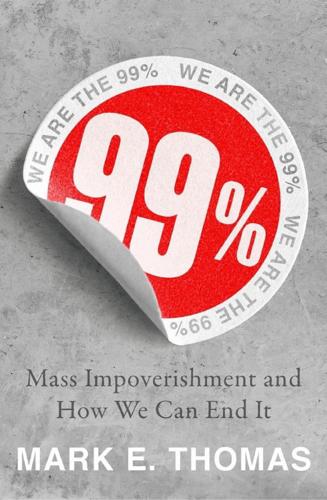
99%: Mass Impoverishment and How We Can End It
by
Mark Thomas
Published 7 Aug 2019
.’… From the Occupy movement to the demonization of the rich embedded in virtually every word of our local newspaper, the San Francisco Chronicle, I perceive a rising tide of hatred of the successful one per cent… This is a very dangerous drift in our American thinking. Kristallnacht was unthinkable in 1930; is its descendent ‘progressive’ radicalism unthinkable now?11 While this may be an extreme case, Perkins is not alone in feeling isolated and anxious. In a study carried out for the Bill and Melinda Gates Foundation by Boston College,12 over 160 extremely wealthy respondents reported on their feelings about a wide range of human issues including finances, family and friends. The level of insecurity is surprising – one respondent was quoted as saying that he ‘wouldn’t feel financially secure’ until he had US$1 billion in the bank.

Open for Business Harnessing the Power of Platform Ecosystems
by
Lauren Turner Claire
,
Laure Claire Reillier
and
Benoit Reillier
Published 14 Oct 2017
These donors are prepared to give vast sums of money. However, they need to know that their capital is efficiently deployed according to clear strategic objectives, with projects carefully selected, tracked and closely monitored on the ground. Yet even the most sophisticated and advanced programs, such as the ones run by the Bill and Melinda Gates Foundation, recognize that there is much to do and that even good management techniques and technology may not be sufficient. There is still a huge imbalance between the issues that cause the most suffering in the world and the ones that attract money because they are popular with donors. In a recent ‘Ask Me Anything’ online session on well-known social platform Reddit, Bill Gates’s answer to a question about what is yet to be done was the following: So far we have not been able to use technology to connect people to the needs of the poorest in countries that are [too] far away to tap into their empathy.
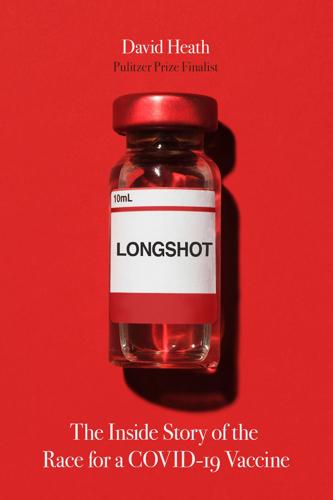
Longshot
by
David Heath
Published 18 Jan 2022
Graham began discussing pandemic preparedness on committees at the World Health Organization, which crafted a blueprint for epidemic preparedness. It included MERS and SARS. These near misses also inspired the creation of the Coalition for Epidemic Preparedness Innovations, a private-public partnership. CEPI was launched in Davos in the summer of 2016 with backing from the Bill and Melinda Gates Foundation and the Wellcome Trust.32 CEPI came together remarkably quickly after Jeremy Farrar of the UK’s Wellcome Trust co-authored a commentary for the New England Journal of Medicine in July 2015 calling for a global vaccine-development fund.33 The article identified 47 diseases and infections for which there was not yet a fully effective vaccine.

Summer of Our Discontent: The Age of Certainty and the Demise of Discourse
by
Thomas Chatterton Williams
Published 4 Aug 2025
In the summer of 2020, the Smithsonian published (and rescinded after much uproar) a graphic in an online portal about race and racism in America that identified rational thought, politeness, objectivity, and the Protestant work ethic as harmful “white” characteristics that perpetuate systemic racism. In February 2021, a consortium of two dozen education organizations funded by the Bill and Melinda Gates Foundation published “A Pathway to Equitable Math Instruction,” which argued, amazingly, that a “focus on getting the right answer,” requiring students to “show their work,” and operating under the assumption that “expectations are [to be] met” were also facets of “white supremacy culture.” Such perspectives, as insulting as they are puzzling, have formed an entire latticework of interlocking and self-reinforcing language and assumptions that obtains throughout the nation’s education system.
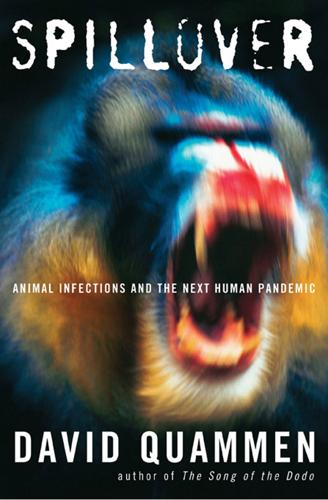
Spillover: Animal Infections and the Next Human Pandemic
by
David Quammen
Published 30 Sep 2012
Its ecology was simple. It existed in humans—in humans only—and was therefore much easier to eradicate. The campaign to eradicate polio, begun in 1988 by WHO and other institutions, is a realistic effort for the same reason: Polio isn’t zoonotic. And malaria is now targeted again. The Bill and Melinda Gates Foundation announced, in 2007, a new long-term initiative to eradicate that disease. It’s an admirable goal, a generously imaginative dream, but a person is left to wonder how Mr. and Mrs. Gates and their scientific advisers propose to deal with Plasmodium knowlesi. Do you exterminate the parasite by killing off its reservoir hosts, or do you somehow apply your therapeutics to those hosts, curing every macaque in the forests of Borneo?
…
Sazaly), 317–18, 319 acarologists, 250 Acholi people, 88, 90 adenine, 156, 270, 306, 309 Advisory Committee on Dangerous Pathogens, British, 275 Aedes aegypti, 23, 43 Afghanistan, 22 Africa: Central, see Central Africa East, 360, 471, 483 southern, 483 sub-Saharan, 24, 136, 399 West, 402, 404, 471, 483 African green monkey (Chlorocebus), 396–97, 398–99 African horse sickness (AHS), 16–17, 18 Afzelius, Arvid, 240 agriculture, invention of, malaria and, 137–38, 139 AIDS, 67, 274, 385–489, 511 in chimpanzees, 466, 469, 474–77 emergence of, 42, 43, 385–90, 407–89 in gay men, 42, 385–86, 390, 391, 407, 489, 519 geographical dissemination of, 482–89 in Haitians, 386–87, 389, 484–88 in hemophiliacs, 390, 391, 489 Kinshasa emergence of, 428–29, 430–31, 462, 463, 477–78, 481–84 as pandemic, 24, 41–42, 290, 403, 437, 477, 512 R0 of, 390, 429, 431, 445, 462 sexual mores and, 429, 463, 478 sexual transmission of, 388, 391, 463, 480 syringe reuse and, 390, 391, 463, 478–82, 489 threshold density of, 480 transmissibility of, 388 as zoonotic disease, 14, 21, 381, 385, 477 see also HIV-1 Ailes, Elizabeth, 465 Amazon basin, 515 Amman, Brian, 352–55, 364–65 Ammann, Karl, 434, 437 amplifier hosts, 34, 36, 191, 195, 236, 314, 316–17, 319–20 Anderson, Roy M., 302, 303–6, 518 And the Band Played On (Shilts), 387–88, 486 Ang, Brenda, 176–77, 179–81, 207 Angola, 483 Annapolis, Md., 212, 214 Anopheles mosquitoes, 135–36, 138, 146 A. latens, 158, 161 A. leucosphyrus, 161, 163 DDT resistance in, 147 anthrax, 21, 24, 102, 265, 517 anthroponosis, 67 antibiotics, 290 as ineffective on viruses, 24, 211, 269 antibodies, effectiveness of, 350 antibodies, screening for, 424, 425 to Ebola, 65, 66, 74, 91, 115, 351, 371 to Hendra, 27, 28, 31, 32, 48–49 to herpes B, 278–79 to HIV, 397, 403 to Marburg, 356 to Nipah, 320, 322, 331 to SFV, 288–89 to SIV, 396, 467 Argentina, 214, 216 Armstrong, Charles, 215 asmani bala (curse of Allah), 376, 378 atoxyl, 480 Atsangandako, Catherine, 123 Auerbach, David M., 388, 389 Austin, Thomas, 298 Australia: Hendra virus in, see Hendra virus human habitation of, 37 land clearance in, 369, 515 myxoma virus in, 298–302, 305–6 psittacosis in, 216–19 Q fever in, 219–20 Australian Animal Health Laboratory (AAHL), 18–19, 25, 28, 319 Australian bat lyssavirus, 314, 367 avian (bird) flu, see H5N1 virus bacteria, 23, 24, 40, 102, 265, 290 intracellular, 230 viruses vs., 211 zoonotic, 211–59 see also pathogens bacterial diarrhea, 325 Bakola people, 87–88, 89–90 Bakwele people, 436–37 Bali, 277–78, 286, 288 Balkan grippe, 221–22 Balo, Estelle, 123–24 Balo, Prosper, 65, 66, 122, 123–24 Bambendjellé people, 55 banded leaf monkeys, 161, 162 Bangalore, India, 128 Bangladesh, 163, 281 Nipah virus in, 325–42, 514 population density of, 325, 330 bar-headed goose, 509, 510 Barnes, Michelle, 360–63, 364 Barré-Sinoussi, Françoise, 393 basic reproduction rate, see R0 bats: diversity of, 348–49 evolution of, 349–50 as Hendra reservoirs, 27, 30–31, 37, 43, 48, 115, 313, 331, 351, 366–67, 499 immunology of, 347–48, 350–51 insectivorous, 350 as Marburg reservoirs, 313, 351–65, 370, 372 mark-recapture tagging of, 355, 365 as Nipah reservoirs, 322, 323–25, 327, 331–32, 334, 351, 514–15 as possible Ebola reservoirs, 115–16, 122, 313–14, 351, 370, 371–72 as rabies reservoirs, 31, 313, 351 as SARS reservoirs, 194–96, 199–202, 206, 313, 334, 347, 351, 514–15 as virus reservoirs, 313–14, 345–51, 514–15 “Bats: Important Reservoir Hosts of Emerging Viruses” (Calisher et al.), 348–51 Beijerinck, Martinus, 265–66 Beijing, SARS in, 168 beka (initiation ceremony), 436–37 Belgian Congo, see Congo, Democratic Republic of the Belgium, 484 Berlin Union of Canary Fanciers, 214 Bernoulli, Daniel, 130–31 Berryman, Alan A., 496 Besselink, Rob, 223–24, 225–26 ß (transmission rate), 374 Bhutan, 163 Biek, Roman, 117, 121 Bill and Melinda Gates Foundation, 518 biogeography, 256–59 biohazard level 4, 275–76 biological and chemical weapons, 97 Biological Aspects of Infectious Disease (Burnet), 235–36 biological diversity, 23, 255–56 biosafety level 3 (BSL-3) laboratories, 102, 230, 412 biosafety level 4 (BSL-4) laboratories, 74, 102–5, 110, 111, 275, 356 bioterrorism, 227, 513 bird flu, see H5N1 virus birds, influenza in, 313, 314, 505–6, 507–10 Black Death, 63, 290, 496 blacklegged ticks, see deer (blacklegged) tick blood plasma trade, 485–86 blood transfusions, hepatitis B and, 388 Blumenthal, Richard, 239 Bobangi people, 458–60 Boesch, Christophe, 79 Bolivia, 38–39, 69–70 Bolivian hemorrhagic fever, 21 bonobo (Pan paniscus), 139–40 Booué, Gabon, 61–62, 73, 81, 117 Borna, 24 Borneo, 153, 160 deforestation of, 161–62, 515 Borrelia burgdorferi, 213, 238–39, 240, 244, 246, 251, 256, 257 as bacterium, 258–59 humans as dead-end hosts of, 253 life history of, 213, 248, 249–51, 255 noninheritability of, 251 round-body form of, 258–59 B. duttonii, 243 Boumba Bek National Park, Cameroon, 435 bovine tuberculosis, 21 Bradshaw, Bob, 17 Brazzaville, ROC, 429–30, 432, 461–62, 463, 477 Brebner, William, 272–74, 278, 286 Brisbane, Australia, 13, 211, 219 British Columbia, 498 Brownie (horse), 46–48 Brownlee, John, 132–33, 134, 518 Brundtland, Gro Harlem, 169 Brunner, Jesse, 254–55, 257 bubonic plague, see plague Buddhist temples, macaques at, 24, 276–77 Buenos Aires, Argentina, 214 Bumba Zone, 69, 71 Bundibugyo, Uganda, 84 ostracism of, 86 Bundibugyo virus, 84–87 unanswered questions about, 86 Burgdorfer, Willy, 213, 243–44 Burke, Donald S., 512–13, 514 Burnet, Frank Macfarlane, 216–17, 268, 302, 304, 346, 505 infectious disease theories of, 234–37, 295–96 psittacosis and, 217–19, 236–37 Q fever and, 219–20, 221–22, 231, 234, 264 Burundi, 414 bushmeat, 344, 413, 432, 434, 451–52, 515 great apes as, 53, 57, 67, 89, 435–37, 438–39, 451 Buy’em–Sell’ems, 435, 447–48, 449–50 “BW” (surveyor), 151–53, 157, 160 Bwindi Impenetrable Forest, 357, 360 Cairns, Australia, 45–48 Calisher, Charles H., 345–46 Cambodia, 163 camels, rabies in, 296–97 Cameroon, 71, 478, 480 HIV in, 406 as locus of HIV spillover, 42, 425, 426–31, 437, 463, 471, 477 logging in, 433–35 poaching in, 432–33, 438 Candida yeast, 385–86, 389 canine distemper virus, 19 Cannon Hill paddock, 14, 19–20, 27–28, 29, 30, 45 Cape Verde, 398 capsids, 268, 269, 270 Carlsbad Caverns, 350 Carroll, Serena, 352 Cary Institute of Ecosystem Studies, 247 Cat’s Cradle (Vonnegut), 24 cattle, FMD in, 35–36 CD4 protein receptor, 443 Center for Infectious Disease Dynamics, 306 Centers for Disease Control and Prevention (CDC), 39, 89, 186, 190, 377, 513 AIDS and, 388, 488 BSL-4 labs at, 74, 356 Division of Vector-Borne Diseases, 318 Ebola and, 69–70, 72, 73, 74, 76 Special Pathogens Branch, 70, 93, 352 Central Africa, 40, 68, 293 biological survey of, 54, 59–60 ebolavirus outbreaks in, 53–54, 56–57, 60–63, 68, 86, 118–19 gorillas in, 67–68 HIV in, 406, 483 as locus of HIV-1 spillover, 396, 423 trypanosomiasis innoculations in, 478–81 Central African Republic, 438, 483 Central Veterinary Institute, Netherlands, 230 Centre International de Recherches Médicales de Franceville (CIRMF), 54, 56, 59, 67, 114, 117, 403 Cercocebus atys (sooty mangabey), 399–401, 404, 406, 413 Ceylon, see Sri Lanka Chandpur, Bangladesh, 326, 328 Chashnipeer, 282 Chashnipeer Majar, 280–85, 287 Chatou Wildlife Market, 188, 191, 197 chickenpox, 67, 308 chikungunya, 24, 270, 307 Childs, James E., 348 “Chimpanzee Reservoirs of Pandemic and Nonpandemic HIV-1” (Keele et al.), 427–28 chimpanzees (Pan troglodytes), 42, 120 AIDS in, 466, 469 bushmeat from, 53, 57, 435–37, 451 central (P. t. troglodytes), 423, 425, 428 eastern (P. t. schweinfurthii), 424 ebolaviruses in, 53, 54, 79–80 as HIV reservoirs, 313, 403–5, 423 malaria in, 138–39 P. t. vellerosus, 425 SFV in, 288 SIV in, see simian immunovirus (SIV), in chimpanzees Chimpanzees of Gombe, The (Goodall), 468 China, 514–15 A. leucosphyrus in, 163 blood plasma donors in, 486 Era of Wild Flavor in, 187–88, 191, 197–98, 433 polio in, 22 SARS in, 44, 168–74, 207, 374 China Airlines flight 112, 168, 169 China Syndrome (Greenfeld), 187 Chinese bamboo rats, 203–5, 206 chipmunks, deer ticks and, 252 chlamydia, 183, 186 Chlamydophila psittaci, 216, 237, 238 Chlorocebus (African green monkeys), 396–97, 398–99 Chmura, Aleksei, 196–205, 206, 208, 333, 514 cholera, 131, 237, 265, 325, 380, 381 Cholera Hospital, Dhaka, see ICDDR,B Chua, Paul, 317–18, 319, 324, 334 Cipro, 362 Ciuca, Mihai, 149–50, 151, 157, 480 civet cat (Paguma larvata; masked palm civet), 187, 189–91, 192–93, 195, 198, 206, 343 classical swine fever (hog cholera), 316 “Coevolution of Hosts and Parasites” (Anderson and May), 304–5 Colorado State University, 345–46 Columbia University, 514 common cold, 35, 270 common tern (Sterna hirundo), 505, 507 Congo, Democratic Republic of the (DRC; Zaire), 139–40, 414, 417, 478 Ebola in, 69–75, 76–77, 118, 370–73 emergence of AIDS pandemic in, 389, 407, 428–29, 430–31, 462, 463, 477–78 Haitians in, 484–85 Congo, Republic of the (ROC), 53, 55, 426, 432, 438, 439, 450, 466 Ebola in, 63, 115, 118, 120 emergent AIDS cases in, 429–30 logging in, 439 Congo basin, 431, 434, 515 Congolese Red Cross, 481 Congo River, 139, 423, 428, 429–31, 460–61, 477 Connecticut Department of Health, 212 Consortium for Conservation Medicine, 194, 196, 333 consumptive coagulopathy, 95–96, 108 “Contribution to the Mathematical Theory of Epidemics, A” (Kermack and McKendrick), 141–44 Cook, James, 37 coronaviruses, 185, 193, 194, 270, 512 Côte d’Ivoire, 60, 79, 82, 359, 406 Cox, Herald, 220–21, 243 Coxiella burnetii, 220, 221–34, 238 as intracellular bacterium, 230 windborne transmission of, 228–29, 259 Cox-Singh, Janet, 153–54, 156, 158–64, 514 crested mona monkey, 112 Crimean-Congo hemorrhagic fever, 94 critical community size (CCS), 129–30, 349 Cuba, yellow fever eliminated from, 263, 266 Cunneen, Ben, 33 Curtis, Tom, 415, 416 Cut Hunter, 442–45, 478 cut-hunter hypothesis, 413, 428, 440, 442–48, 453–62, 466, 478 cytosine, 156, 270, 306, 309 Danish Pest Infestation Laboratory, 74 Daszak, Peter, 514–15 date-palm sap, 329, 331–32 Davis, Gordon, 220–21, 243 DDT, 145, 147 dead-end hosts, 83, 164, 294, 343, 373, 480 de Bruin, Arnout, 227–30 deer (blacklegged) tick (Ixodes scapularis), 212–13, 241–42, 243, 244–47, 257 diverse hosts of, 249 life history of, 242, 248–50, 252, 255 as Lyme disease vector, 212–13, 241–42, 255 questing by, 250, 252 Defense Advanced Research Projects Agency (DARPA), 513–14 deforestation, 40, 67, 161–62, 163, 276, 433–35, 515 Delhi, India, 276 Delta Regional Primate Research Center, 400–401 Den Bosch, Netherlands, 224 dengue, 21, 24, 43, 270, 292, 307, 314, 346 Derrick, Edward H., 219, 220 Desmond, Jim, 334, 339–40 Desowitz, Robert S., 151 Dhaka, Bangladesh, 325, 328, 334, 375, 379 diarrhea, 291, 380–81 bacterial, 325, 330 diphtheria, 237, 414 disease, see infectious disease Dispensaire Antivénérien, 481–83 disseminated intravascular coagulation (DIC), 95–96, 108 DNA: attributes of, 154, 156, 270 filter-paper collection technique for, 158–59, 514 in retroviruses, 391, 443 DNA polymerase, 270, 309 Dongmen Market, 188, 189, 191 Dongmo, Zacharie, 435–36 Dover, Mass., 246–47 Dowhan, Joe, 241–42 DPI, see Queensland Department of Primary Industries Drama Series (horse), 14–16, 19, 27, 43, 45 DRC60, 409–13, 417, 419, 420–21, 431, 482, 488 Drori, Ofir, 432–33, 435 Duerr, Shannon, 254–55 Dugas, Gaëtan (Patient Zero), 387–89, 407, 443, 489 duikers, 89, 120, 432, 451 Dutchess County, N.Y.: biogeography of, 257 Lyme disease in, 253–54 Duvalier, François “Papa Doc,” 484, 486 Duvalier, Jean-Claude “Baby Doc,” 486 Duvenhage, 313 Dwyer, Greg, 499–503, 518–19 Dyer, Rolla, 221 Eating Apes (Peterson), 434 Ebola River, 69 Ebola virus (Zaire ebolavirus), 24, 39, 40, 76, 182, 285, 307, 343, 352, 359, 362, 365, 403, 489, 511, 512 in apes, 62–63, 120, 121 bats as possible reservoirs of, 115–16, 122, 313–14, 351, 370, 371–72 Booué outbreak of, 61–62, 73, 81, 117 DIC and, 95–96, 108 ecology of, 115–17 evolutionary history of, 115, 116 exaggerated descriptions of, 92–94, 95, 502 genetic differences in, 119–20 genome of, 110 geographical dissemination of, 117–22, 431 in gorillas, 59, 68, 91–92, 120, 122, 124, 304 Ivindo goldmining camp outbreak of, 61, 87, 117 Kikwit outbreak of, 72–75, 80, 91–92, 93, 113, 117 laboratory accidents involving, 97–110 lethality rate of, 54, 62, 63, 73, 76, 82, 110–11 Luebo outbreak of, 370–73 Mayibout 2 outbreak of, 53–54, 56–57, 60, 61, 72, 73, 80–81, 112–13, 114, 117, 443 Mbomo outbreak of, 89–91, 92, 118, 122–24 mutation rate of, 119 and ostracism of victims’ relatives, 123 pathology of, 94–96 RNA of, 108 search for reservoir hosts of, 68, 69, 70–72, 74, 75, 76, 112, 114, 115–16, 118–19, 121–22, 293, 313–14, 351, 370, 371–72 secondary cases of, 53–54 as sorcery, 87–91 symptoms of, 94 Tandala outbreak of, 76–77, 117 total fatalities from, 91–92 transmission mechanics of, 62, 292–93 virions of, 268–69 Yambuku outbreak of, 69–72, 73, 76, 97, 117, 119–22 Ebola virus (Zaire ebolavirus), spillover mechanism of, 111, 115, 116–17 “particle” hypothesis for, 118, 120–22 “wave” hypothesis for, 118–20 ebolaviruses, 53–124 Bundibugyo, 84–87 in chimpanzees, 53, 54, 79–80 forests linked to, 75 genomes of, 84–85 geographical dissemination of, 68, 76, 86–87, 117 hiding ability of, 74–75, 111 humans as dead-end hosts for, 83, 164, 285, 343, 373 immune system suppression by, 94–95, 114–15 lethality of, 54, 62, 63, 73, 76, 81–82, 90, 370 paucity of scientific understanding of, 87, 96 reservoir hosts of, 75, 82, 85, 86, 370 Reston, 77–78, 81, 86–87 species of, 176 sporadic outbreaks of, 72, 75 Sudan, see Sudan ebolavirus Taï Forest, 79–80, 82, 87 transmission chain of, 82–83 as zoonoses, 21 EcoHealth Alliance, 64, 196, 333, 514 ecosystems: diversity of, 23 human-caused disruption of, 23, 40, 41, 62, 67, 161–62, 163–64, 237, 258, 343, 344–45, 369, 433–35, 439, 515–16 infectious diseases as, 247, 251 Edinburgh, University of, 44, 45 Edward, Lake, 360 Egypt, H5N1 in, 510 Egyptian fruit bat (Rousettus aegyptiacus), 352–53, 355–56, 358, 372 Eigen, Manfred, 309 Eigen’s paradox, 309 electron microscopy, 318 emergence, definition of, 42–43 Emerging Infectious Diseases, 42 encephalitis, 28 endangered species, human consumption of, 188 Engel, Gregory, 277–80, 284–85, 288–89 England, Ebola accident in, 97–99 enteroviruses, 292 epidemics: cyclical pattern of, 132–35 depletion of susceptibles in, 134 fatality rate in, 142–44 immunity in, 142 infection rate in, 142–44 likelihood of, 374 mass action principle of, 132 in nonhuman populations, 512–13 recovery rate in, 142–44 SIR model of, 143–44, 303, 367, 368 threshold density in, 36, 144, 480 see also infectious disease; pandemics epidemiologists, 129 Epomops franqueti (Franquet’s epauletted fruit bat), 371 Epstein, Jon, 333–38, 339–45, 356, 375, 514–15 Equatorial Guinea, 406 equine infectious anemia virus, 297 Era of Wild Flavor, 187–88, 191, 197–98, 433 erythema migrans, 240, 241 Escalante, Ananias A., 139, 148–49 Essex, Myron “Max,” 394–98, 416 Ethiopia, 483 Etouck, Sophiano, 56–57, 112–13 Europe, AIDS in, 406 European Center for Disease Prevention and Control, 513 European Community, 225 evolution, 23, 136–39, 164, 301, 360, 398, 507, 517 of bats, 349–50 of Ebola, 115, 116 evolution (continued) of HIV, 418, 420–22, 463, 477 of pathogens, 235–37, 302–10, 344–45, 366–69, 499, 515–17 of viruses, 24, 36–37, 82, 206, 264, 287, 292, 297, 299, 302–10, 322, 343, 344–45 of zoonoses, 344–45, 515–17 Evolution and Emergence of RNA Viruses, The (Holmes), 307 ezanga (evil spirits), 87–88, 89–90 Faridpur District, Bangladesh, 328, 334, 375–79 Faroe Islands, measles epidemic on, 264 Fay, Mike, 54–56, 59–60, 63, 111–13, 431 fecal sampling, 424–25, 426, 471–72 Feeroz, Mohammed Mustafa, 280–81, 283, 285 feline immunodeficiency virus (FIV), 297 feline leukemia virus (FeLV), 392, 394 femmes libres (free women), 430, 481–82, 484 Fenner, Frank, 300–302, 305, 346 Field, Hume, 26, 45, 194, 348 in search for Hendra virus reservoirs, 26–32, 319 in search for Nipah reservoir, 319, 320, 322, 367 filoviruses (Filoviridae), 70, 77, 116, 120, 268, 270 First Fleet, 37 flying foxes (Pteropus), 27, 31, 366–67 black (P. alecto), 31, 367 grey-headed, 31–32, 367 as Hendra reservoirs, 27, 30–32, 37, 43, 45, 48, 115, 331, 351, 366–67, 499 Indian (P. giganteus), 331, 336, 338 large (P. vampyrus), 324 little red, 366–69 as Nipah reservoirs, 322, 323–25, 327, 331–32, 334, 351, 367, 514–15 spectacled, 367 variable (P. hypomelanus), 324 foot-and-mouth disease (FMD), 35–36, 230, 266 Formenty, Pierre, 352, 353–54 Foshan, China, 170 Franceville, Gabon, 54, 114, 117, 370, 403 Frankfurt, Germany, SARS in, 181 Franquet’s epauletted fruit bat (Epomops franqueti), 371 free women (femmes libres), 430, 481–82, 484 French Equatorial Africa (FEA), 479–80 Friedman-Kien, Alvin E., 386, 389, 390 Froesch, Paul, 266 fruit bats, 350 as possible Ebola reservoirs, 115–16, 122, 293 Fujian province, China, 183 Fujita, Norman K., 362, 363 fungi, 23, 40 Gabon, 478 AIDS in, 406 Ebola in, 53–55, 56–57, 60, 61–63, 72, 73, 80–81, 90, 111–13, 115, 117–18, 120 gachis (date-palm tappers), 332–33 Gallo, Robert, 391–93, 394 gametocytes, 136, 138 Gao, Feng, 423, 424 gemo (evil spirits), 88–89, 90 Germany, psittacosis in, 214 germ theory of disease, 130, 265, 517 Ghana, 406 Gibraltar, 408 Gilbert, Tom, 487–88 Gimble (chimpanzee), 468, 470, 471, 472 Global Viral Forecasting Initiative (GVFI), 514 goats: as measles reservoir, 313 Q fever and, 223–34 Gofur (bat catcher), 334, 339, 341 Gombe National Park, Tanzania, 424, 466–77 Gombe Stream Research Center, 468, 473 gonorrhea, 481–82 Goodall, Jane, 424, 466, 467, 468–71 Google, 514 Gorgas, William C., 263, 266 gorillas: bushmeat from, 67, 89, 436, 437, 451 die-offs of, 59–60, 63, 65, 91, 120, 121, 122, 124 Ebola virus in, 59, 68, 91–92, 120, 122, 124, 304 human diseases in, 67–68 see also mountain gorillas; western gorillas Gorinstein, Joseph B., 486 Gottlieb, Michael, 385–86, 389, 390, 407, 489 great apes, 438–39 as bushmeat, 53, 57, 67, 89, 435–37, 438–39, 451 Ebola in, 62–63, 120, 121 see also chimpanzees; gorillas greater spot-nosed monkeys, 464, 465 GreeneChip diagnostic system, 514 Greenfeld, Karl Taro, 187 Guangdong province, China, 169–73, 182–83, 192, 194, 195, 374 “wet markets” in, 188–89, 191, 197–98 Guangzhou, China, 170, 171, 172, 173, 188, 196–97, 208 Guangzhou Institute of Respiratory Diseases, 170, 183 guanine, 156, 306 Guan Yi, 186–87, 189, 190–91, 192, 194, 207 Guholaxmipur, Bangladesh, 375–76 Guilin, China, 197–201, 208 Guinea-Bissau, 397, 402, 406 Gulu, Uganda, 81, 85, 88–89, 92, 93 Gupta, Das, 149 Gurley, Emily, 375–78, 379 gypsy moth (Lymantria dispar), 496, 499, 500–501, 520–21 H1N1 virus, 504 H5N1 virus (bird flu), 21, 182–83, 184, 374–75, 504, 508–11 transmissibility in, 507–8, 510 H5N3 virus, 507 H7N7 virus, 507 habitat alteration, 367, 369 see also ecosystems Hahn, Beatrice, 140–41, 465 and Gombe SIV research, 466–77 in search for origins of HIV-1, 140, 422–25, 427–29, 431, 463, 480, 488 in search for origins of P. falciparum, 140–41 Haiti, blood plasma trade in, 485–86 Haitians, AIDS in, 386–87, 389, 484–88 Hamer, W.
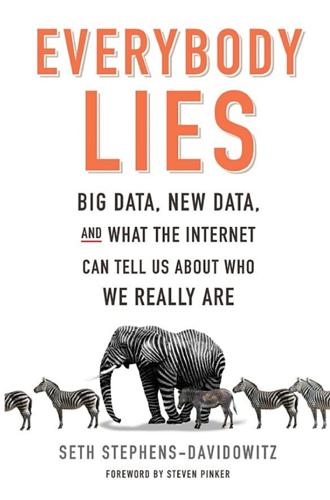
Everybody Lies: Big Data, New Data, and What the Internet Can Tell Us About Who We Really Are
by
Seth Stephens-Davidowitz
Published 8 May 2017
Jacob and Steven D. Levitt, “Rotten Apples: An Investigation of the Prevalence and Predictors of Teacher Cheating,” Quarterly Journal of Economics 118, no. 3 (2003). 255 says Thomas Kane: I interviewed Thomas Kane by phone on April 22, 2015. 256 “Each measure adds something of value”: Bill and Melinda Gates Foundation, “Ensuring Fair and Reliable Measures of Effective Teaching,” http://k12education.gatesfoundation.org/wp-content/uploads/2015/05/MET_Ensuring_Fair_and_Reliable_Measures_Practitioner_Brief.pdf. CHAPTER 8: MO DATA, MO PROBLEMS? WHAT WE SHOULDN’T DO 257 Recently, three economists: Oded Netzer, Alain Lemaire, and Michal Herzenstein, “When Words Sweat: Identifying Signals for Loan Default in the Text of Loan Applications,” 2016. 258 about 13 percent of borrowers: Peter Renton, “Another Analysis of Default Rates at Lending Club and Prosper,” October 25, 2012, http://www.lendacademy.com/lending-club-prosper-default-rates/. 261 Facebook likes are frequently correlated: Michal Kosinski, David Stillwell, and Thore Graepel, “Private Traits and Attributes Are Predictable from Digital Records of Human Behavior,” PNAS 110, no. 15 (2013). 265 businesses are at the mercy of Yelp reviews: Michael Luca, “Reviews, Reputation, and Revenue: The Case of Yelp,” unpublished manuscript, 2011. 266 Google searches related to suicide: Christine Ma-Kellams, Flora Or, Ji Hyun Baek, and Ichiro Kawachi, “Rethinking Suicide Surveillance: Google Search Data and Self-Reported Suicidality Differentially Estimate Completed Suicide Risk,” Clinical Psychological Science 4, no. 3 (2016). 267 3.5 million Google searches: This uses a methodology discussed on my website in the notes on self-induced abortion.
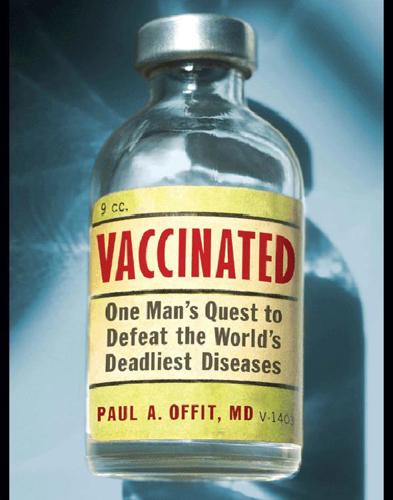
Vaccinated: One Man's Quest to Defeat the World's Deadliest Diseases
by
Paul A. Offit
Published 1 Jan 2007
New England Journal of Medicine 34 (2002):1703–5; L. A. Koutsky, K. A. Ault, C. M. Wheeler, et al., "A Controlled Trial of a Human Papillomavirus Type 16 Vaccine," New England Journal of Medicine 347 (2002): 1645–51. "Fry on the tarmac": Interview with senior executive at Merck, 2004. Bill and Melinda Gates Foundation: S. Okie, "Global Health: The Gates-Buffett Effect," New England Journal of Medicine 355 (2006): 1084–88. Hilleman MMR studies: E. B. Buynak, R. E. Weibel, J. E. Whitman, J. Stokes Jr., and M. R. Hilleman, "Combined Live Measles, Mumps, and Rubella Vaccines," Journal of the American Medical Association 207 (1969): 2259–62; R.

The Trouble With Billionaires
by
Linda McQuaig
Published 1 May 2013
Furthermore, his accomplishment is nothing less than coming up with the operating system for the personal computer – the most widely used innovation of the past century and one that few of us would want to do without. So Gates has made a substantial contribution to society. And, to top it off, he’s become one of the world’s foremost philanthropists, donating $28 billion to the Bill and Melinda Gates Foundation, which has directed huge sums of money to help truly needy people, such as African victims of AIDS and other diseases. He’s become almost a mythical character. It wasn’t surprising then that Time magazine elevated him to one of the one hundred most influential people of the twentieth century, and, in 2005, chose him (along with wife Melinda, and rock star Bono) as Person of the Year.
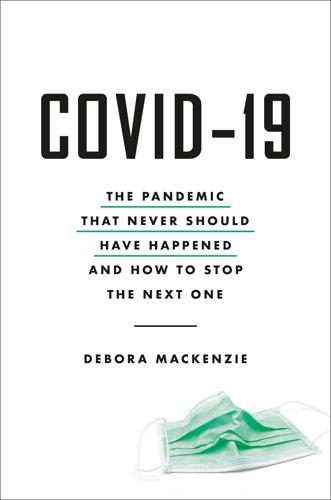
Covid-19: The Pandemic That Never Should Have Happened and How to Stop the Next One
by
Debora MacKenzie
Published 13 Jul 2020
This all makes developing products for any emerging disease difficult or impossible for the private companies that do much of our drug and vaccine development. However, public good is making a comeback. Over the past decade, public-private partnerships have emerged to develop drugs and vaccines for diseases mostly found in poor countries, funded by the Bill and Melinda Gates Foundation and others. CEPI, launched just in time for this crisis, organizes such funding for vaccine R&D for emerging diseases, and now for Covid-19. But there was another reason no real effort was made after SARS to develop remedies for coronaviruses: some virologists decided SARS was never coming back.
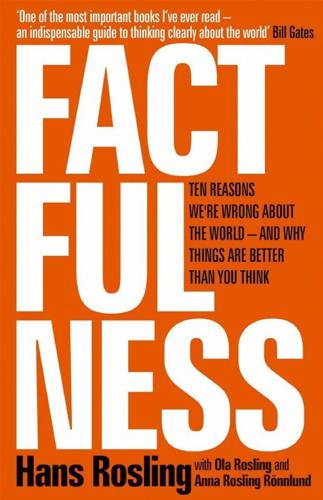
Factfulness: Ten Reasons We're Wrong About the World – and Why Things Are Better Than You Think
by
Hans Rosling
,
Ola Rosling
and
Anna Rosling Rönnlund
Published 2 Apr 2018
Ola, Anna, and I would also like to thank: Jörgen Abrahamsson, Christian Ahlstedt, Johan Aldor, Chris Anderson, Ola Awad, Julia Bachler, Carl-Johan Backman, Shaida Badiee, Moses Badio, Tim Baker, Ulrika Baker, Jean-Pierre Banea-Mayambu, Archie Baron, Aluisio Barros, Luke Bawo, Linus Bengtsson, Omar Benjelloun, Lasse Berg, Anna Bergström, Staffan Bergström, Anita Bergsveen, BGC3, the Bill and Melinda Gates Foundation, Sali Bitar, Pelle Bjerke, Stefan Blom, Anders Bolling, Staffan Bremmer, Robin Brittain-Long, Peter Byass, Arthur Câmara, Peter Carlsson, Paul Cheung, Sung-Kyu Choi, Mario Cosby, Andrea Curtis, Jörn Delvert, Kicki Delvert, Alisa Derevo, Nkosazana Dlamini-Zuma, Mohammed Dunbar, Nelson Dunbar, Daniel Ek, Anna Mia Ekström, Ziad El-Khatib, Mats Elzén, Klara Elzvik, Martin Eriksson, Erling Persson Foundation, Peter Ewers, Mosoka Fallah, Ben Fausone, Per Fernström, Guenther Fink, Steven Fisher, Luc Forsyth, Anders Frankenberg, Haishan Fu, Minou Fuglesang, Bill Gates, Melinda Gates, George Gavrilis, Anna Gedda, Ricky Gevert, Marcus Gianesco, Nils Petter Gleditsch, Google, Google Public Data team, Georg Götmark, Olof Gränström, Erik Green, Ann-Charlotte Gyllenram, Catharina Hagströmer, Sven Hagströmer, Nina Halden, Rasmus Hallberg, Esther Hamblion, Mona Hammami and the team in Abu Dhabi behind Looking Ahead, Katie Hampson, Hans Hansson, Jasper Heeffer, Per Heggenes, David Herdies, Dan Hillman, Mattias Högberg, Ulf Högberg, Magnus Höglund, Adam Holm, Anu Horsman, Matthias Horx, Abbe Ibrahim, IHCAR, IKEA foundation, Dikena G.

The Slow Fix: Solve Problems, Work Smarter, and Live Better in a World Addicted to Speed
by
Carl Honore
Published 29 Jan 2013
“Eventually they left and we never heard from them again.” Bill Gates, the high priest of high-speed problem-solving, has learned the same lesson. In 2005 he challenged the world’s scientists to come up with solutions to the biggest problems in global health in double-quick time. The Bill and Melinda Gates Foundation awarded $458 million in grants to 45 of the more than 1,500 proposals that flooded in. There was giddy talk of creating, for instance, vaccines that needed no refrigeration within five years. But five years later the mood was sober. Even the most promising projects were still a long way from delivering real solutions.

Off the Edge: Flat Earthers, Conspiracy Culture, and Why People Will Believe Anything
by
Kelly Weill
Published 22 Feb 2022
A May 2020 study in the journal Nature analyzed pro- and anti-vaccination sentiment in a network of more than thirteen hundred Facebook pages and nearly one hundred million Facebook users. Its results spelled an ominous warning for science. The pro-vaccination pages had more combined followers, due in part to popular pages like that of the Bill and Melinda Gates Foundation. But those massive pro-vax pages had limited reach; their millions of followers seldom shared their posts. Anti-vax pages, while smaller, had mastered the viral meme, the study found. Their conversational, sensational posts spread far and wide across Facebook groups and pages that took no official stance on vaccinations.

Crossing the Heart of Africa: An Odyssey of Love and Adventure
by
Julian Smith
Published 7 Dec 2010
The disease that dogged Grogan is still a major public health issue. According to the World Health Organization, malaria kills almost a million people every year, and 85 percent of them are African children under five. The parasites have developed resistance to drug after drug, so governments and organizations like the Bill and Melinda Gates Foundation are putting hundreds of millions of dollars into multi-pronged campaigns that include vaccine development and mosquito control. Sleeping under a net treated with long-lasting insecticide is one of the simplest and cheapest ways to avoid the disease. In oneweek, in September 2006, the government and donor groups distributed 1.3 million of these to every child in the country between six months and five years old.

Most Likely to Succeed: Preparing Our Kids for the Innovation Era
by
Tony Wagner
and
Ted Dintersmith
Published 17 Aug 2015
Tony also described the school in his book The Global Achievement Gap, and HTH’s recently established graduate school of education in Creating Innovators. Viewers and readers wanting to know more about the school are encouraged to seek out these sources.) In 1999, when Tony first began working with Tom Vander Ark, who had just been appointed head of education grant-making at the Bill and Melinda Gates Foundation, there were only a handful of schools like High Tech High around the country—and most were affiliated with the network Ted Sizer founded in 1984, called The Coalition of Essential Schools. There was Deborah Meier’s legendary Central Park East Secondary School in Harlem and, later, The Mission Hill School in Boston; The Met in Providence, co-founded by Dennis Littky and Elliot Washor; and an alternative high school Ann Cook directed called Urban Academy, as well as some other great small secondary schools in New York City.

925 Ideas to Help You Save Money, Get Out of Debt and Retire a Millionaire So You Can Leave Your Mark on the World
by
Devin D. Thorpe
Published 25 Nov 2012
Most Americans, however, have access to relatively affordable college tuition at state schools. Community colleges are often downright cheap, offer quality education that prepares students well to finish a four-year degree at a university. Top Ten Degrees For Financially Successful Careers A recent study (bit.ly /zy5xQU) funded by the Bill and Melinda Gates Foundation conducted by professors at Georgetown University measured unemployment rates and salaries by major. Some of the data is surprising. I’ve ranked the ten best degrees based on average salaries for an experienced college graduate, using their data. Engineering: Experienced engineering graduates earn an average of $81,000 per year and experience just 4.9% unemployment.

Randomistas: How Radical Researchers Changed Our World
by
Andrew Leigh
Published 14 Sep 2018
Pianta, Anne Gregory, et al., ‘An interaction-based approach to enhancing secondary school instruction and student achievement’, Science, vol. 333, no. 6045, 2011, pp. 1034–7. The researchers report an impact of 0.22 standard deviations. Since students gain approximately one standard deviation every two years, this impact is equivalent to around half a year of student learning. See also Bill and Melinda Gates Foundation, Seeing it Clearly: Improving Observer Training for Better Feedback and Better Teaching, Washington DC: Gates Foundation, 2015, p. 11. 46Maya Escueta, Vincent Quan, Andre Joshua Nickow & Philip Oreopoulos, ‘Education technology: An evidence-based review’, NBER Working Paper No. 23744, Cambridge, MA: NBER, 2017. 47Escueta, ‘Education Technology’. 48The share of pupils completing their matriculation exams rose from 18 per cent in control schools to 25 per cent in treatment schools: Joshua Angrist & Victor Lavy, ‘The effects of high stakes high school achievement awards: Evidence from a randomized trial’, American Economic Review, vol. 99, no. 4, 2009, pp. 1384–414. 49Simon Burgess, Raj Chande & Todd Rogers, ‘Texting parents’, Working Paper, Education Endowment Foundation, London, 2016, available at www.educationendowmentfoundation.org.uk 50Todd Rogers & Avi Feller, ‘Intervening through influential third parties: Reducing student absences at scale’, working paper, Cambridge, MA: Harvard University Kennedy School, 2017. 51Paul Tough, 2008, Whatever It Takes: Geoffrey Canada’s Quest to Change Harlem and America, New York: Houghton Mifflin, pp. 21–9 52Will Dobbie & Roland G.

How to Prevent the Next Pandemic
by
Bill Gates
Published 2 May 2022
GO TO FIGURE IN TEXT “Coronavirus May Have Spread”: Sheri Fink and Mike Baker, “Coronavirus May Have Spread in U.S. for Weeks, Gene Sequencing Suggests,” New York Times, March 1, 2020. GO TO NOTE REFERENCE IN TEXT Oxford Nanopore is now working with: Oxford Nanopore, “Oxford Nanopore, the Bill and Melinda Gates Foundation, Africa Centres for Disease Control and Prevention and Other Partners Collaborate to Transform Disease Surveillance in Africa,” https://nanoporetech.com. GO TO NOTE REFERENCE IN TEXT In March 2020, Neil Ferguson: Neil M. Ferguson et al., “Report 9—Impact of Non-Pharmaceutical Interventions (NPIs) to Reduce COVID-19 Mortality and Healthcare Demand,” https://www.imperial.ac.uk.

Portfolios of the poor: how the world's poor live on $2 a day
by
Daryl Collins
,
Jonathan Morduch
and
Stuart Rutherford
Published 15 Jan 2009
The financial diaries work in Bangladesh (1999– 2000) and India (2000–2001) was funded by research grants from the UK’s Department for International Development to the Finance and Development Research Programme at the Institute for Development Policy and Management at the University of Manchester. The Grameen II diaries (2002–5) in Bangladesh were commissioned by MicroSave. The South African financial diaries were supported by the Ford Foundation, FinMark Trust, and the Micro Finance Regulatory Council of South Africa. Jonathan Morduch’s time was supported by the Bill and Melinda Gates Foundation through a grant to the Financial Access Initiative. The views expressed in this book are our own, and, while we have received much support, the views 243 ACKNOWLED GMENTS do not necessarily represent the opinions of the funders or their employees. We offer our thanks to the field researchers.

Singularity Rising: Surviving and Thriving in a Smarter, Richer, and More Dangerous World
by
James D. Miller
Published 14 Jun 2012
New York: Random House. Frost, Peter, and Bernard Saladin d’Anglure. 2010. “The Roman State and Genetic Pacification.” Evolutionary Psychology 8 (3): 376—89. http://www.epjournal.net/articles/the-roman-state-and-genetic-pacification/. Gates, Bill. 2011. 2011 Annual Letter from Bill Gates. Bill and Melinda Gates Foundation. http://www.gatesfoundation.org/annual-letter/2011/Pages/home.aspx. Gensowski, Miriam, James J. Heckman, and Peter Savelyev. 2011. “The Effects of Education, Personality, and IQ on Earnings of High-Ability Men.” Working paper. Goetz, Thomas. June 22, 2010. “Sergey Brin’s Search for a Parkinson’s Cure.”
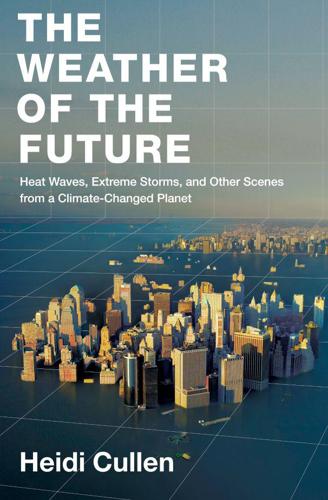
The Weather of the Future
by
Heidi Cullen
Published 2 Aug 2010
In the drier regions of Niger and Burkina Faso, people had begun reclaiming abandoned fields and getting new grain harvests by investing in simple water-harvesting technologies. Farmers were doing everything in their power to adapt to climate change, and the trees were their shield against the increasingly harsh climate. Through support from the Bill and Melinda Gates Foundation and OXFAM America, the regreening initiative had spread across the Sahel. November 2022 But there was only so much the trees could do. Without significant infrastructure investment, farmers across the Sahel were alone in their battle against the climate. Across the Sahel, yields of peanuts, beans, maize, rice, and sorghum were beginning to fall.
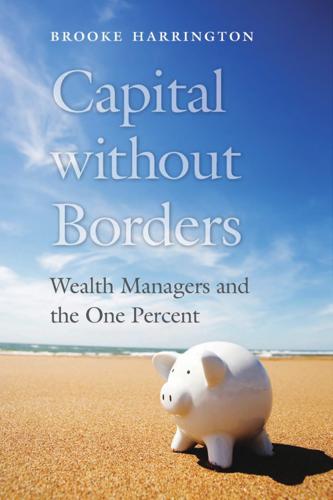
Capital Without Borders
by
Brooke Harrington
Published 11 Sep 2016
In the United States, the belief that “big government” has failed or that private programs are more effective and efficient than their public sector counterparts has led some high-net-worth families and individuals to use philanthropic trusts and foundations to address social problems such as education and poverty, without public accountability and often with mixed results.55 In less developed countries, wealthy philanthropists have stepped into what they see as a governance gap, bypassing the public sector in the belief that it is incompetent or inefficient. This has created the perception in some developing states that a kind of neoimperial agenda is being advanced in the guise of charity. For example, sponsorship of malaria research by the Bill and Melinda Gates Foundation has been characterized as a “cartel” that undermines national institutions in developing countries, with “dangerous consequences on the policy-making process in world health.”56 Development and the postcolonial conundrum To questions this chapter might raise about whether wealth managers support or undermine state authority, all the answers seem to be yes; the impact depends on which states are involved, and when.
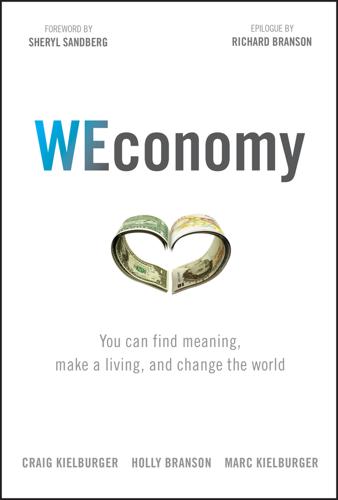
WEconomy: You Can Find Meaning, Make a Living, and Change the World
by
Craig Kielburger
,
Holly Branson
,
Marc Kielburger
,
Sir Richard Branson
and
Sheryl Sandberg
Published 7 Mar 2018
And increasingly, business people want to create companies that do good. Elon Musk could have sat on his PayPal fortune and never been heard from again. But he wanted to change the world for the better—and so we have Tesla and SolarCity and talks of colonizing Mars. Bill Gates could still be rolling out Windows updates, but instead we have the Bill and Melinda Gates Foundation. The Most Connected Time in History The past four decades have seen unprecedented leaps forward in the dissemination and availability of information. CNN, the first network to run a 24-hour news cycle, launched in 1980. Now we have FOX, BBC, MSNBC, Al Jazeera, and countless other networks bombarding us with an endless stream of problems from around the globe.

An Ugly Truth: Inside Facebook's Battle for Domination
by
Sheera Frenkel
and
Cecilia Kang
Published 12 Jul 2021
On the morning of the sixth, Stamos was escorted to a soundproof room to appear before a special, three-member audit committee whose members were pulled from Facebook’s full board and were dedicated to governance and oversight, including security and privacy issues. The three members were Marc Andreessen; former chief of staff to President Bill Clinton, Erskine Bowles; and Susan Desmond-Hellmann, an oncologist and chief executive officer of the Bill and Melinda Gates Foundation. They sat at a table with Stamos at the head; Schrage and Stretch were also present. Over the course of an hour, using a deck he printed out and distributed to the three board members, Stamos ran through the security team’s findings. The board members remained largely silent, speaking only when they wanted Stamos to slow down or explain something in greater detail.
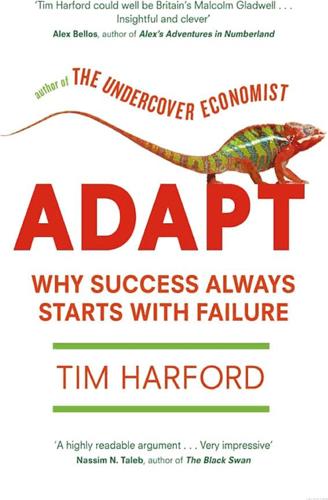
Adapt: Why Success Always Starts With Failure
by
Tim Harford
Published 1 Jun 2011
(Not everybody responds to such incentives. The first such prize was awarded to the reclusive Russian genius Grigory Perelman. He ignored it.) But all these prizes are dwarfed by an ambitious scheme that promises to unleash the true potential of innovation prizes. Five national governments and the Bill and Melinda Gates Foundation have put $1.5 billion into a prize called an ‘advanced market commitment’ to reward the developers and suppliers of a more effective vaccine against pneumococcal diseases such as pneumonia, meningitis and bronchitis. The reason a prize is needed is because even with a patent, no pharmaceutical company could expect to reap much reward from a product that will largely benefit the very poor.
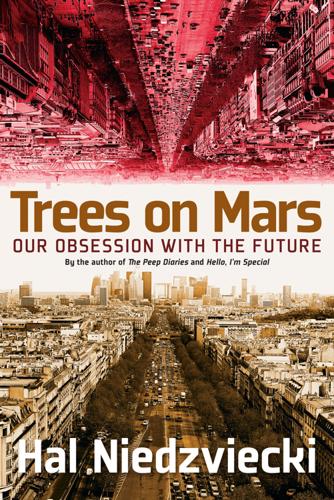
Trees on Mars: Our Obsession With the Future
by
Hal Niedzviecki
Published 15 Mar 2015
Then there’s exhibit three—organizations and ad hoc groups following XPrize’s example by problem solving via high-tech development achieved outside of the traditional institutions. These groups aren’t sitting around waiting for the government to get its act together. The pools of money being directed by the “innovative” tech sector working largely outside of academia and government are becoming something more like a decent-sized lake. The modestly named Bill and Melinda Gates Foundation famously offered a Reinvent the Toilet Challenge, doling out $400,000 in prize money in 2011 for a toilet that could bring sanitation for the 2.5 billion people in the world without access to electricity and running water.7 They have also partnered with the XPrize to offer a prize for an effective means of diagnosing tuberculosis in the developing world.

The Key Man: The True Story of How the Global Elite Was Duped by a Capitalist Fairy Tale
by
Simon Clark
and
Will Louch
Published 14 Jul 2021
Agency for International Development’s investment in Abraaj fund for, 98 U.S. attempts at stabilization of, 59, 65 U.S. support of military dictator in, 14 Pakistan Banking Council, 15 Palestine, 72, 77–78, 90, 197–98 Parasie, Nicolas, 5, 260 Participant Media, 129 partnership capital, 106, 193 patient capitalism, 87 Patterson, Anne, 64 Pearl, Daniel, 58 Pearl Initiative, 104, 159–60 Peres, Shimon, 78 philanthrocapitalism, 42, 191 Polman, Paul, 45, 222 Ponzi, Charles, 156 Ponzi schemes, 7, 156–57 poverty programs Arab Spring and, 82 of Bill and Melinda Gates Foundation, 164 CDC Group and, 92–93, 94 emerging markets and, 45–46, 91–93 Arif Naqvi’s involvement in, 2, 6, 46, 83, 91–92, 149–50 Barack Obama on, 74–75 poverty conference in Italy, 85–88 C. K. Prahalad on, 45–46 of United Nations, 2, 147–49, 152 Powell, Colin, 35 Prahalad, C. K., 45–46, 203 Presidential Summit on Entrepreneurship, 74–76, 78, 81 PricewaterhouseCoopers, 93, 262, 263, 294 Pritzker, Penny, 263–64 Pritzker family, 87 private equity Abraaj Group as model of, 35, 39, 43, 139–40, 143, 192, 199 emerging markets and, 92–93 executive compensation and, 112 “first close” and, 178 industry rules of, 151, 293 investment firms involved in leveraged buyouts, 22–23 Arif Naqvi on, 106, 135, 147, 149, 193, 218–19 positive social change and, 69 reputation of, 23 secrecy surrounding deals, 126, 293 Project Dido, 192 Project Uzima, 170 Proparco, 182, 226–27, 232 Public Institution for Social Security (Kuwaiti government pension fund), 35, 195, 225, 260 Qatar, 159 Raasta (superyacht), 3, 144–45, 242 Rajaan, Fahad al-, 35 Rajaratnam, Raj, 95, 110 Ramamurthy, Pradeep, 81 Rania (queen of Jordan), 35, 78, 137 Rasmala Partners, 27–29, 31–34, 47, 51, 187 Ratanasuwan, Burachat, 138 Rawalpindi, Pakistan, 58–59 Razak, Najib, 110, 255 Reuters, 244 Riyada Ventures, 73, 78, 79 Roberts, George, 23 Rockefeller, John D., 41, 85–86, 89, 101 Rockefeller Foundation, 85–88, 91 Rostand, Tom, 226–27 Rottenberg, Linda, 100 Royal Philips Electronics, 172, 178, 180 Rubenstein, David, 23, 208 Rudd, Amber, 239 Rudd, Roland, 239 Sacks, Michael, 264 Saham Finances, 159, 160, 162, 188, 192 Saraf, Shirish Abraaj Group and, 34–38, 50–51, 53, 59, 60 EFG Hermes deal and, 49, 50 encounter with angry mob, 47 Memo Express and, 23, 38 Arif Naqvi’s Aramex deal and, 27–29, 31, 34 Arif Naqvi’s friendship with, 23–24, 32–33, 36, 50, 51 success of, 283 Sarmaya, 268 Saudi Arabia, 16–17, 27, 59, 74, 209 Sawiris, Naguib, 79–80, 83 Sawiris, Nassef, 53 Sawiris family, 48, 53, 80 Schechman, Paul, 281 Schmidheiny, Thomas, 104, 229, 263, 289 Schmitt, Georg, 180 Schwab, Klaus, 44, 78, 199, 291 Schwarzman, Stephen, 23, 27 Sender, Henny, 208–9 September 11, 2001 attacks, 4, 26, 71, 108, 216, 271 Sewing, Christian, 236 Shafi, Meesha, 190 Shah, Raj, 75 Shakespeare, William, 10, 24, 36, 134 Shanghai Electric, 186–88, 267, 269–70 Shankar, Viswanathan, 137 Sharif, Nawaz, 6, 152–54, 186–87, 190–91, 194, 209, 254, 265 Sharif, Shehbaz, 152, 153, 154, 186, 254 Shihabi, Ali, 27–29, 31–34, 37, 47–48, 51, 187–88, 274, 291 Shinawatra, Thaksin, 51 Shred It, 267 Shroff, Firoz, 15–16 Siberell, Justin, 64–65 Sicre, Fred, 45 Siddique, Waqar (brother-in-law of Arif Naqvi) accounting at Abraaj and, 54, 158, 159, 162, 185, 246 Bisher Barazi and, 245, 246 Andrew Farnum and, 228 indictment of, 281 loyalty to Arif Naqvi, 106 Arif Naqvi’s cash payments to, 286 relationship to Arif Naqvi, 211, 246 risk management at Abraaj and, 50 on valuations, 210 Siemens, 59 Silverline, 152, 159, 195, 279, 285 Simkins, 260–61 Sisi, Abdel Fattah el-, 128 Skoll, Jeff, 87, 88, 129–36, 292, 294 Slaughter, Anne-Marie, 81 social entrepreneurship, 87, 129–36 Société Générale, 244, 285–86 SoftBank, 194 Soros, George, 87 Sorrell, Martin, 132 South Africa, 174 Southern District of New York, 270 Speechley, Tom, 73, 94, 96, 128, 224–25 Spicher, Edouard, 124–26 Standard Bank, 225–26 Standard Chartered, 137, 285 Stefanel, Matteo, 109, 119 Stengel, Richard, 98 Stock, Jürgen, 142 Sunderland, Julie, 172, 178–79, 217 Supperstone, Michael, 279–81 sustainable-development goals (SDGs), 149 Suzman, Mark, 180 Sweden, 96, 98 Swiss government, 98 Syria, 82–83 Tabaza, Khaldoon, 73, 78–80 Takenova, Ermina, 138 Taliban, 59, 153 Taylor, Elizabeth, 283 Teacher Retirement System of Texas, 288 Teachers’ Retirement System of Louisiana, 213 TED talks, 92 Temasek, 179 Teshkeel Media Group, 79 Texas Retirement System, 213 Thatcher, Margaret, 14 Thomson Medical, 179 Thorne, David, 200 Time magazine, 98 TPG, 143, 179, 211, 216, 218, 263, 294 Trump, Donald, 197, 200–202, 231, 261, 288 Tunisia, 82–83, 192 Tunisie Telecom, 192 Turkey, 45, 55, 74, 117–22, 126, 195, 210 Turkson, Peter, 89–90 Turner, Tina, 42, 248 UBS, 285 U.K. government Abraaj Growth Markets Health Fund and, 4, 182, 229, 265 as Abraaj investor, 3, 291 development finance institutions of, 98 Arif Naqvi’s association with, 116 National Health Service of, 166, 168, 177 Umar, Asad, 268 United Arab Emirates (UAE).

Digital Gold: Bitcoin and the Inside Story of the Misfits and Millionaires Trying to Reinvent Money
by
Nathaniel Popper
Published 18 May 2015
Gox collapse, 309 2014 Bitcoin Pacifica (Lake Tahoe), 346–348 Anoncoin (digital currency), 270–271 Anti-state.org (website), 29 Argentina, 153–161, 182, 240–242, 259, 277–280, 286, 349–353 ASIC (computer chip), 189–190, 259, 329–330 Assange, Julian, 56–57 Athey, Susan, 345 Atlantis, 245 Australia, 44–45, 117, 168, 171 Automated Clearing House (ACH), 133 Avalon (ASIC), 190, 206 Back, Adam, 17–22, 339, 348 Baidu (Chinese search engine), 261–262 bank bailout of 2008, 32, 111 Bank of America, 272 Bates, Richard, 75–77, 115–116 bee-te-bee (Chinese Bitcoin), 255–256 Beijing Summer Olympics (2008), 145 Benchmark Capital, 282, 293, 305 Bernanke, Ben, 266 Bezos, Jeff, 353 Bharara, Preet, 299–300 Bill and Melinda Gates Foundation, 353–355 Bitcoin arrival of Gavin Andresen, 44–47 arrival of Martti Malmi, 29–30 building trust, 24–25, 33, 48, 61–62, 69, 99–100, 279, 315, 339 buying/selling with, 43–44, 82, 119–120, 129–130 changing business model, 236–239 characterization as “cryptocurrency,” 36 comparison to gold, 157–158, 165, 182 comparison to paper money, 219, 286–287 creation and operation of original code, 4–6, 20–24 disappearance of Satoshi Nakamoto, x–xiii hacking and scandals, 91–99 increasing price/value, 38, 66–69, 79, 81–85, 89–91, 131, 175, 180, 184, 193–196, 204–206, 210–211, 250–253, 262–264, 267, 271–275, 284–285 legality/government regulation, 196–198, 251 limitations based upon computers, 347 Mt.
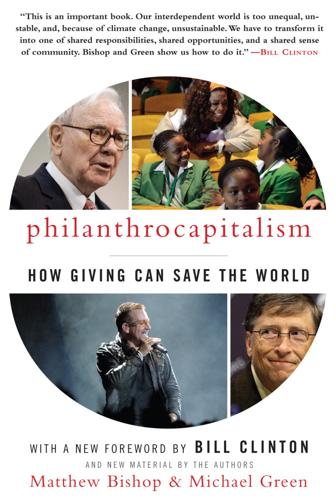
Philanthrocapitalism
by
Matthew Bishop
,
Michael Green
and
Bill Clinton
Published 29 Sep 2008
That was an impressive rate of growth, but the following year Gates and his wife, Melinda, broke all the previous records for philanthropic donations, announcing that they would give away $16 billion. At this point—stage two of his philanthropy becoming businesslike—the foundations moved into an office building, leaving their temporary home in Gates Sr.’s basement. In 1999, the original foundation was renamed the Bill and Melinda Gates Foundation, and the library program was merged into it the following year. The merger was intended to enable the more efficient pursuit of what were by now four missions: improving global health, raising the quality of American education, libraries, and various causes in Gates’s native Pacific Northwest.

Mind in Motion: How Action Shapes Thought
by
Barbara Tversky
Published 20 May 2019
As always, good design is important; we hope we are giving tips on doing just that. Same, of course, holds for prose; good design is crucial. If you prefer stories to data, I have a good one: a very simple diagram that has saved millions of lives. In 1997, the New York Times columnist Nicholas Kristof wrote that a column he had written changed the mission of the Bill and Melinda Gates Foundation from distributing computers to world health. Kristof later found out that it wasn’t his heartfelt prose but rather a simple graphic, designed by Jim Perry. We tracked it down. It was indeed a very simple graphic, mostly words, no bars or lines, just a table with the header Death by Water.
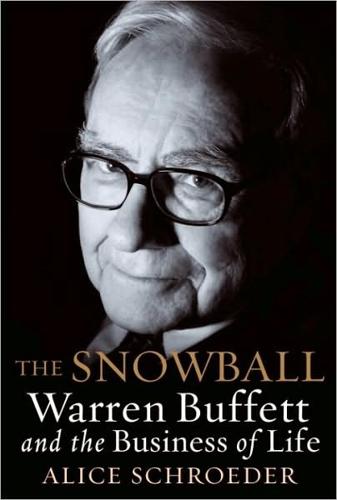
The Snowball: Warren Buffett and the Business of Life
by
Alice Schroeder
Published 1 Sep 2008
Image 91 A scene from Peter Buffett’s Spirit: The Seventh Fire, a show about recovered identity. The Philadelphia Inquirer compared it to a Philip Glass opera, with “guitar rolls that would put U2’s The Edge to shame.” Image 92 Bill and Melinda Gates share a joyful day with Buffett on June 26, 2006, when he announces that he will give most of his fortune to the Bill and Melinda Gates Foundation. Susie Jr. drove off to meet Don and Herbert Allen at the hospital. She knew very well that no one could expect her father to deal with any kind of medical crisis. Big Susie had had a cardiac catheterization in 1997, and Warren got on a plane to go to San Francisco to be with her. When Kathleen Cole called to say that Susie was going to be okay, he turned the plane around in midair and went back to Omaha.
…
But with only a couple of employees, the Buffett Foundation was woefully ill-equipped to ramp up fast enough to give away a billion dollars a year.5 Warren had been giving this problem a lot of thought, and it occurred to him that one way Susie could choose to deal with it was to turn some of the Buffett Foundation money over to the Gates Foundation. The Bill and Melinda Gates Foundation had grown since its establishment in 2000 to a multibillion-dollar philanthropy. Gates said that 4.2 billion people in the world, most of the earth’s population, made less than $2 a day. Yet each of their lives was worth as much as any American’s. These people lived in the here and now, not in some generation far in the future.
…
“This is the best idea you’ve had,” wrote Bertie afterward, “since you pretended to have asthma to get sent home from Fredericksburg.”14 Doris—who knew from her Sunshine Lady Foundation how much work it was to give away even a few million dollars intelligently—thought it was a brilliant decision.15 On June 26, 2006, Buffett announced that he would give away eighty-five percent of his Berkshire Hathaway stock—worth $37 billion at the time—to a group of foundations over a number of years. No gift of this size had ever been made in the history of philanthropy. Five out of every six shares would go to the Bill and Melinda Gates Foundation, already the largest charity in the world, in a historic marriage of two fortunes for the betterment of the world.16 He was requiring that the money be spent as it was given, so that the foundations could not perpetuate themselves. To cushion the shock of losing the money that would someday have made their family foundation the largest in the world, Buffett divided the remaining shares, worth about $6 billion, among his children’s individual foundations, each of which would receive shares worth $1 billion, and the Susan Thompson Buffett Foundation, which would receive shares worth $3 billion.
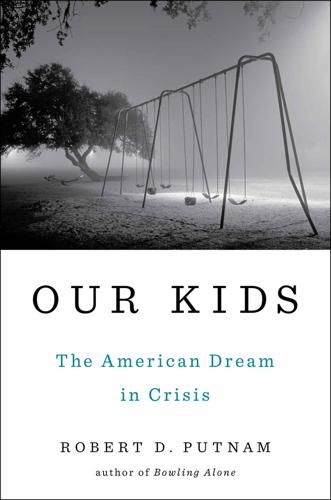
Our Kids: The American Dream in Crisis
by
Robert D. Putnam
Published 10 Mar 2015
In this case we benefited from a consortium of institutions who shared our view that a problem this fundamental to America’s future required both a wide-angle lens (to encompass insights from multiple disciplines and perspectives) and a close-focus microscope (to explore the life experiences of individual kids, their families, and their communities). This roster of generous supporters includes the Spencer Foundation, the Rockefeller Brothers Fund, the W. K. Kellogg Foundation, the Ford Foundation, the Legatum Institute, the Markle Foundation, the William T. Grant Foundation, the Annie E. Casey Foundation, the Bill and Melinda Gates Foundation, the Carnegie Corporation of New York, the Corporation for National and Community Service, and the University of Manchester. Harvard’s Kennedy School of Government (and particularly Dean David Ellwood and Executive Dean John Haigh) have been unfailingly supportive, frequently offering help to assure that the convoy stayed afloat and reached its destination.
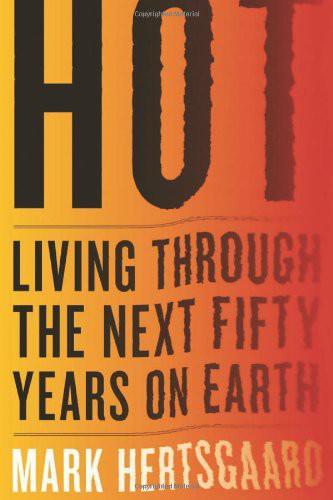
Hot: Living Through the Next Fifty Years on Earth
by
Mark Hertsgaard
Published 15 Jan 2011
Critics say Monsanto—which is the world's largest seed company and enjoys monopoly power in many of the markets where it operates—is exploiting its market power to take unfair advantage: prohibiting the saving of seeds, after all, forces farmers to buy new ones every year. Needless to say, Key did not mention any of this to the IAMA audience. He spoke instead about how Monsanto was collaborating with the Bill and Melinda Gates Foundation and the Warren Buffett Foundation to create an initiative called Water Efficient Maize for Africa. Under WEMA, Monsanto would share its technology with farmers in South Africa, Kenya, Uganda, and Tanzania. On its website, Monsanto claims that WEMA has put drought-tolerant maize on 400,000 acres of land and achieved 25 to 35 percent increases in yield.

Blockchain Revolution: How the Technology Behind Bitcoin Is Changing Money, Business, and the World
by
Don Tapscott
and
Alex Tapscott
Published 9 May 2016
The WEF predicted that within a decade, we could store 10 percent of global GDP on blockchains.71 As an organization, the WEF has championed and advanced big issues, such as income inequality, climate change, and even remittances. Other networked institutions, from the smallest groups to the biggest foundations in the world, such as the Clinton Foundation and the Bill and Melinda Gates Foundation, would be wise to champion this technology to advance such big issues as financial inclusion and health care delivery. Networked institutions often have a role to play in influencing government policy making, making them a critical link and strategic partner in overcoming a number of major showstoppers. 9.

In Spite of the Gods: The Rise of Modern India
by
Edward Luce
Published 23 Aug 2006
A colleague once said to me: “In Africa poverty is a tragedy, in India it is a scandal.”30 He was not implying that Africans are less capable of reaching economic modernity than Indians, simply that India began life as a nation with better institutions and more intellectual capital than its counterparts in Africa. India knows, through having observed what has happened to Africa, about the human tragedy of AIDS. It also knows the damage the disease can do to the economy in terms of crippling the workforce. The Bill and Melinda Gates Foundation has pumped a lot of money into India to assist in AIDS treatment and prevention. In addition, Bill Clinton, the former U.S. president, has committed his presidential foundation to developing AIDS treatment drugs with Indian pharmaceutical companies and making them available to the poor in Africa, India, and elsewhere.

Reality Is Broken: Why Games Make Us Better and How They Can Change the World
by
Jane McGonigal
Published 20 Jan 2011
It’s the first game-based school in the world—but its founders hope it will serve as a model for schools worldwide. Quest opened its doors in the fall of 2009 after two years of curriculum design and strategic planning, directed by a joint team of educators and professional game developers, and made possible by funding from the MacArthur Foundation and the Bill and Melinda Gates Foundation. It’s run by principal Aaron B. Schwartz, a graduate of Yale University and a ten-year veteran teacher and administrator in the New York City Department of Education. Meanwhile, the development of the school’s curriculum and schedule has been led by Katie Salen, a ten-year veteran of the game industry and a leading researcher of how kids learn by playing games.
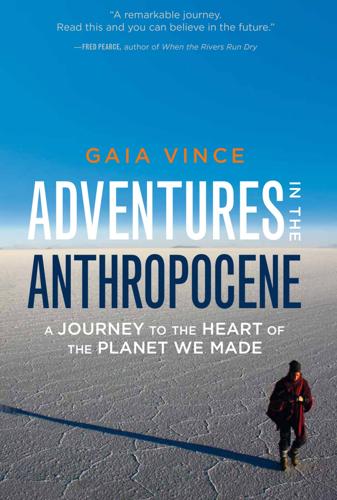
Adventures in the Anthropocene: A Journey to the Heart of the Planet We Made
by
Gaia Vince
Published 19 Oct 2014
In 2006, Okello applied for a government research position working on maize, and ended up getting a job at NaSARRI in the oil crops department, which include sesame, sunflower and peanuts. Two years later, he was awarded a three-year grant from the Alliance for Green Revolution in Africa (the merger between the Rockefeller and the Bill and Melinda Gates foundations) to develop new varieties of high-yielding, drought-tolerant, rosette-resistant peanuts. He puts on rubber boots and we wander outside to see the new peanut crops undergoing final tests in the field. ‘I now have about 500 varieties – until 2016 [when the funding ends] I will be able to release at least two varieties per year.’
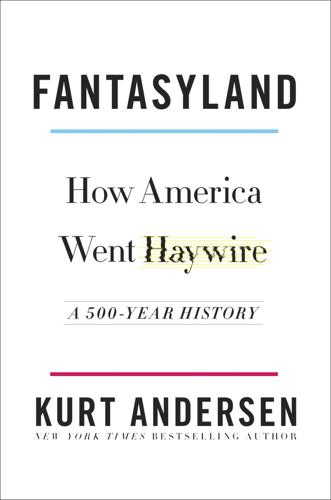
Fantasyland: How America Went Haywire: A 500-Year History
by
Kurt Andersen
Published 4 Sep 2017
Intelligent design had a new blue-chip headquarters in Seattle called the Discovery Institute, a think tank and advocacy group dedicated to “revers[ing] the stifling dominance of the materialist worldview”—that is, science—and “replac[ing] it with a science consonant with Christian and theistic convictions.” The founder recruited a former U.S. senator and Microsoft’s former chief operating officer to join his board, and the Bill and Melinda Gates Foundation gave Discovery multimillion-dollar grants. Nobody can disprove that certain miracles happened thousands or billions of years ago. Human souls distinct from human brains? Who can say for sure? And about supernatural events that might occur in the future, we’ll have to wait and see. But concerning observable, testable matters where plenty of evidence exists—the creation of the Earth, the emergence of life, evolution—science has those covered to a fair certainty
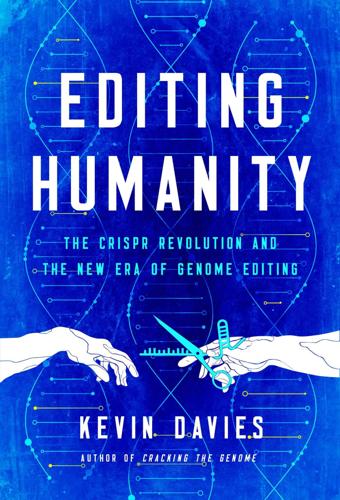
Editing Humanity: The CRISPR Revolution and the New Era of Genome Editing
by
Kevin Davies
Published 5 Oct 2020
A lab accident could devastate the public’s trust in science and governance, setting back gene drives the way the Gelsinger tragedy derailed gene therapy. Moreover, what sort of responsibility does the first community that approves a gene drive test have if subsequent applications go awry?35 Burt leads Target Malaria, a project funded by the Bill and Melinda Gates Foundation. In a basement insectary located somewhat incongruously in South Kensington, thousands of mosquitoes are housed in cubes of white netting in precisely controlled warm and humid conditions. The male flies suck on sugar water, while the females feast on vials of warm blood. Any rogue mosquito that manages to break quarantine by escaping the double steel doors and electronic security—not to mention an electronic mosquito zapper known affectionately as the Executioner—would then face the inhospitable misery of the dank English climate.
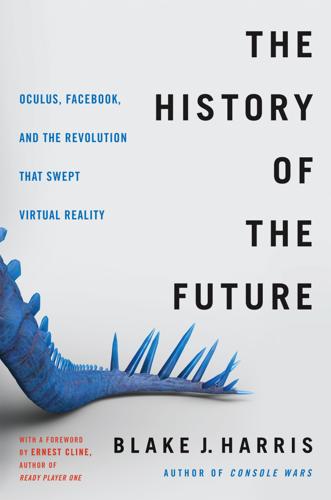
The History of the Future: Oculus, Facebook, and the Revolution That Swept Virtual Reality
by
Blake J. Harris
Published 19 Feb 2019
And so I was there to take Guitar Hero all the way up”—referring to the runaway success of Guitar Hero and its many sequels, and then with a self-deprecating grin Malamed finished by saying, “and then, yup, all the way down”—referring to the bomb of Guitar Hero 5 and all the iterations that came after.3 Tiny moments like that—where Malamed felt the beginnings of a bond with the small group in this room due to his self-deprecation—served as a great reminder that his difference in age was irrelevant in the face of their shared love of games. It had been over a year now since he had left Activision to pursue some the nongaming interests he had missed out on over the years; teaching part-time (at USC), consulting for a charity (the Bill and Melinda Gates Foundation), and training for an upcoming slate of marathons (because he loved running almost as much as making games).4 But as he recounted some of the greatest hits from his Activision days, he realized how much he craved achieving that kind of success again. “Guitar Hero just blew up,” Malamed explained.
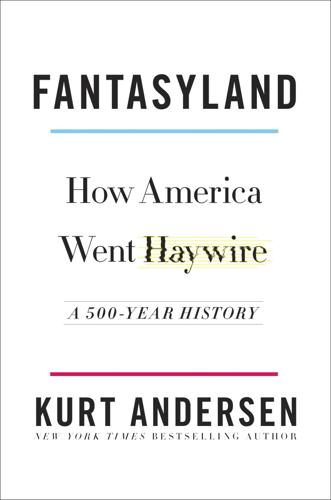
Fantasyland
by
Kurt Andersen
Published 5 Sep 2017
Intelligent design had a new blue-chip headquarters in Seattle called the Discovery Institute, a think tank and advocacy group dedicated to “revers[ing] the stifling dominance of the materialist worldview”—that is, science—and “replac[ing] it with a science consonant with Christian and theistic convictions.” The founder recruited a former U.S. senator and Microsoft’s former chief operating officer to join his board, and the Bill and Melinda Gates Foundation gave Discovery multimillion-dollar grants. Nobody can disprove that certain miracles happened thousands or billions of years ago. Human souls distinct from human brains? Who can say for sure? And about supernatural events that might occur in the future, we’ll have to wait and see. But concerning observable, testable matters where plenty of evidence exists—the creation of the Earth, the emergence of life, evolution—science has those covered to a fair certainty
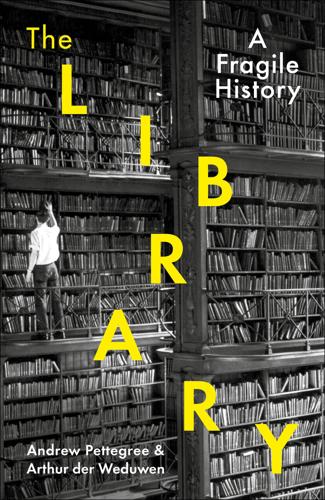
The Library: A Fragile History
by
Arthur Der Weduwen
and
Andrew Pettegree
Published 14 Oct 2021
It also acts as a powerful manifestation of the place of the global south in the future history and development of the library. In the last twenty years this movement has received powerful impetus from the engagement of one of the world’s best-known digital pioneers, Bill Gates. Since 1997, the Bill and Melinda Gates Foundation has poured billions of dollars into libraries, first with a programme to offer free Wi-Fi in all American public libraries, a programme then extended to over fifty countries. The Global Libraries Foundation fixed on public libraries as natural community hubs, often the only places where those with a yearning for education could find an accommodating space, together with a trained and sympathetic staff.
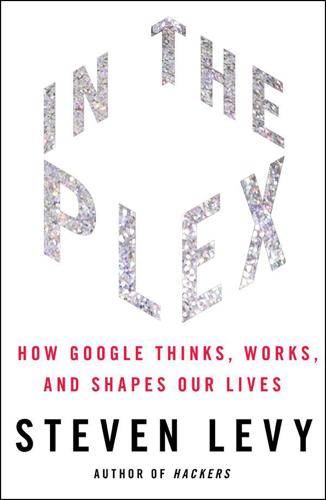
In the Plex: How Google Thinks, Works, and Shapes Our Lives
by
Steven Levy
Published 12 Apr 2011
It worked best when it tapped Google’s unique assets to take on a problem at scale. Its archetypical success story was Google Flu Trends, which data-mined the behavior of search users to quickly locate outbreaks of the disease. At a dinner during the TED Conference in 2009, one early Googler, Lori Park, approached the head of the Bill and Melinda Gates Foundation and asked for his opinion of Google’s efforts. Bill Gates said that DotOrg “is the most publicized foundation in the world, and it’s tiny. Expertise and analysis is this much of what’s needed.” He made a gesture with his thumb and index finger a half inch apart to indicate how insignificant that amount was.

Blueprint: The Evolutionary Origins of a Good Society
by
Nicholas A. Christakis
Published 26 Mar 2019
My agent, Katinka Matson, solidified the focus of the book proposal. My long-standing editor Tracy Behar is fabulous in every way, from sharpening arguments to showing patience; she improves everything she touches. My copyeditors, Tracy Roe and Barbara Jatkola, saved me from much foolishness. Some of my own research in this book was supported by the Bill and Melinda Gates Foundation, the Robert Wood Johnson Foundation, the John Templeton Foundation, Tata Sons Limited, and the National Institute on Aging. Sebastian, Lysander, and Eleni, and now Orien, by their admirable actions, remarkable character, and warm affection, have shown me the meaning of a good life. I dedicated this book to my beloved wife, Erika Christakis, but I will take this further opportunity to acknowledge her beautiful heart and mind, which improved this book immeasurably.
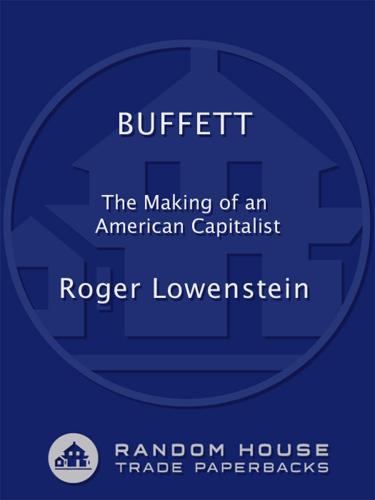
Buffett
by
Roger Lowenstein
Published 24 Jul 2013
Buffett married his longtime companion, Astrid Menks, but the inheritance issue could no longer be postponed. In 2006, Buffett stunningly reversed his intention to hang on to his assets until death—and announced a plan to slowly give away (with annual bequests) 85 percent of his Berkshire stock. Five-sixths of the money will go to the Bill and Melinda Gates Foundation, which is primarily dedicated to fighting disease in the developing world. The rest will go to four family foundations (one that was his and Susie’s and three others, each of which is run by one of the Buffett children). The plan to transfer stock to Gates was a lightning bolt that only Buffett could have conceived of.

Future Crimes: Everything Is Connected, Everyone Is Vulnerable and What We Can Do About It
by
Marc Goodman
Published 24 Feb 2015
Other emerging threats such as bioterrorism, artificial intelligence run amok, autonomous weapons systems, and nanotechnology are all also ripe for incentive prizes, particularly given the potentially existential risk they might pose to the world. Just as the philanthropist Raymond Orteig incentivized civil aviation and Anousheh and Amir Ansari spurred on the commercial space industry, so too can today’s philanthropists make a big difference in our technological security. Look at the amazing feats the Bill and Melinda Gates Foundation has accomplished in fighting HIV, eradicating polio, and supporting education, distributing an amazing $26 billion of Mr. Gates’s wealth since the foundation’s creation. But they are not alone, and there is indeed a new breed of “techno-philanthropists” out there, committed to using their wealth to better the world. eBay’s first president, Jeff Skoll, has worked tirelessly crusading against pandemics and nuclear proliferation, endowing his foundation with nearly $1 billion of his own funds.
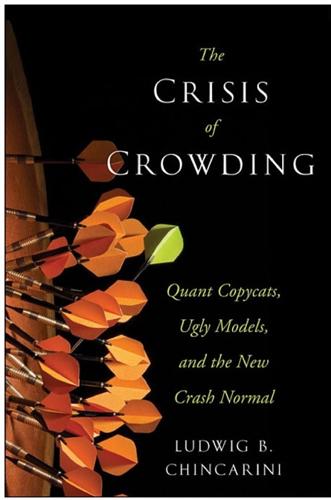
The Crisis of Crowding: Quant Copycats, Ugly Models, and the New Crash Normal
by
Ludwig B. Chincarini
Published 29 Jul 2012
The investment banking industry has helped thousands of corporations finance new projects. It also lets people from all over the world share in company advances, just by purchasing the stock. The private equity industry has also funded thousands of small companies, advancing improvements that benefit everyone. There would be no Google, Apple Computers, Yahoo!, Bill and Melinda Gates Foundation, World Bank, or neighborhood banks without finance. Finance matters. Some people misunderstand finance. Sports fans easily accept star athletes’ high salaries, and customers rationalize Apple Computers’ enormous profits because the iPhone is just so cool. The financial industry offers less obvious benefits, but has also done much to improve society even though it also sometimes engages in excesses.
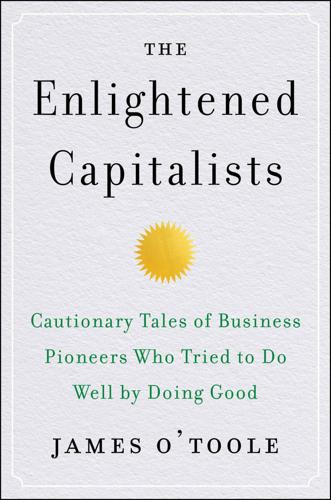
The Enlightened Capitalists
by
James O'Toole
Published 29 Dec 2018
In 2017 he also emerged as an outspoken champion of corporate responsibility with regard to racial justice.52 Perhaps Vagelos’s most lasting legacy is found in the behavior of other major pharmaceutical companies: the publicity surrounding Merck’s Mectizan program encouraged, or perhaps shamed, others in its industry to make drugs affordable—and sometimes free—for people in the developing world. Beginning in 2008, the Dutch Access to Medicine Foundation (funded largely by the Bill and Melinda Gates Foundation) has published a biannual ranking of the twenty largest pharma firms, ranked by the degree to which they make drugs accessible in the world’s 107 poorest countries. For the record, Merck ranked fifth in 2016, up from seventh place two years earlier. When Vagelos reluctantly retired from Merck, he was still vigorous and interested in developing useful drugs.

The Meritocracy Trap: How America's Foundational Myth Feeds Inequality, Dismantles the Middle Class, and Devours the Elite
by
Daniel Markovits
Published 14 Sep 2019
utm_term=.01a53a2035db.For more on philanthropy as a form of political power, see, e.g., Iain Hay and Samantha Muller, “Questioning Generosity in the Golden Age of Philanthropy,” Progress in Human Geography 38, no. 5 (2014): 635–53; Lenore Ealy, “The Intellectual Crisis in Philanthropy,” Society 51, no. 1 (February 2014): 87–96; Kenneth Saltman, “From Carnegie to Gates: The Bill and Melinda Gates Foundation and the Venture Philanthropy Agenda for Public Education,” in The Gates Foundation and the Future of U.S. “Public” Schools, ed. Philip Kovacs (New York: Taylor & Francis, 2011), 1–20; Robin Rogers, “Why Philanthro-Policymaking Matters,” Society 48, no. 5 (September 2011): 376–81; Ben Williamson, “Mediators and Mobilizers of Curriculum Reform: Education Policy Experts of the Third Sector,” paper presented at the University of Stirling School of Education, December 5, 2012; Georgia Levenson Keohane, Social Entrepreneurship for the 21st Century: Innovation Across the Nonprofit, Private, and Public Sectors (New York: McGraw Hill Education, 2013); and Amy Brown, “Philanthrocapitalism: Race, Political Spectacle, and the Marketplace of Beneficence in a New York City School,” in What’s Race Got to Do with It?

MONEY Master the Game: 7 Simple Steps to Financial Freedom
by
Tony Robbins
Published 18 Nov 2014
It’s one of the simplest forms of asymmetric risk/reward, and one that requires a tremendous amount of research, skill, and cash—which is one of the reasons Buffett pursued insurance holdings that throw off great cash flow and thus investment opportunities. Not only has Buffett been phenomenally successful in business, but also he’s become one of the most generous philanthropists in history, pledging 99% of his vast personal fortune to charity through the Bill and Melinda Gates Foundation. He’s also probably the most quotable—and quoted—business leader ever, and you’ve already read some priceless nuggets of his wisdom sprinkled throughout these pages. When I finally had him in the same room with me, I couldn’t resist the opportunity to tell him about this book project.

The Age of Surveillance Capitalism
by
Shoshana Zuboff
Published 15 Jan 2019
“Tech Companies Are Pushing Back Against Biometric Privacy Laws,” Bloomberg.com, July 20, 2017, https://www.bloomberg.com/news/articles/2017-07-20/tech-companies-are-pushing-back-against-biometric-privacy-laws; “Biometric Privacy Laws: Illinois and the Fight Against Intrusive Tech,” March 29, 2018, https://news.law.fordham.edu/jcfl/2018/03/20/biometric-privacy-laws-illinois-and-the-fight-against-intrusive-tech; April Glaser, “Facebook Is Using an ‘NRA Approach’ to Defend Its Creepy Facial Recognition Programs,” Slate, August 4, 2017, http://www.slate.com/blogs/future_tense/2017/08/04/facebook_is_fighting_biometric_facial_recognition_privacy_laws.html; Conor Dougherty, “Tech Companies Take Their Legislative Concerns to the States,” New York Times, May 27, 2016, http://www.nytimes.com/2016/05/28/tech nology/tech-companies-take-their-legislative-concerns-to-the-states.html. 111. Schmidt had joined the board of the New America Foundation in 1999. As of 2013, he was chairman of its Board of Directors, and his financial contribution remained in the top tier, matched by only three other donors: the US State Department, the Lumina Foundation, and the Bill and Melinda Gates Foundation. The secondary level of contributors includes Google. See http://newamerica.net/about/funding. The foundation is a fulcrum in Washington policy discourse, and its board members constitute a who’s who of the policy establishment. See http://newamerica.net/about/board. 112. Tom Hamburger and Matea Gold, “Google, Once Disdainful of Lobbying, Now a Master of Washington Influence,” Washington Post, April 12, 2014, http://www.washingtonpost.com/politics/how-google-is-transforming-power-and-politicsgoogle-once-disdainful-of-lobbying-now-a-master-of-washington-influence/2014/04/12/51648b92-b4d3-11e3-8cb6-284052554d74_story.html. 113.
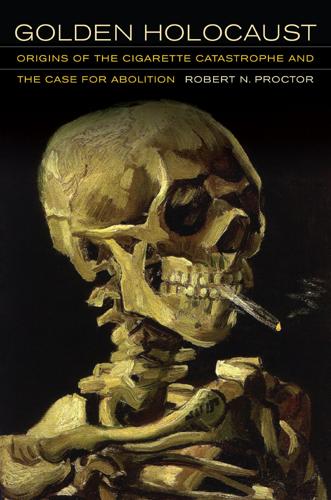
Golden Holocaust: Origins of the Cigarette Catastrophe and the Case for Abolition
by
Robert N. Proctor
Published 28 Feb 2012
We also are fortunate to have dedicated, policy-oriented bodies like Action on Smoking and Health, the American Legacy Foundation, Americans for Nonsmokers’ Rights, Doctors Ought to Care, SmokeFreeMovies, the Campaign for Tobacco-Free Kids, the World Congress on Tobacco or Health, and the State of California’s Air Resources Board and Tobacco Control Program, all actively engaged in clean air advocacy. That battle is far from over; there is much to be done. Philanthropic bodies are also starting to make important contributions, notably the Bloomberg Initiative to Reduce Tobacco Use and the Bill and Melinda Gates Foundation. Governments have often been slow to act to reduce the tobacco toll, which is why grassroots efforts are so vital. The Legacy Tobacco Documents Library represents an unparalleled historical treasure, and one barely probed by historians. I have colleagues who work on slavery; the archives contain over 2,400 documents referencing that topic.